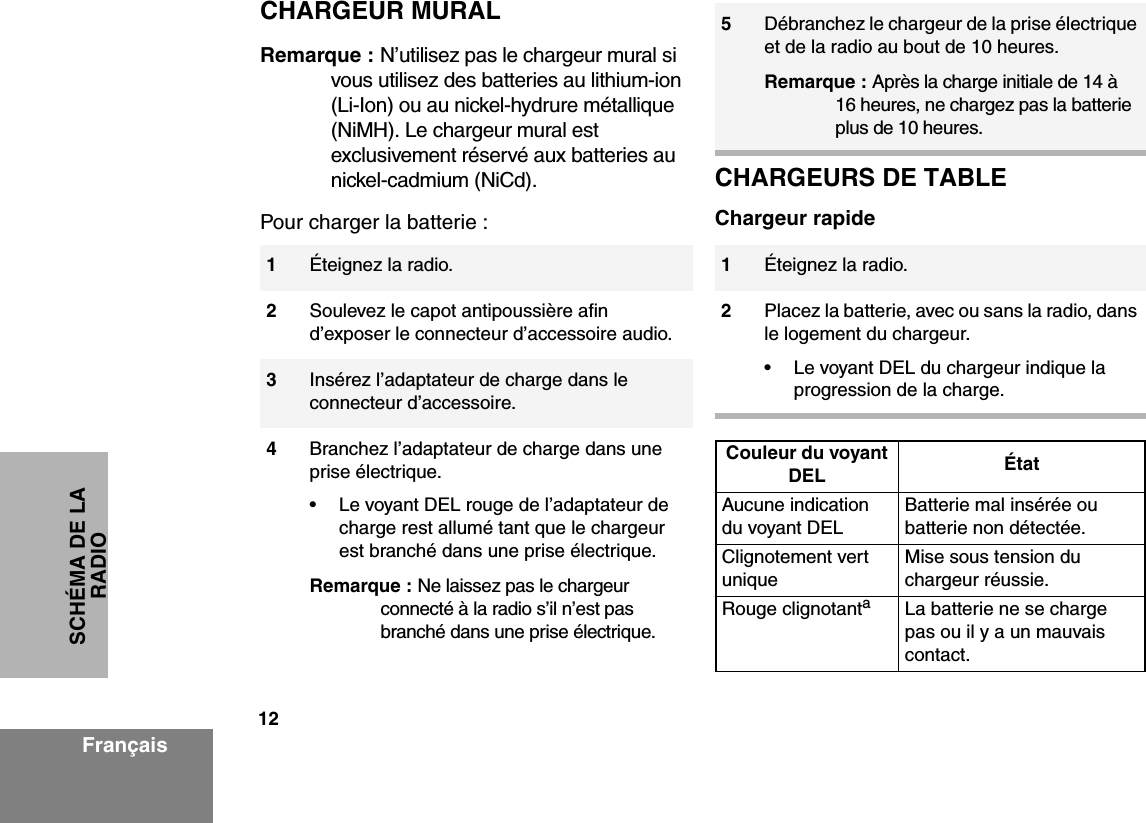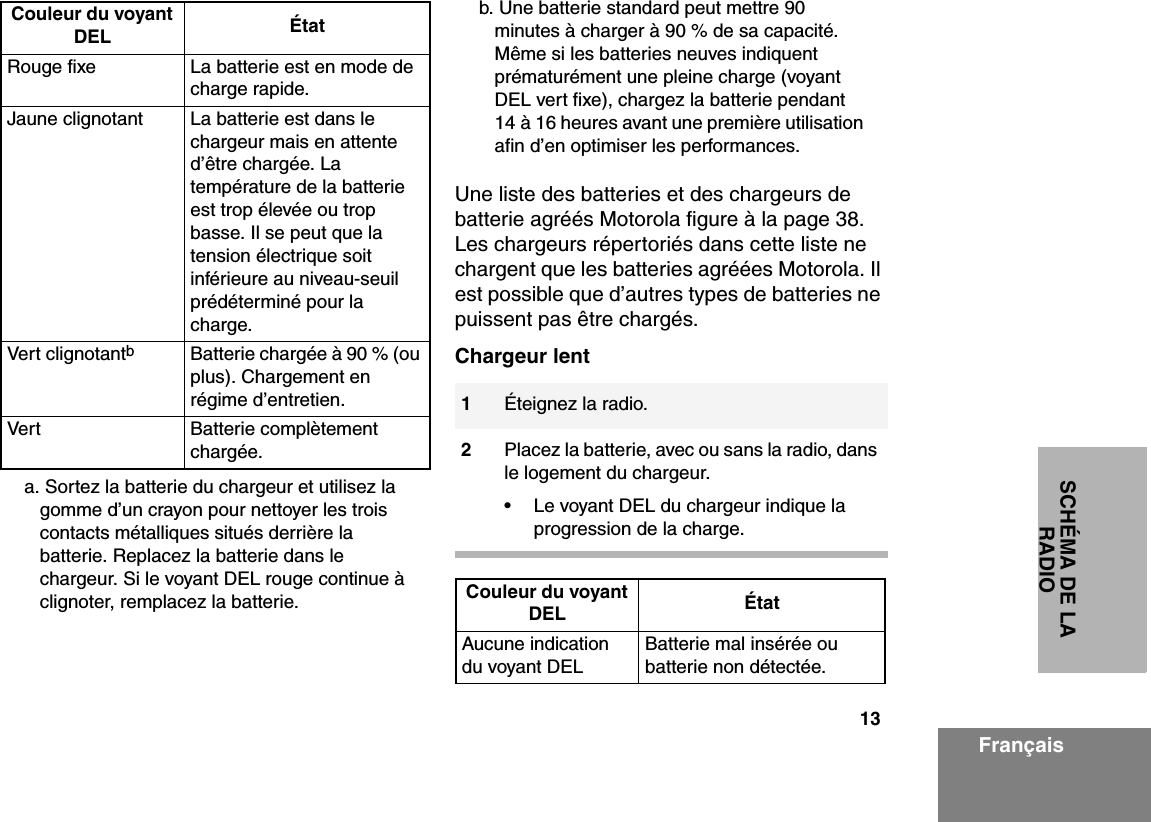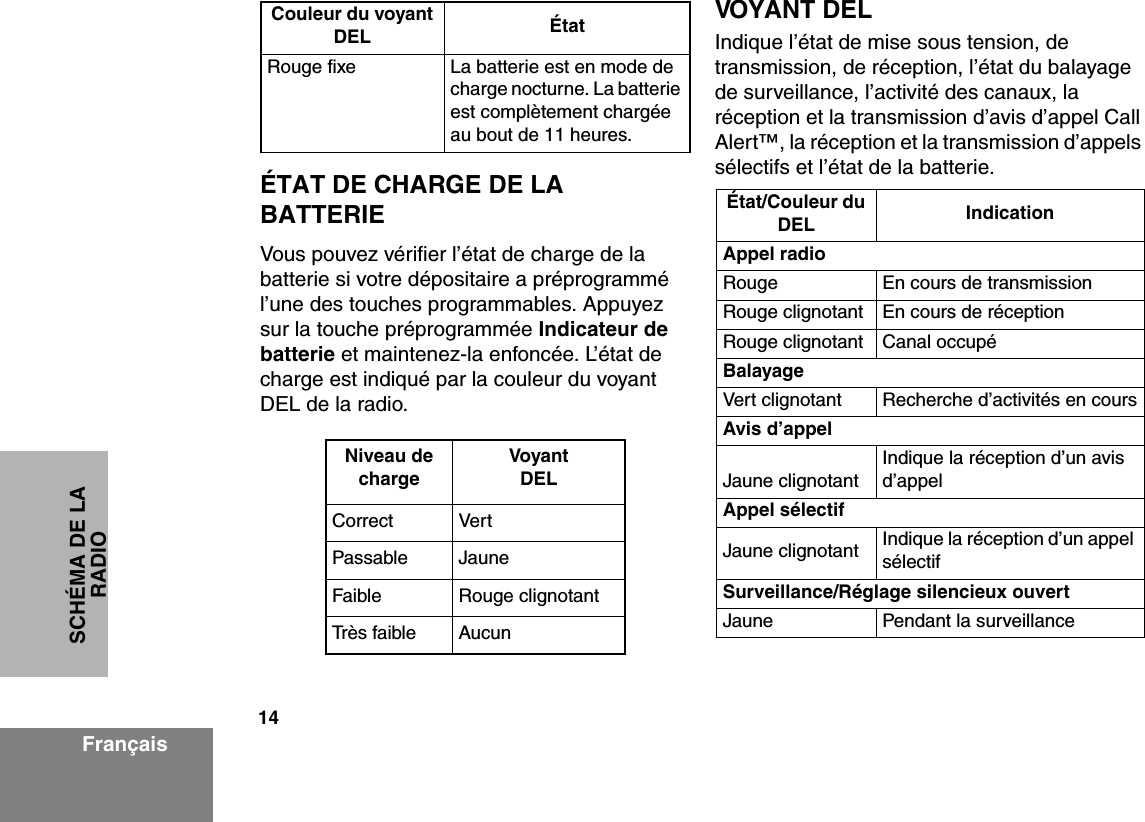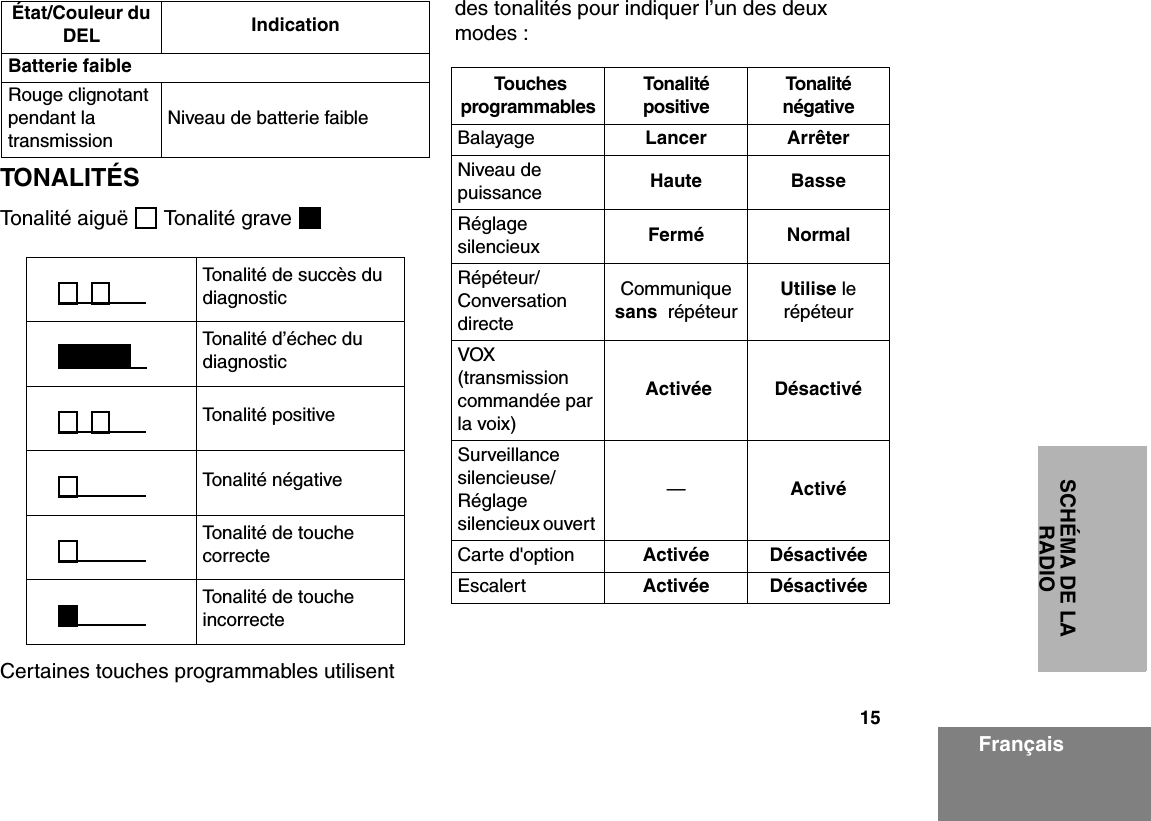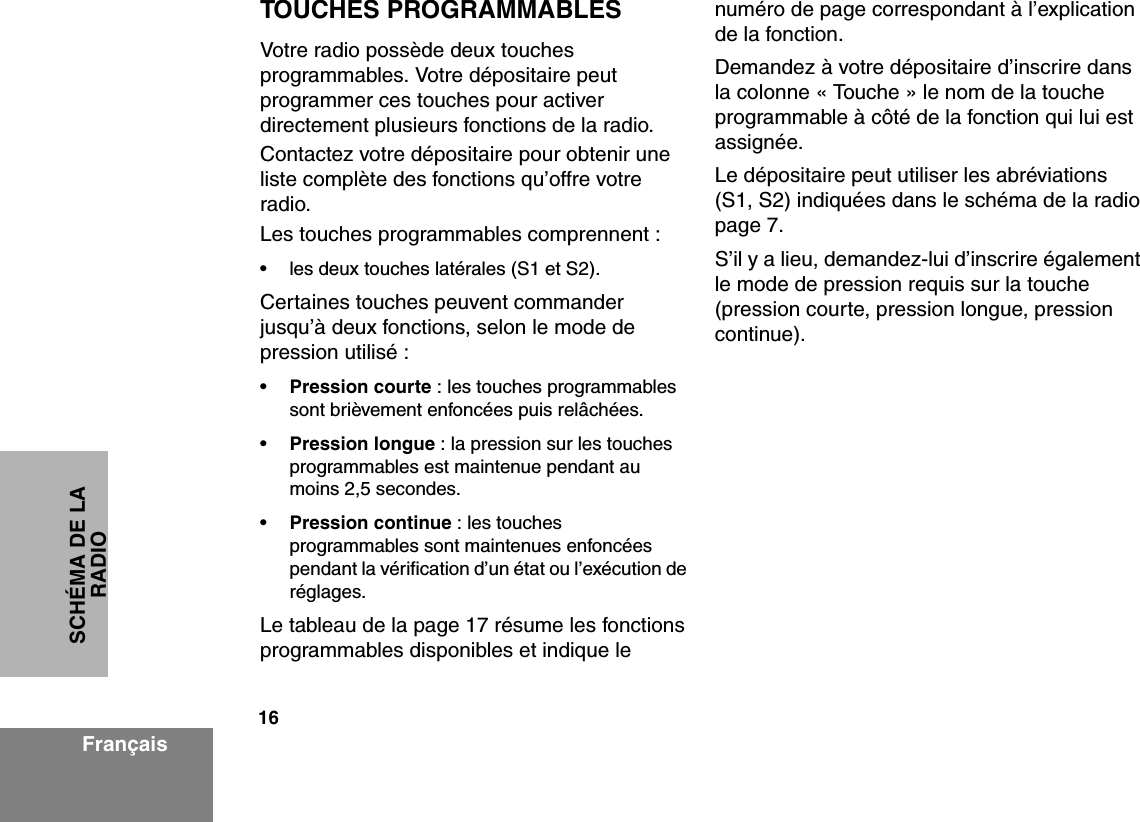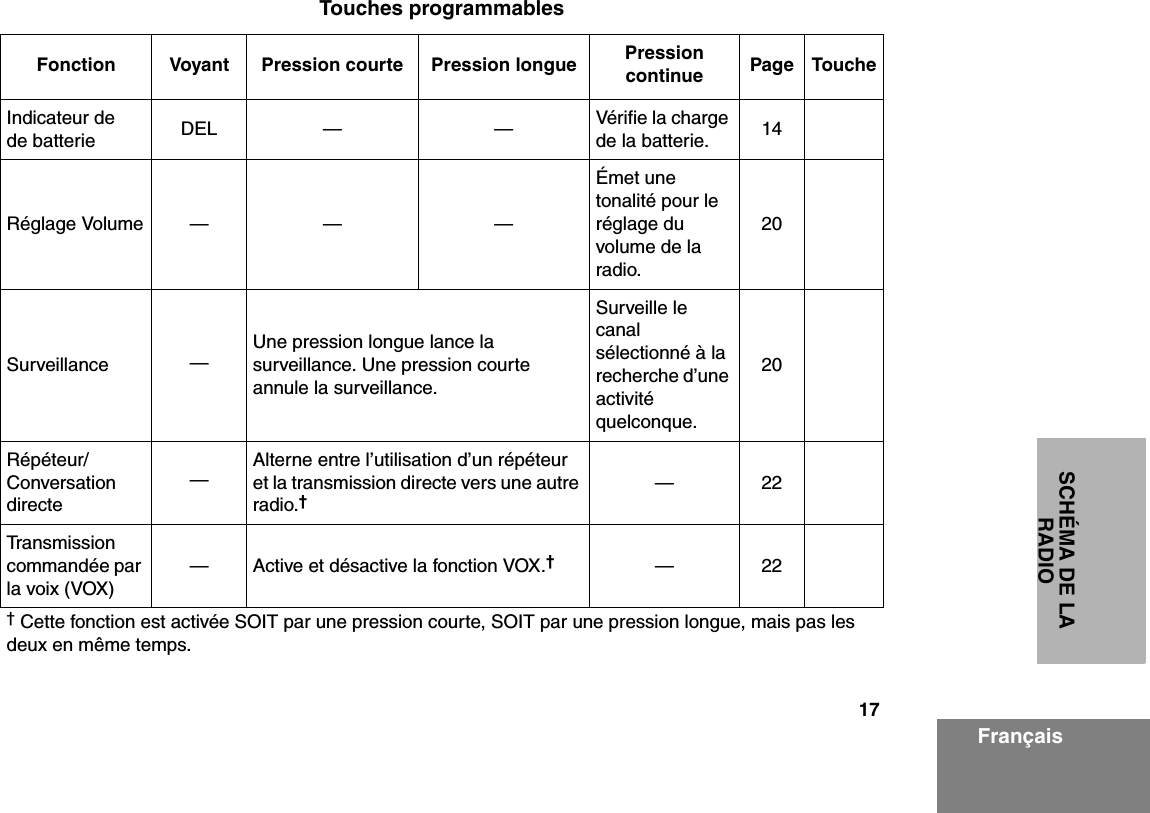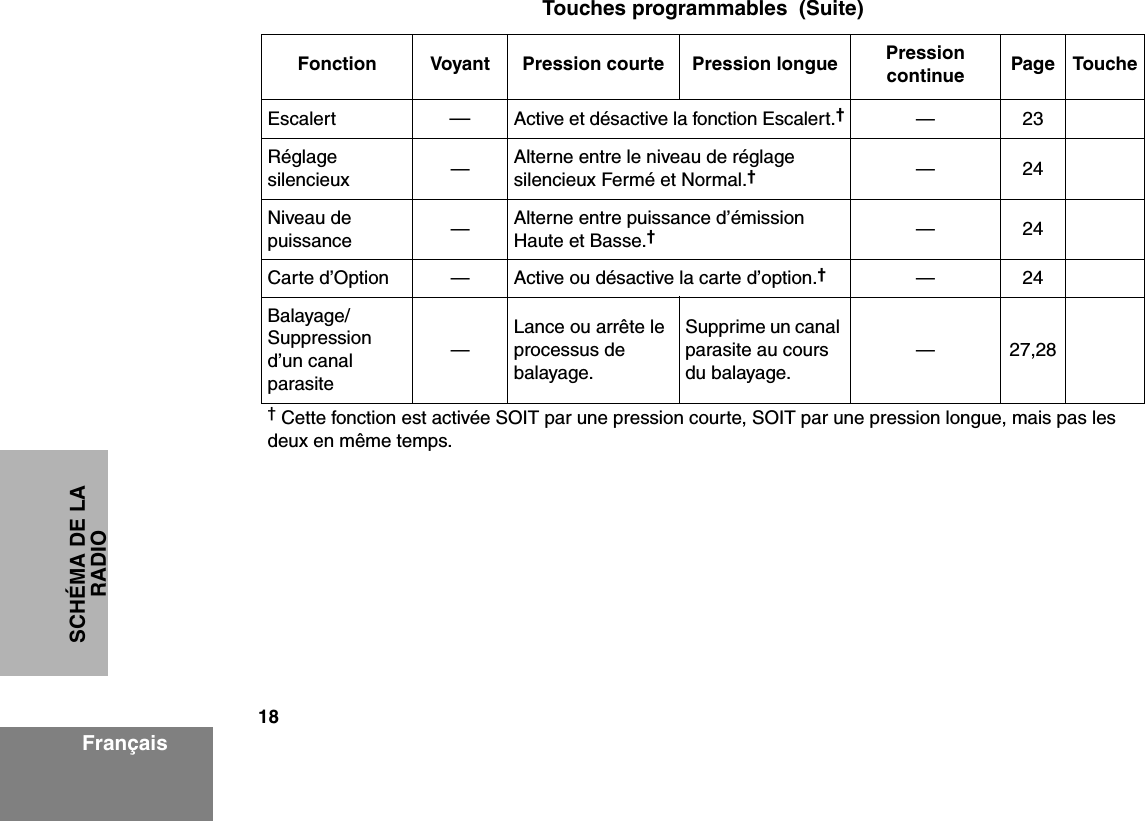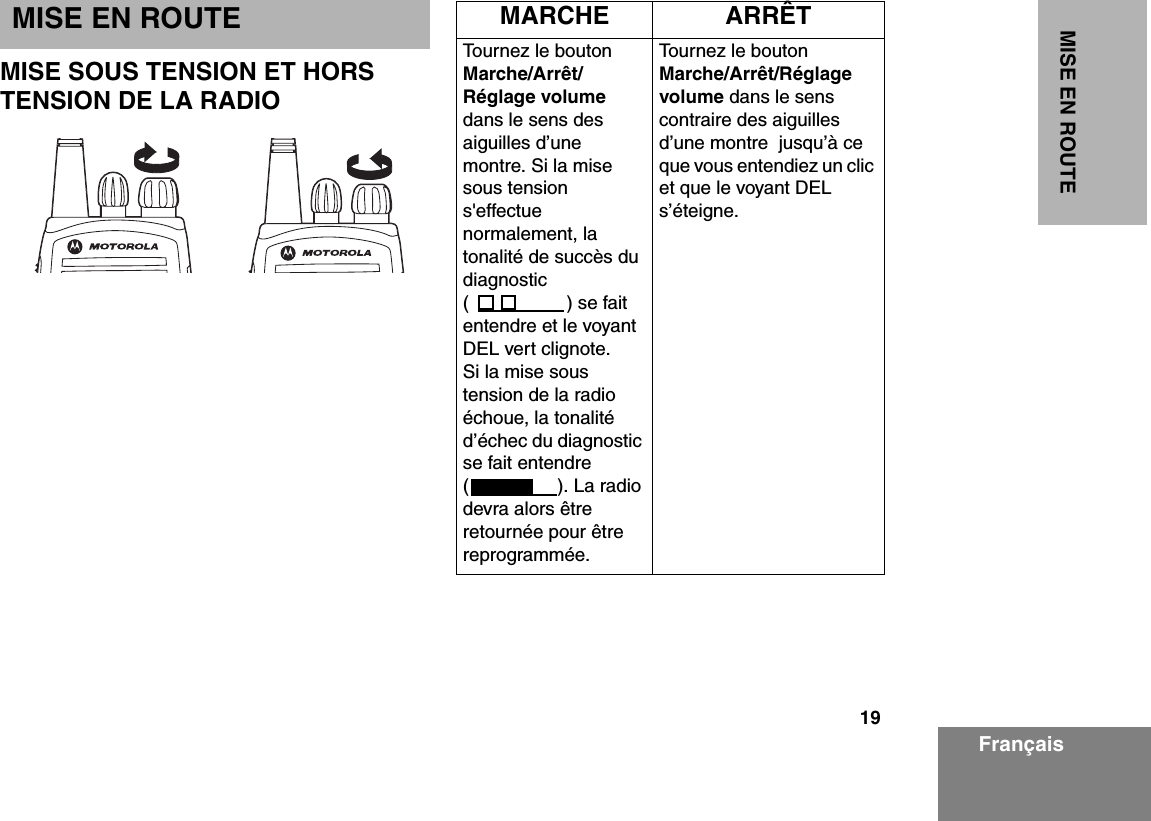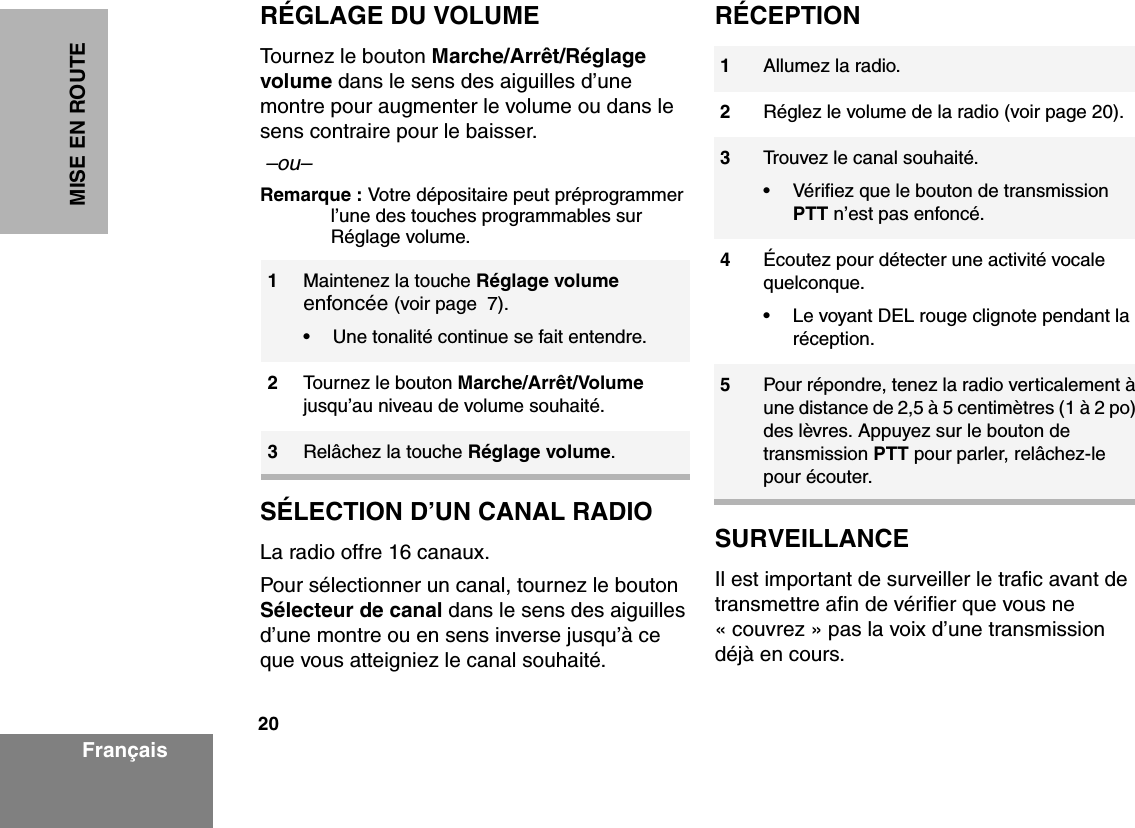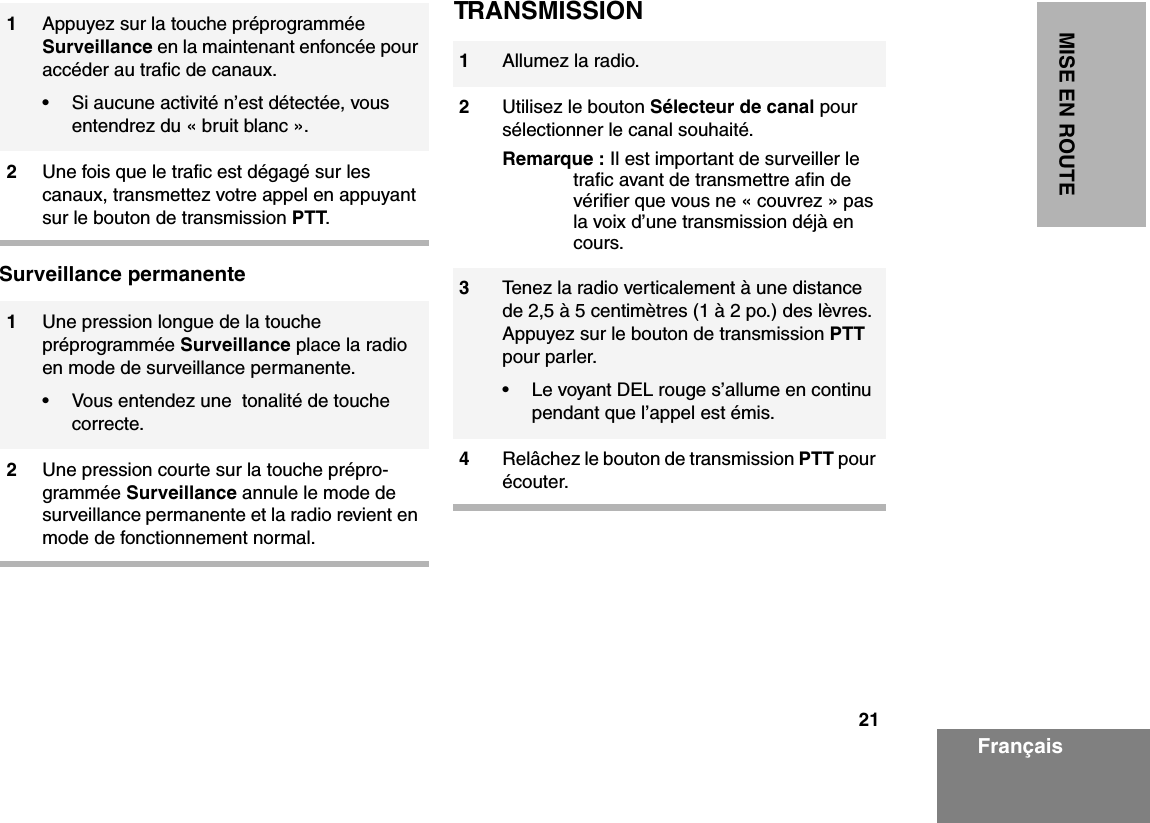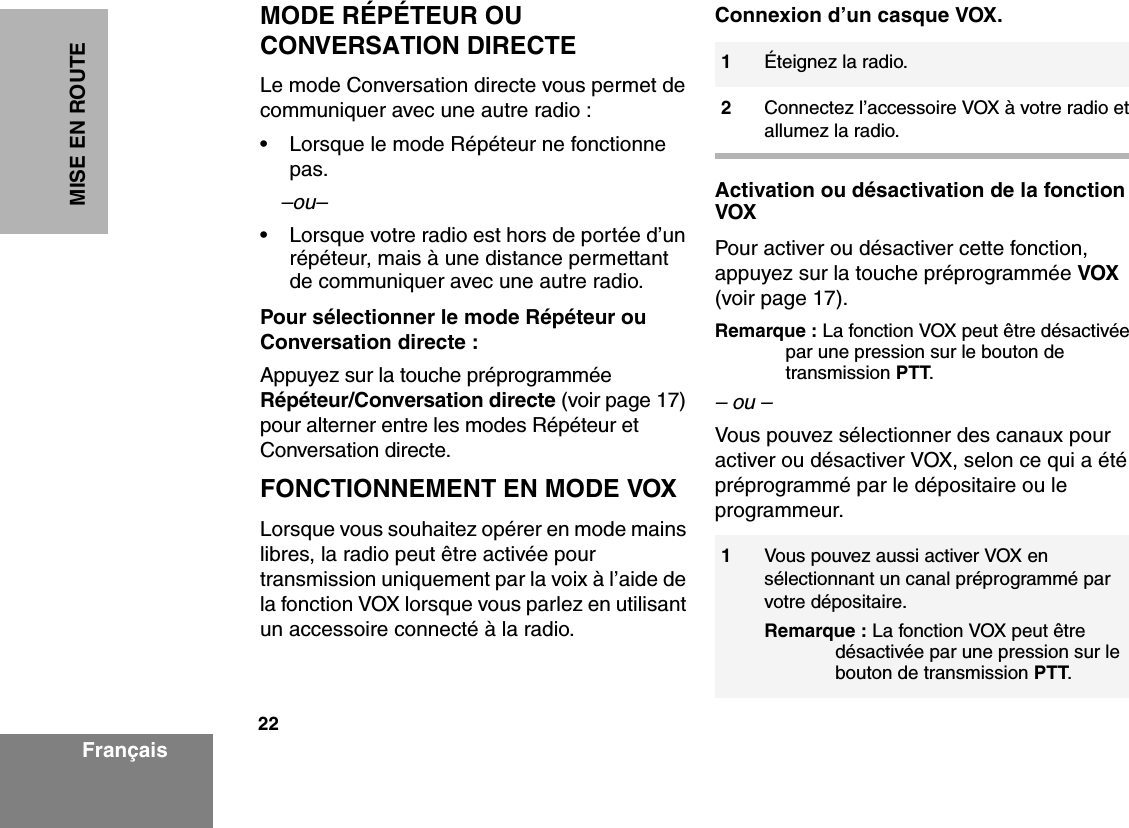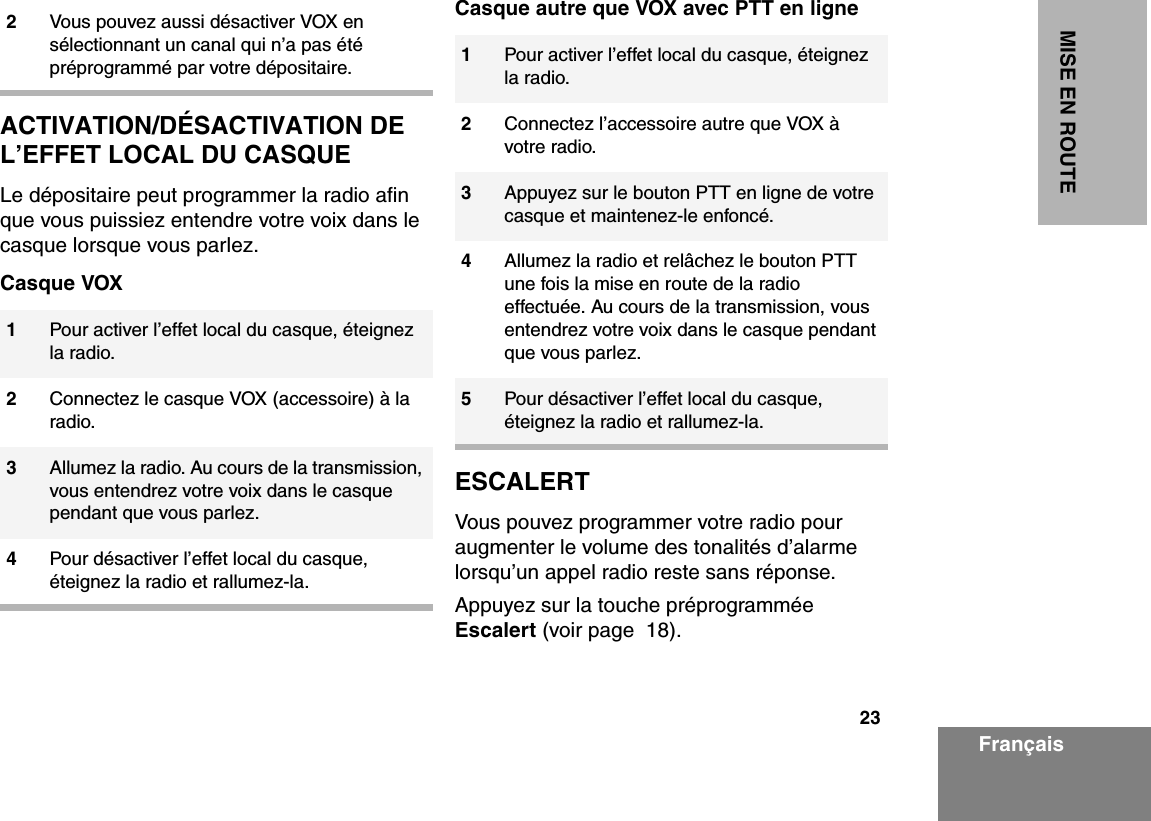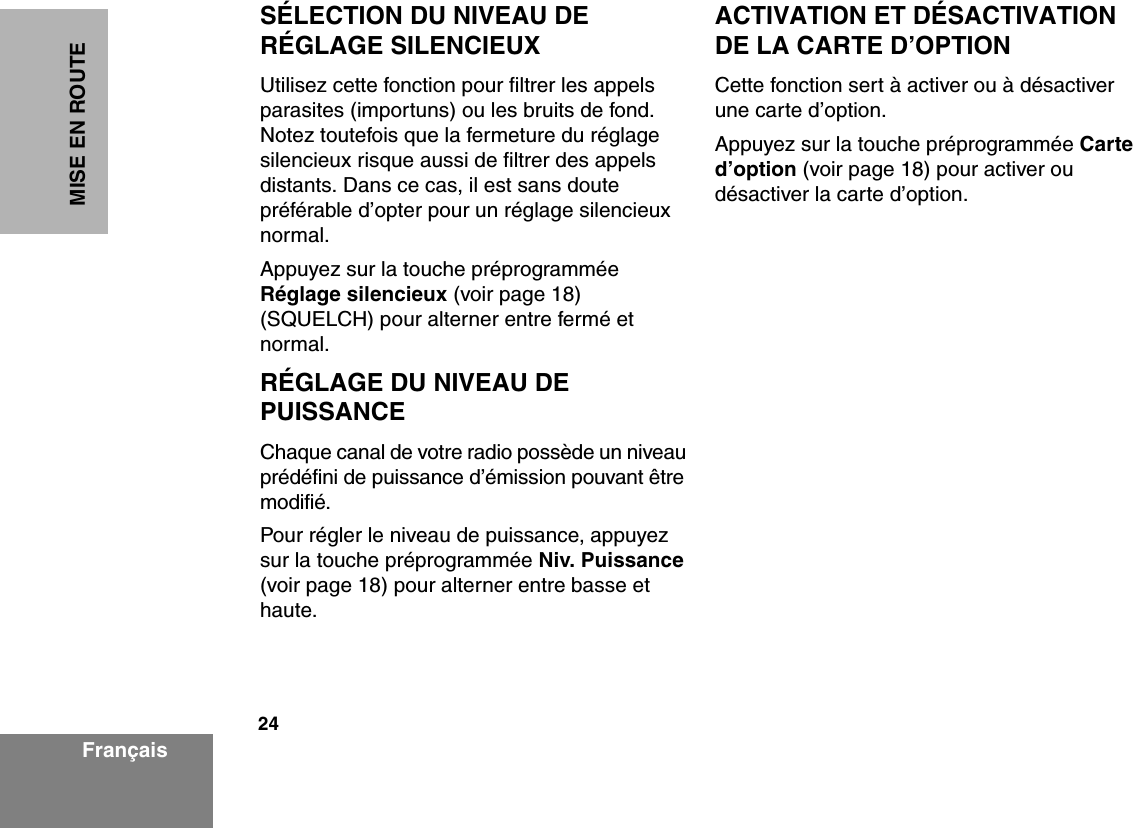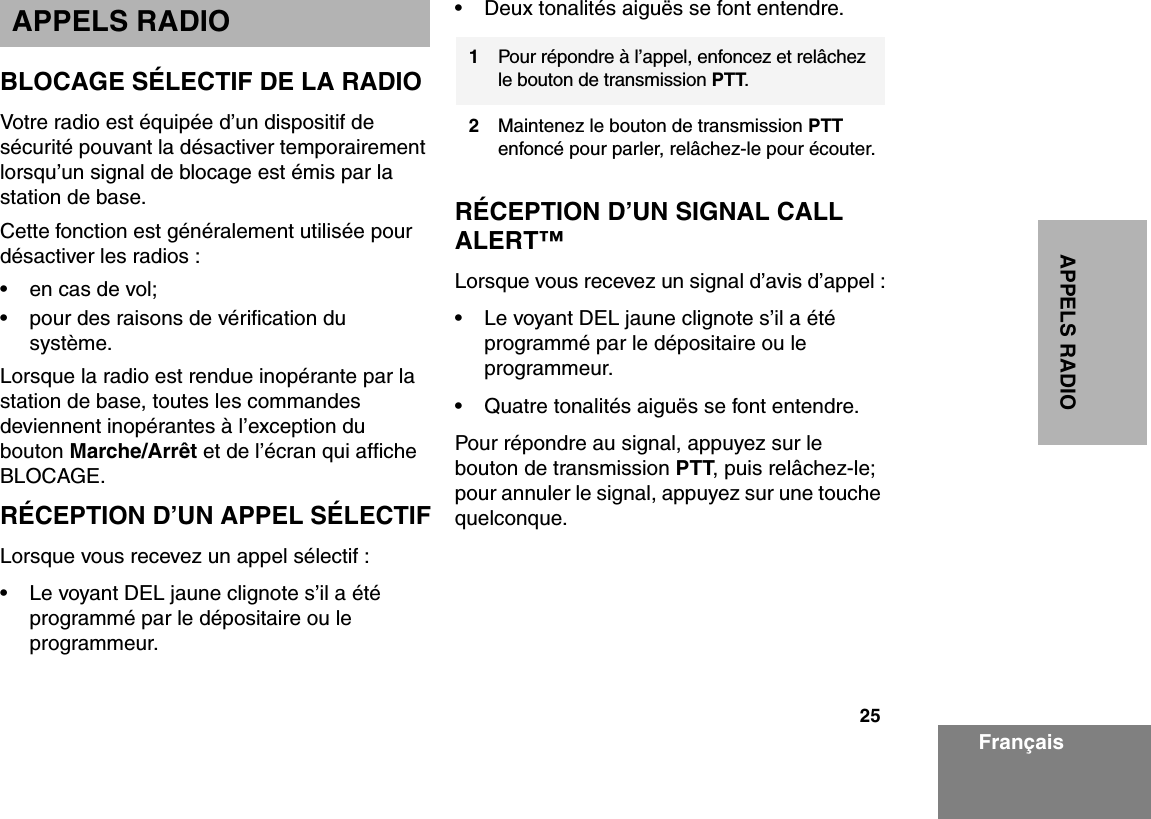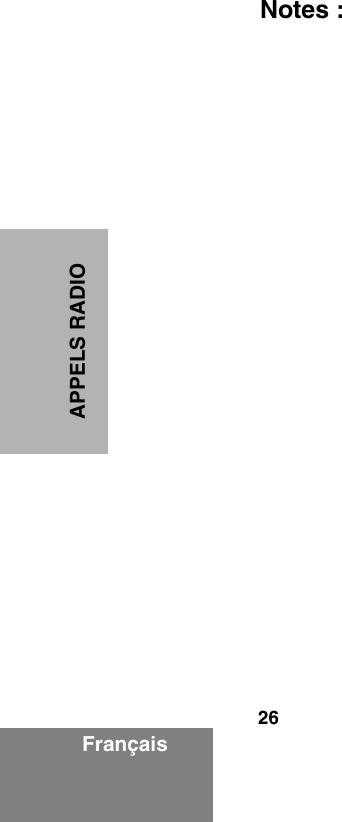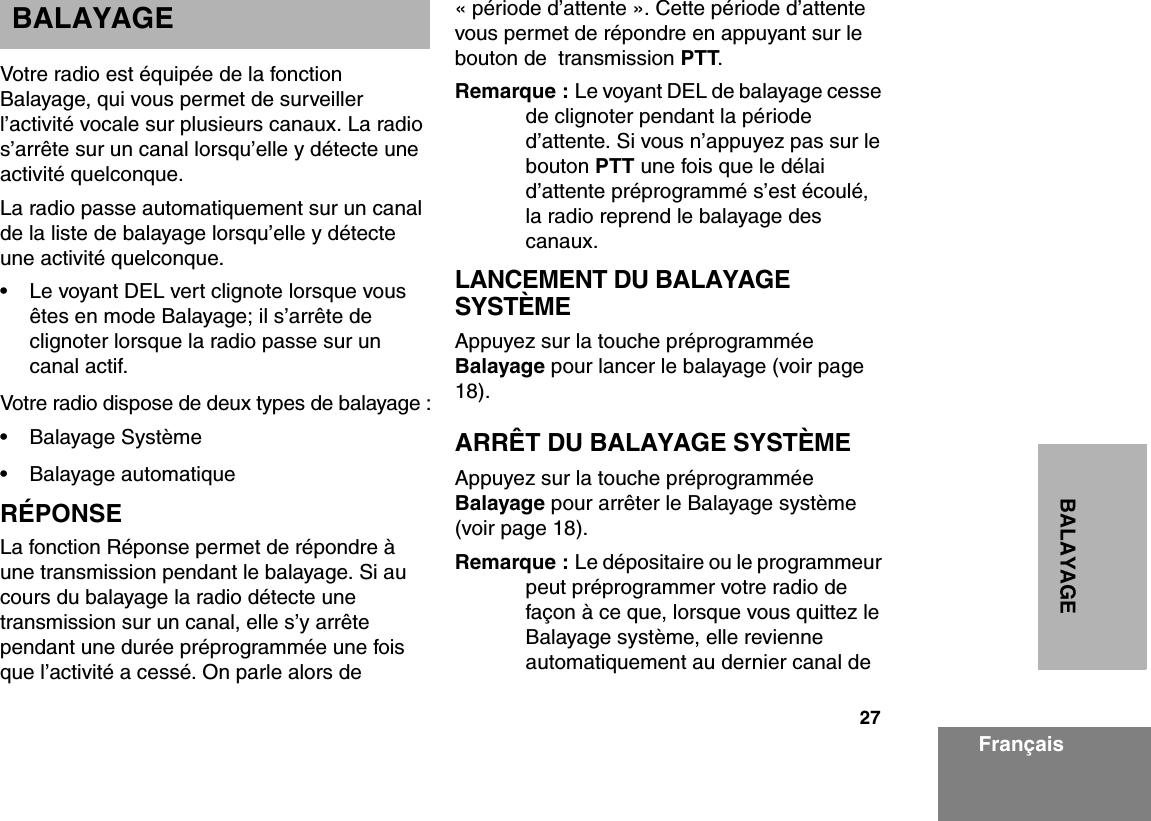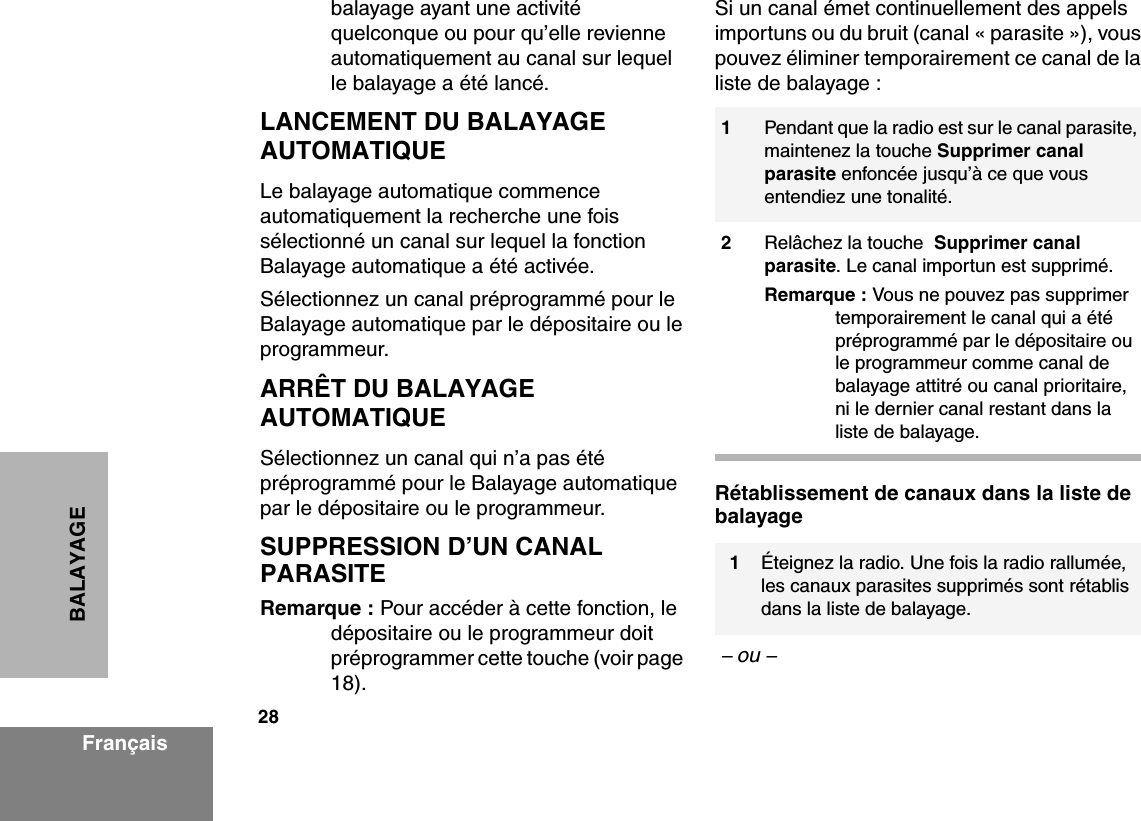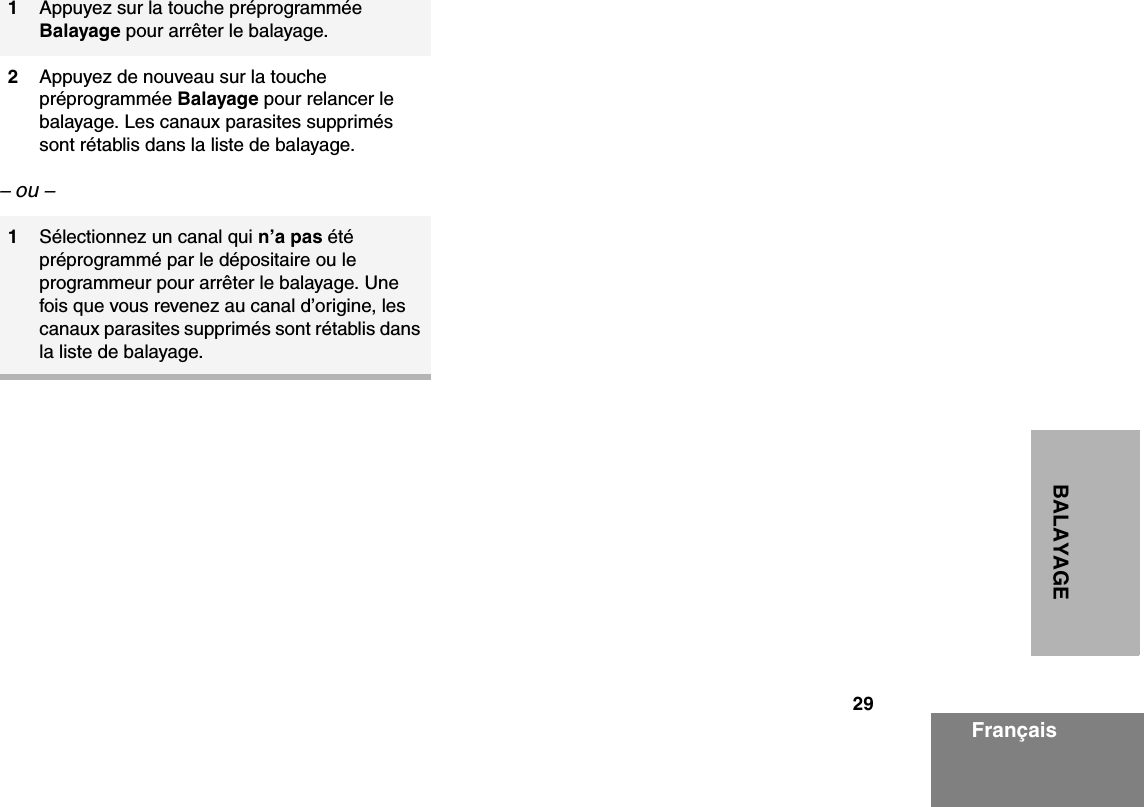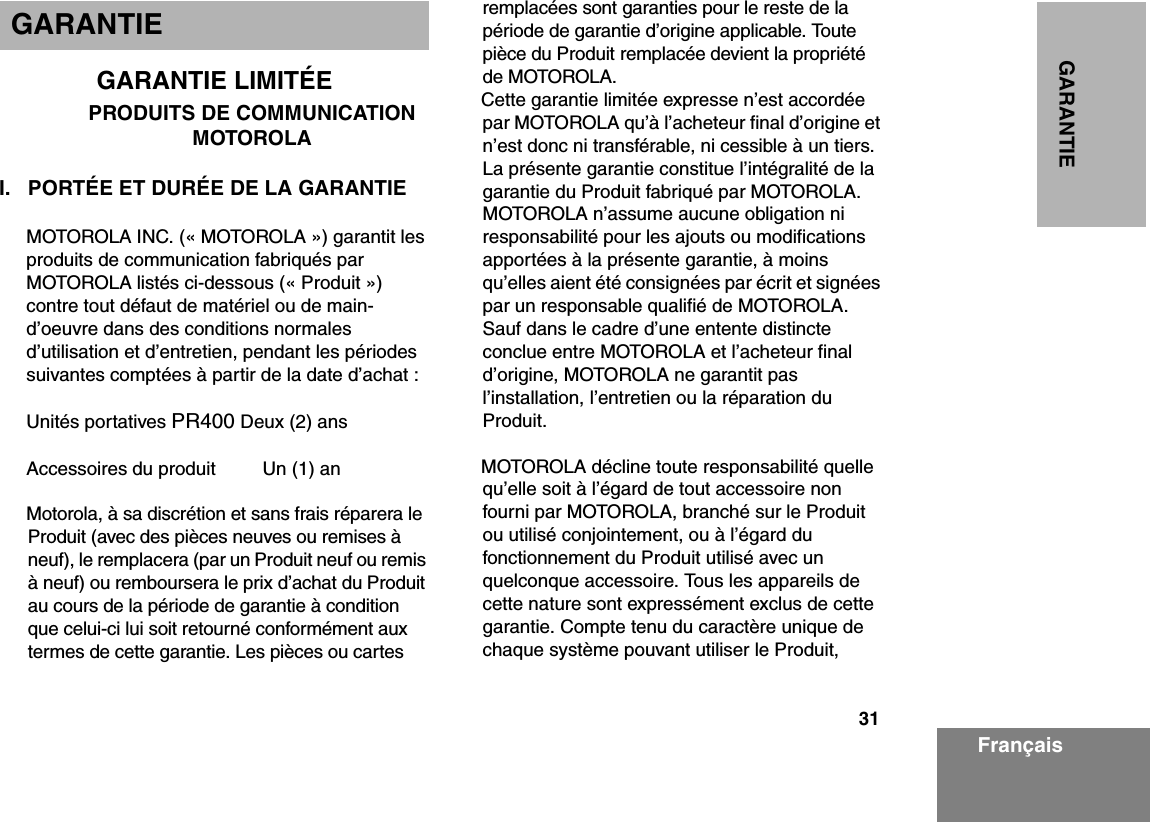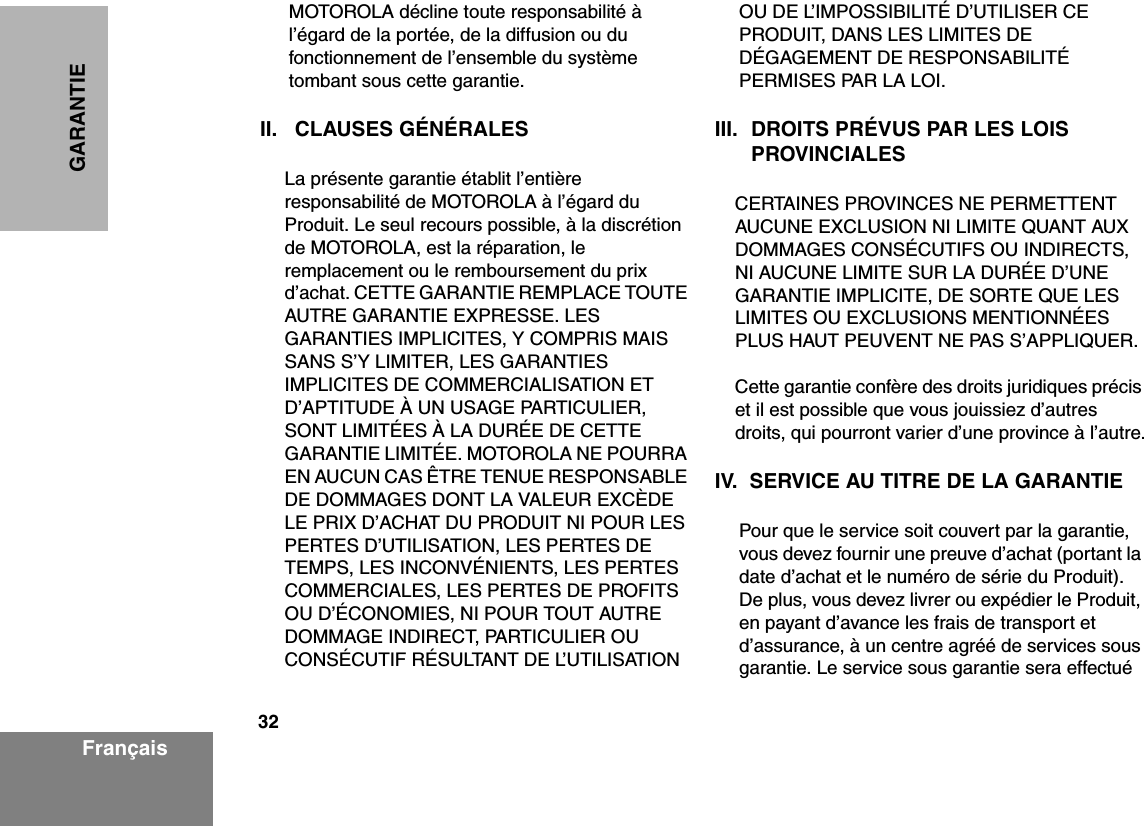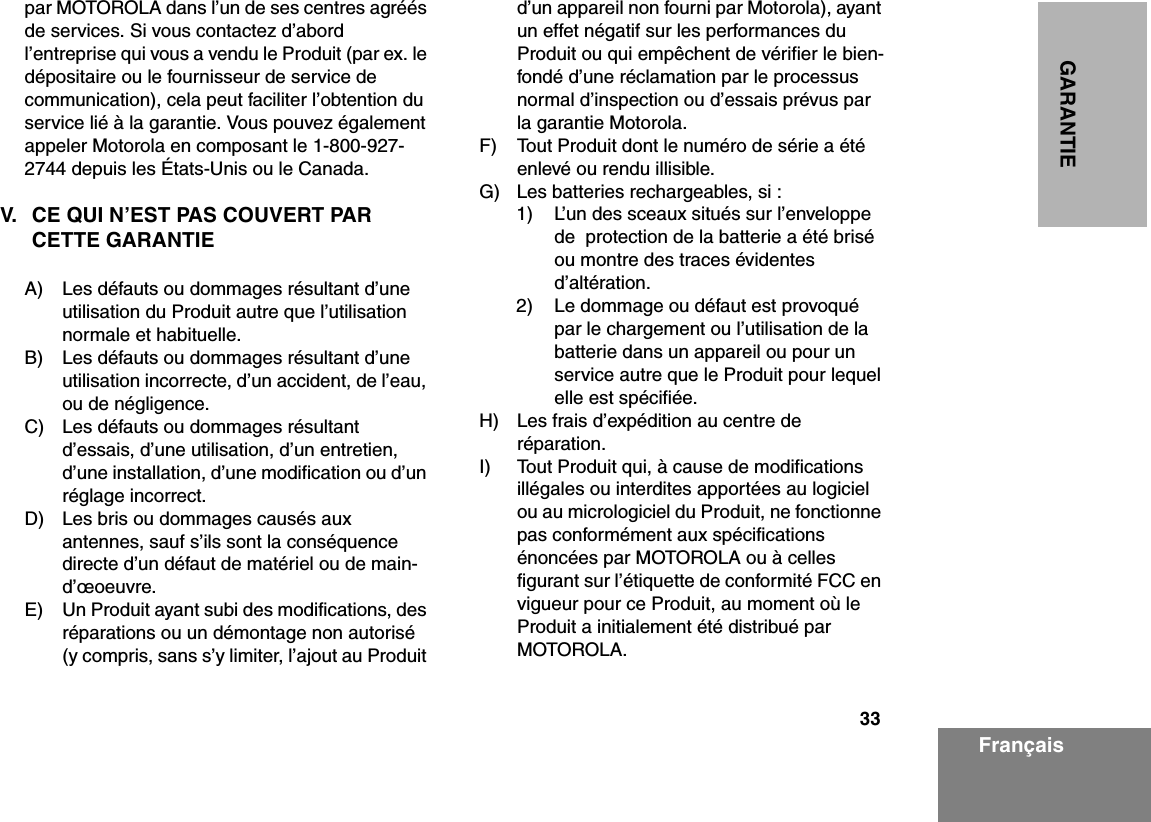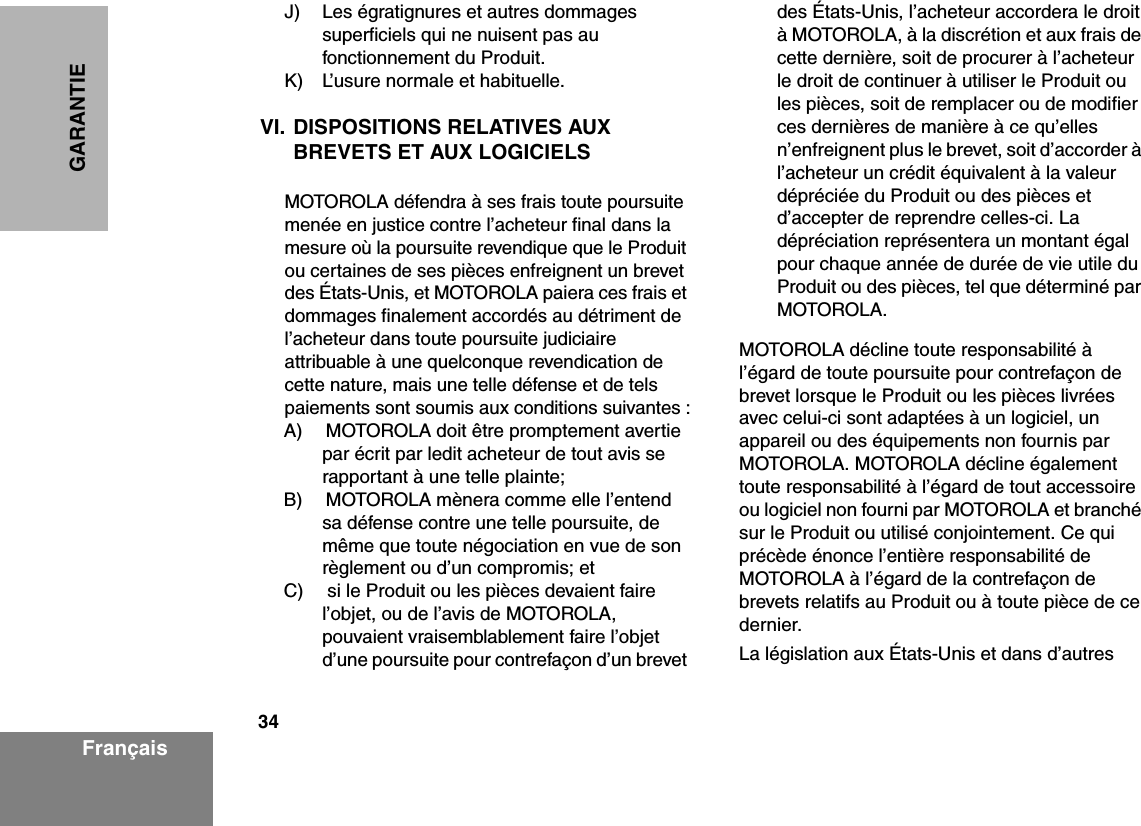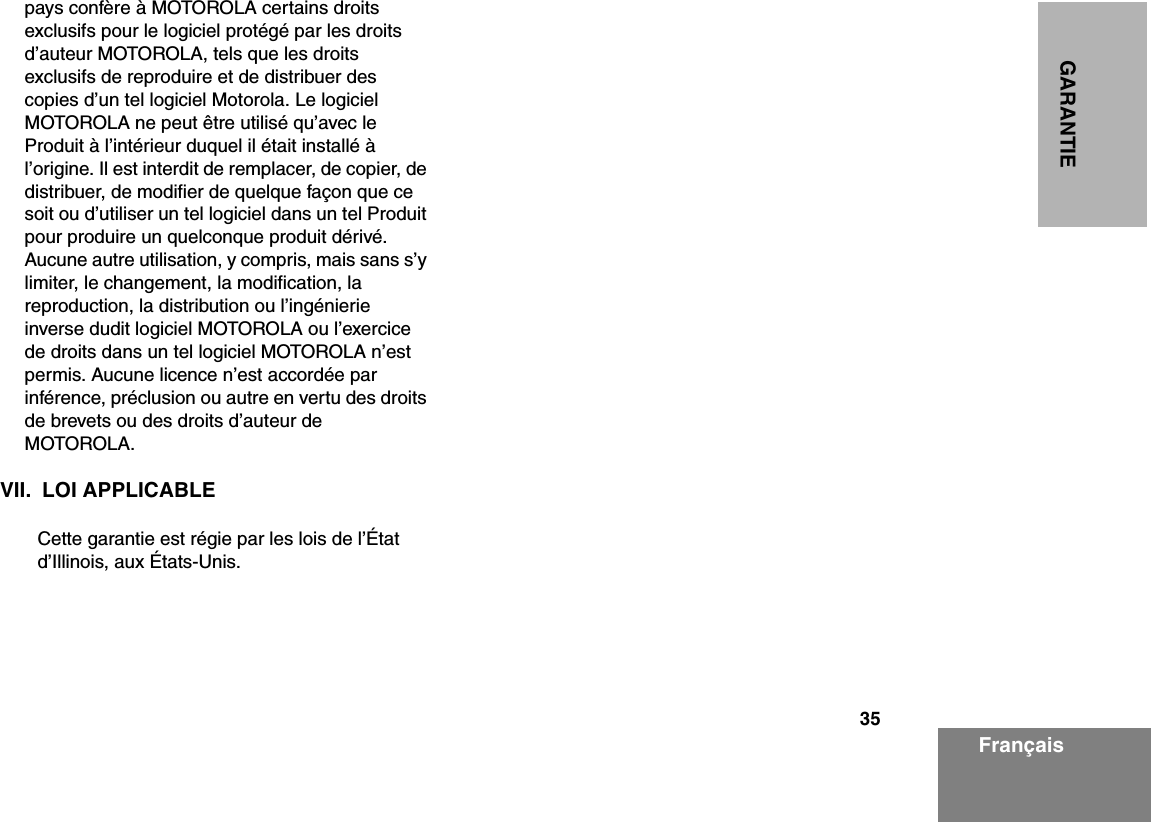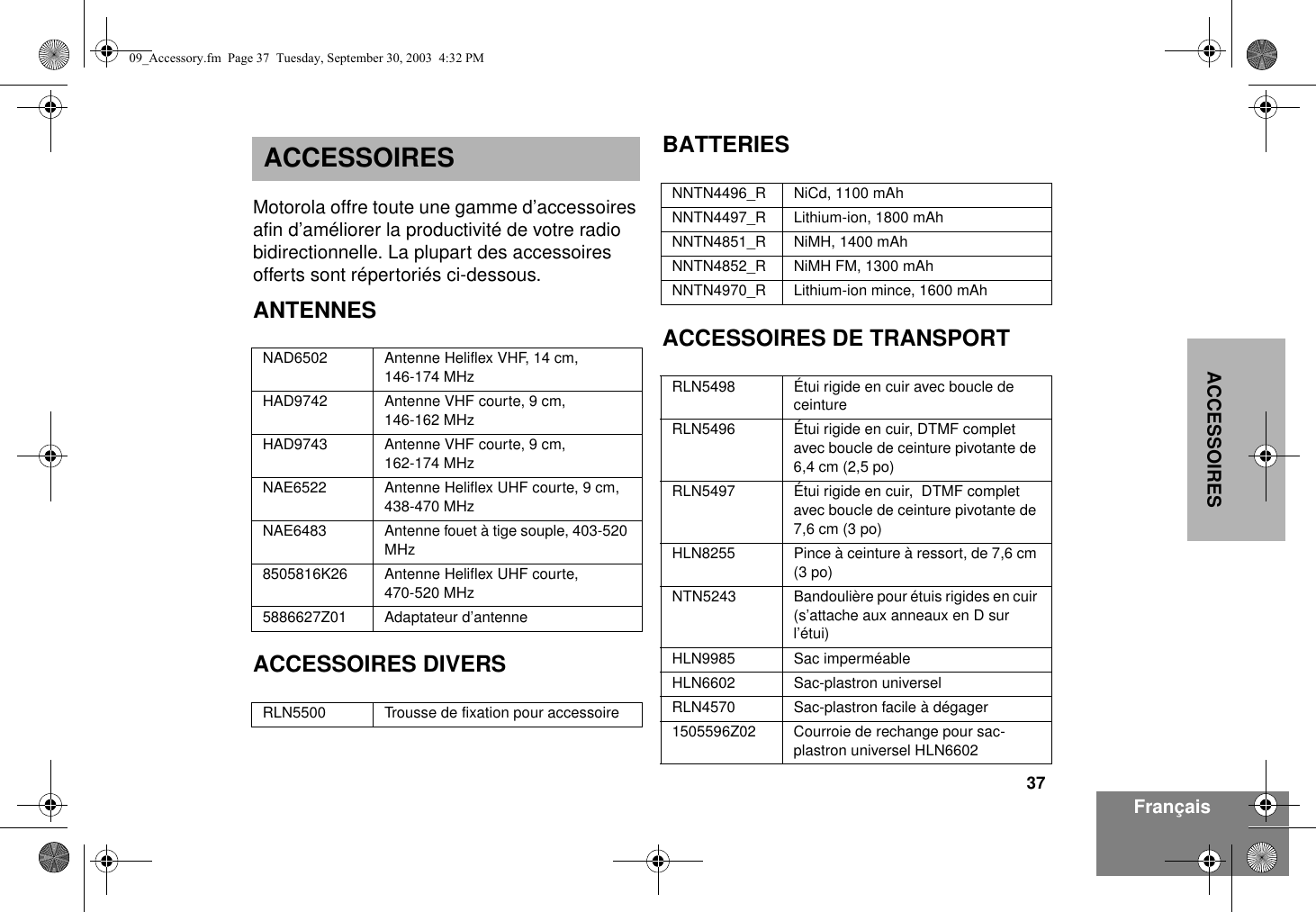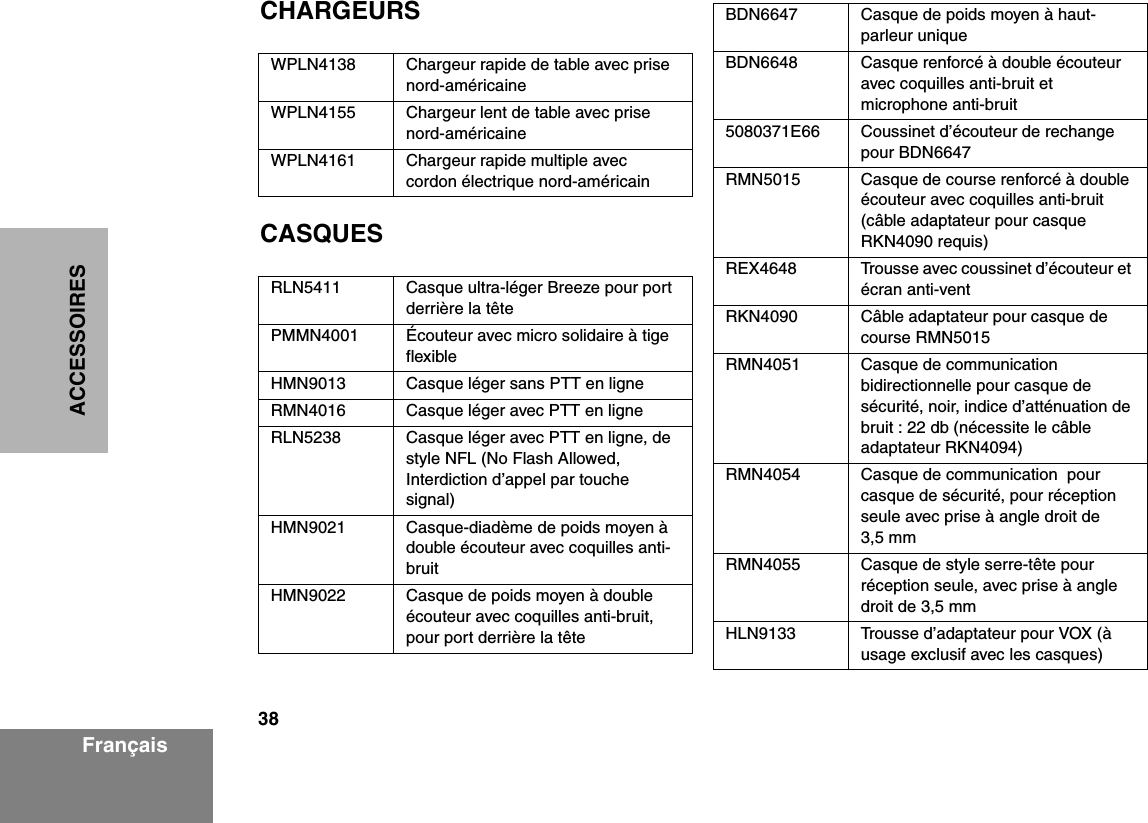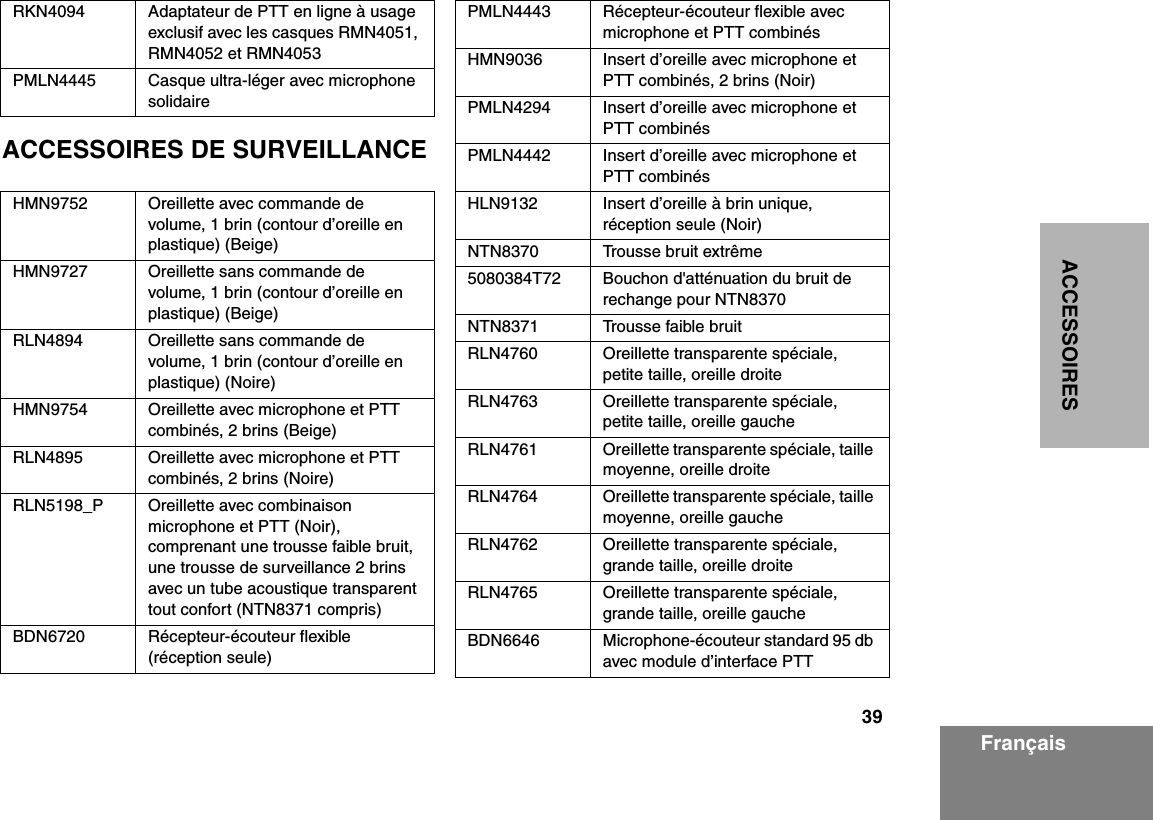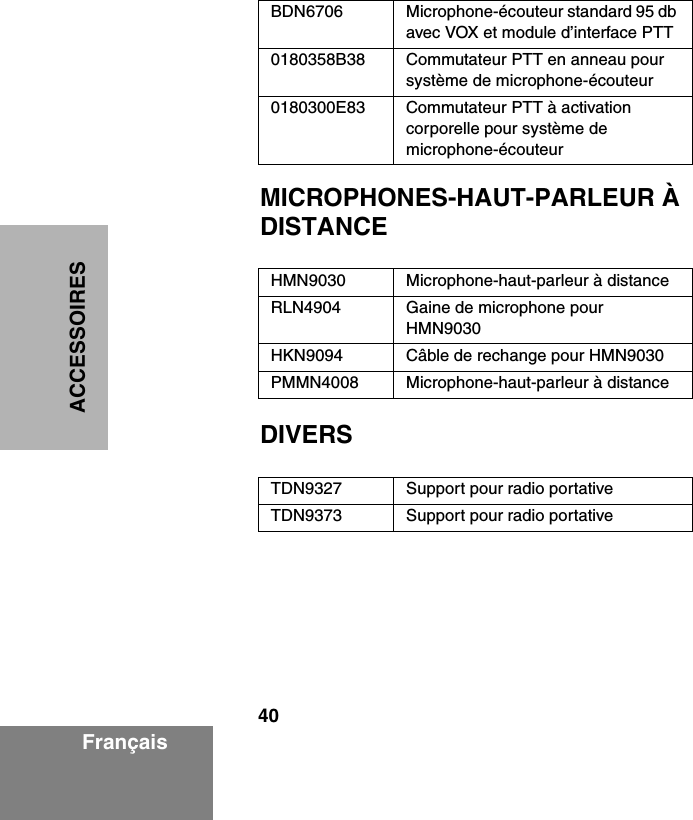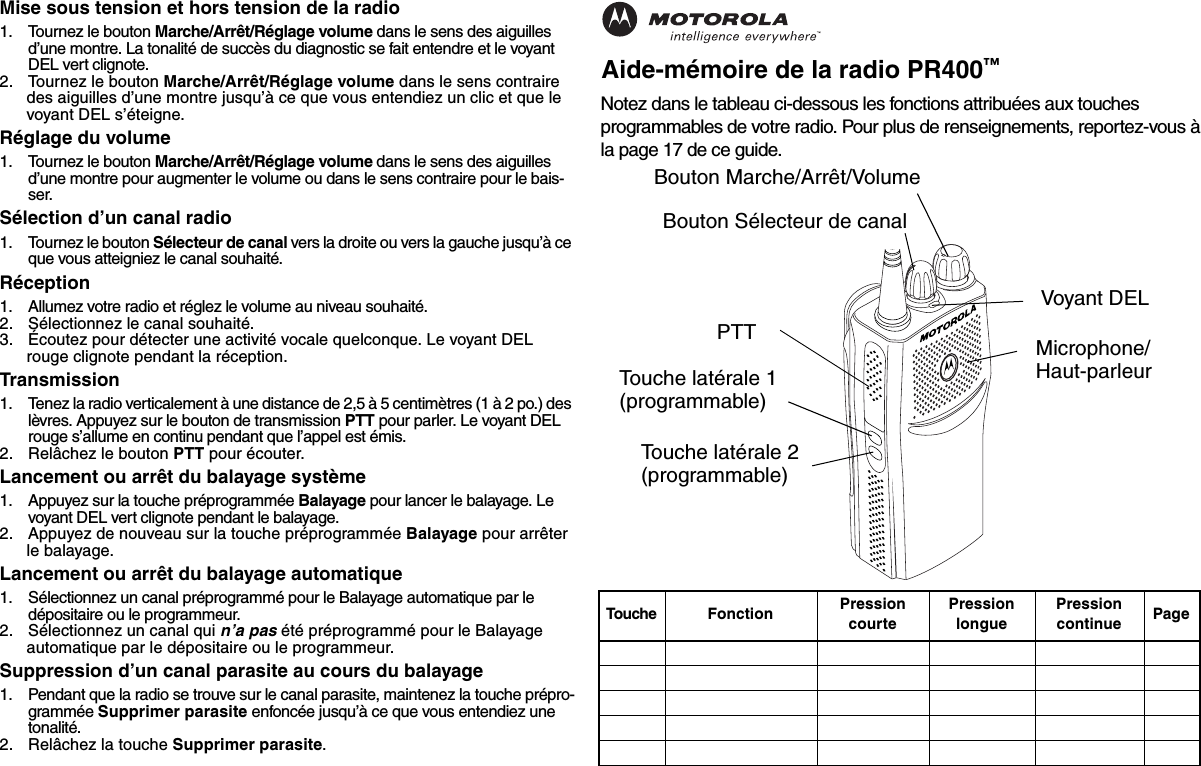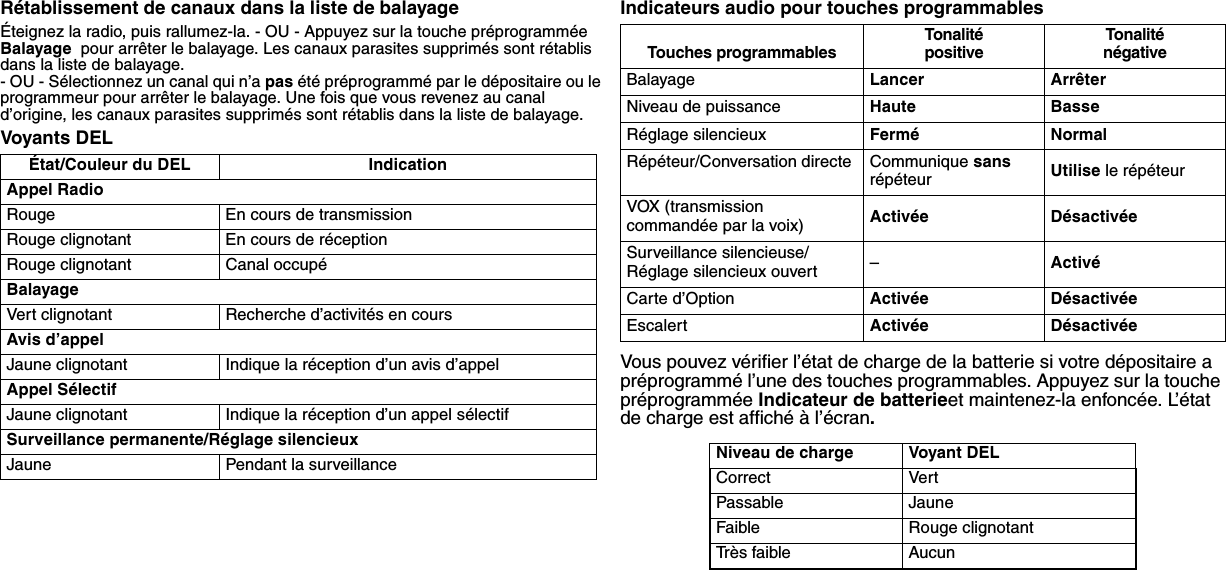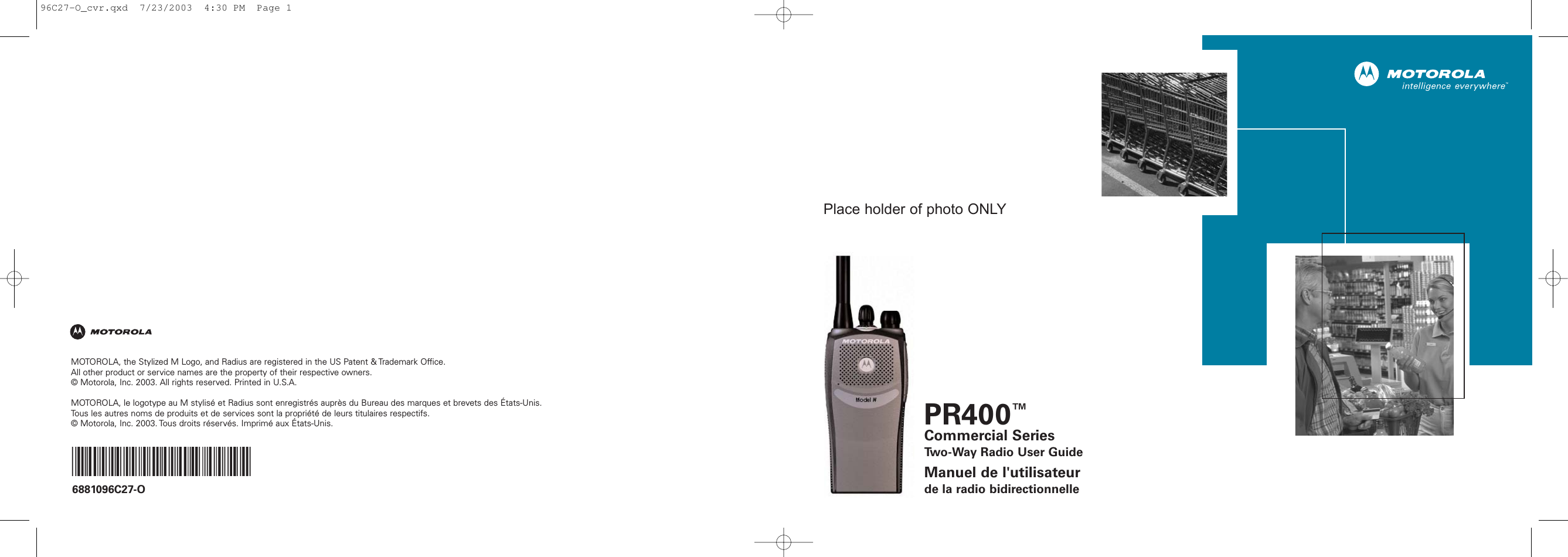Motorola Solutions 99FT3039 GP150/GP200/PR400 VHF 5W Portable Radio User Manual 96C27 O cvr
Motorola Solutions, Inc. GP150/GP200/PR400 VHF 5W Portable Radio 96C27 O cvr
Contents
- 1. exhibit 08a users manual gp150 gp200
- 2. exhibit 08b users manual pr400 non display
- 3. exhibit 08c1 users manual pr400 full display part 1
- 4. exhibit 08c2 users manual pr400 full display part 2
- 5. exhibit 08d rf safety booklet
exhibit 08b users manual pr400 non display
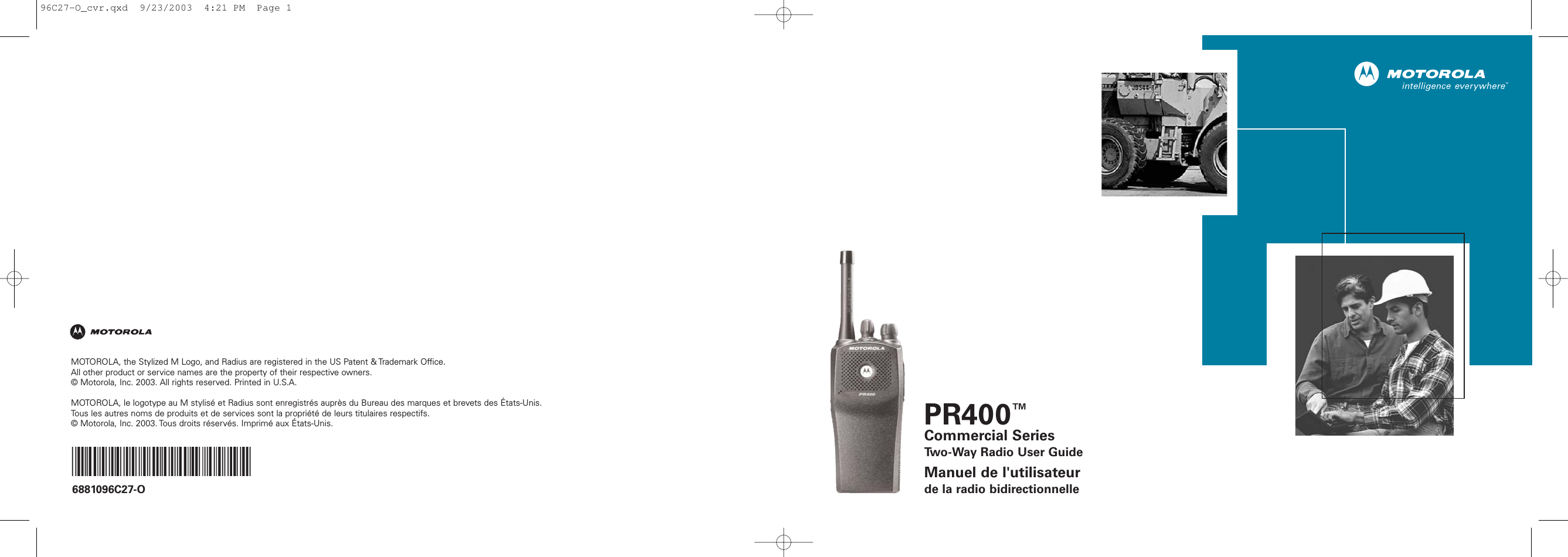
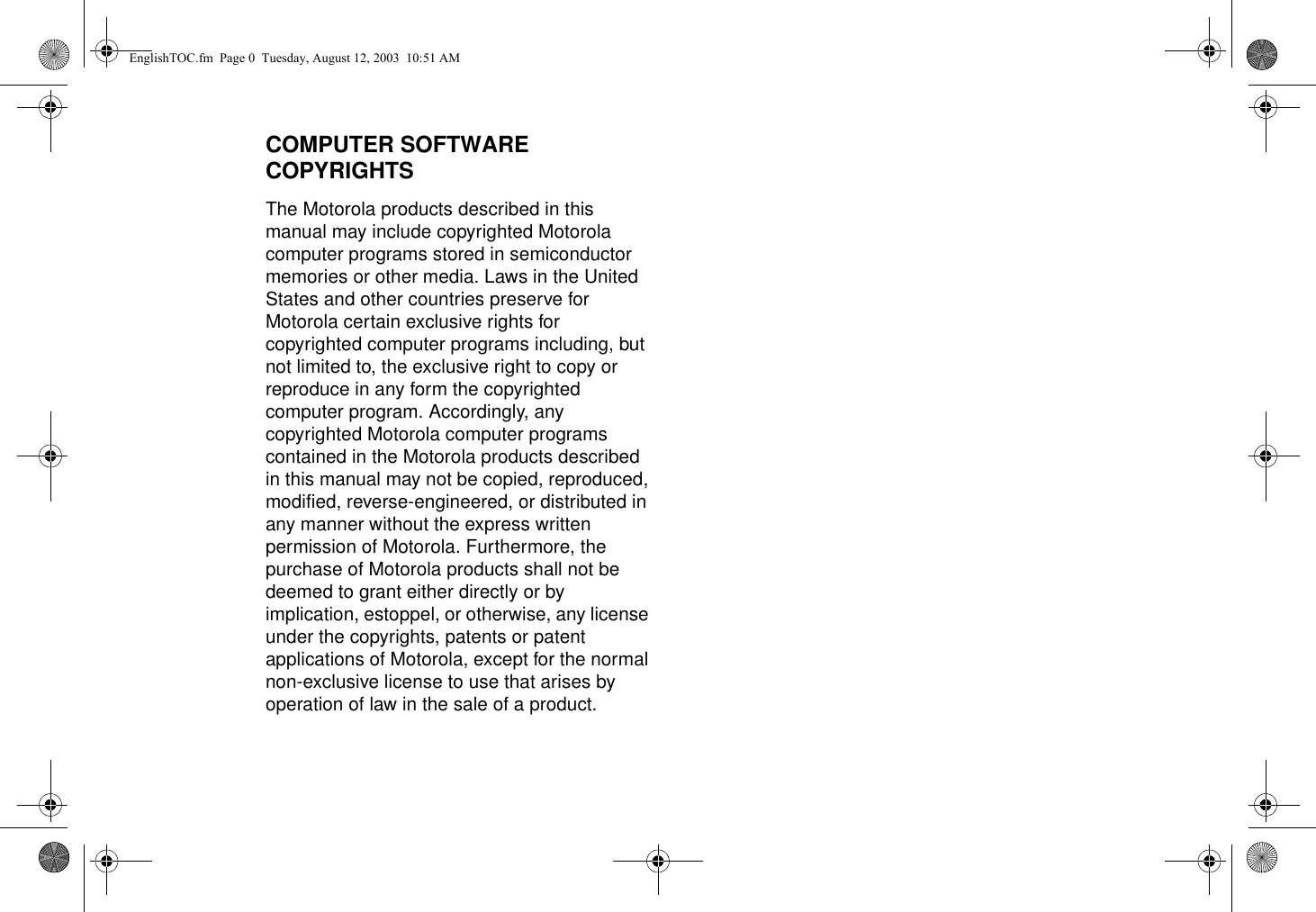
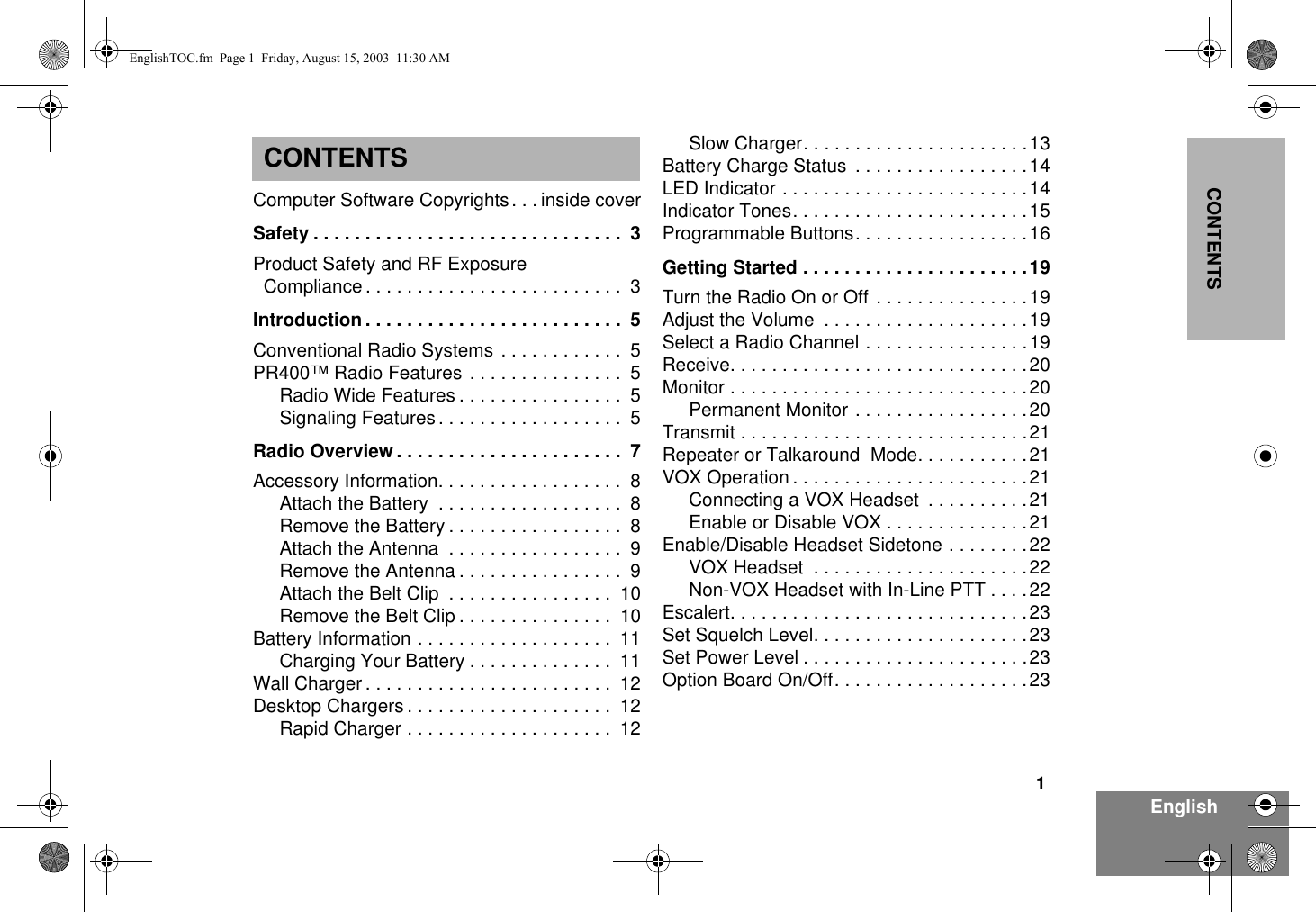
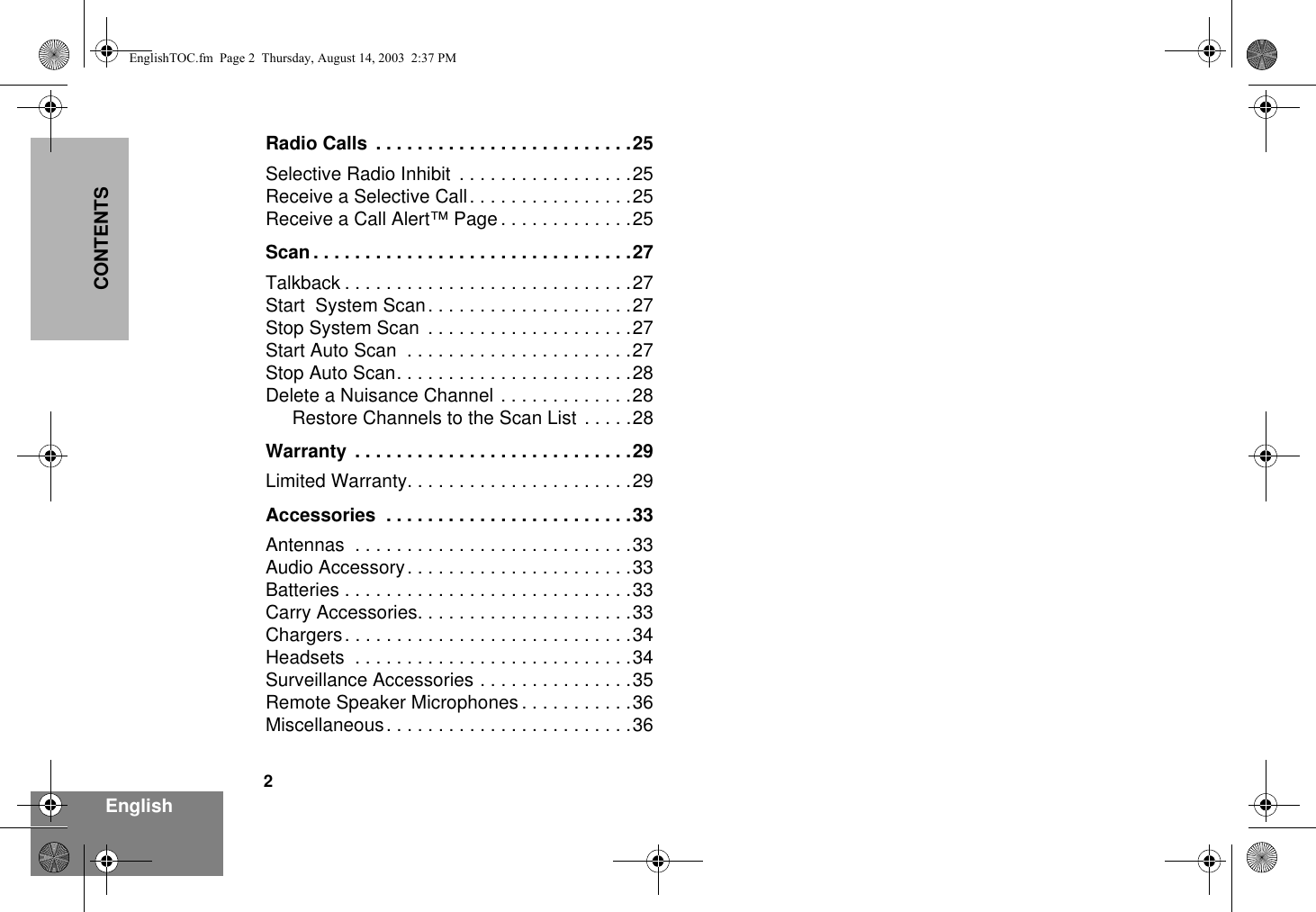
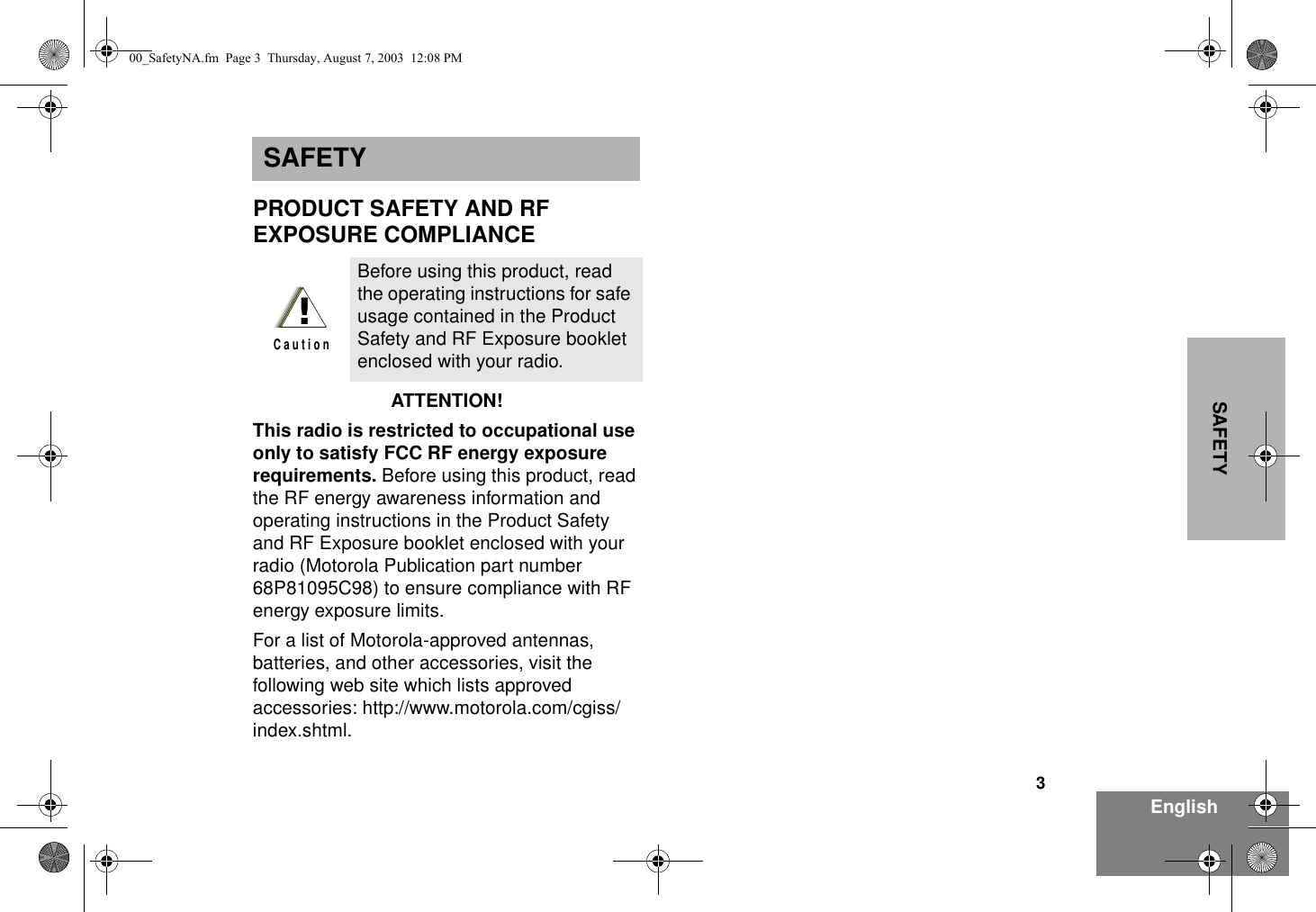
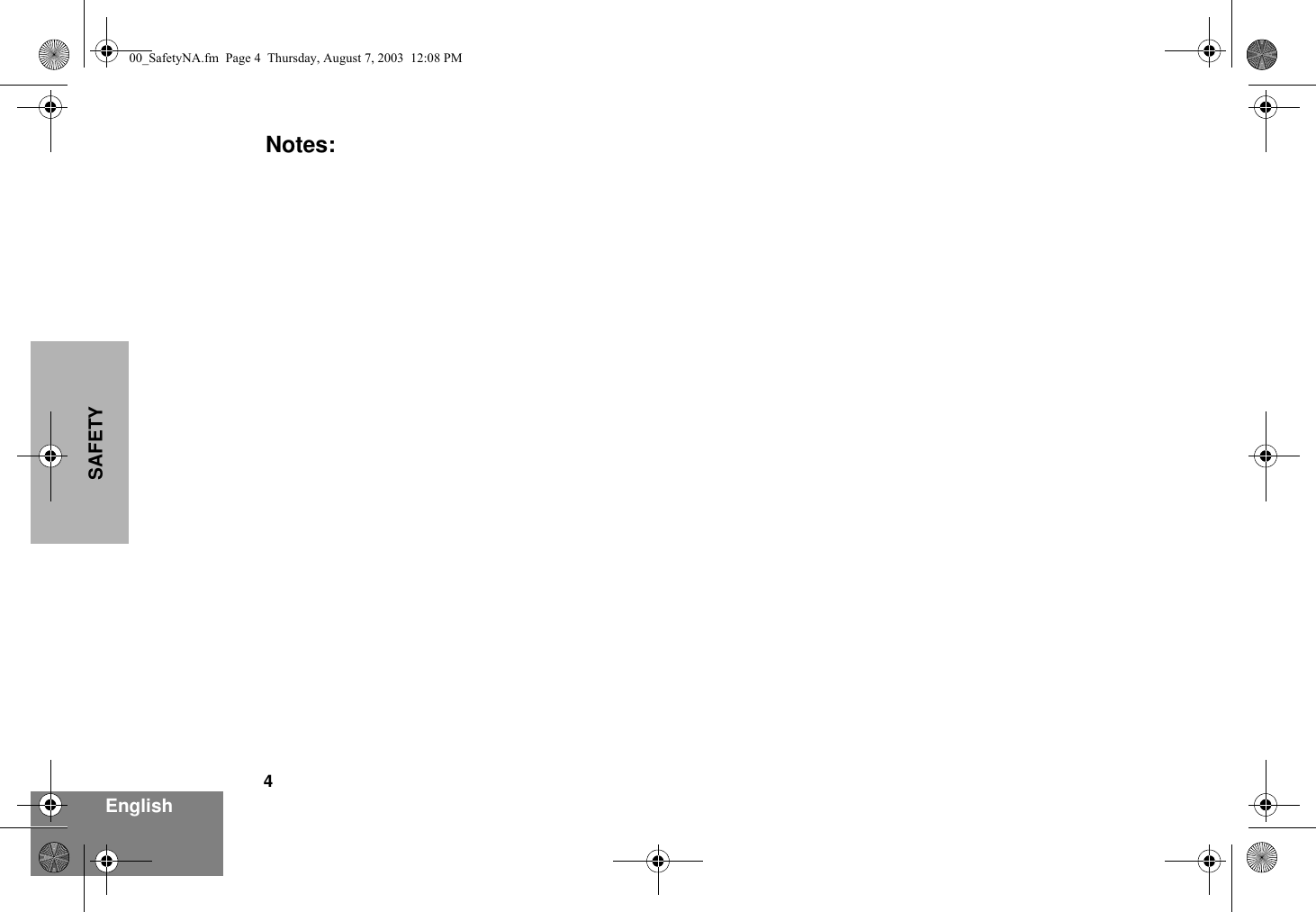
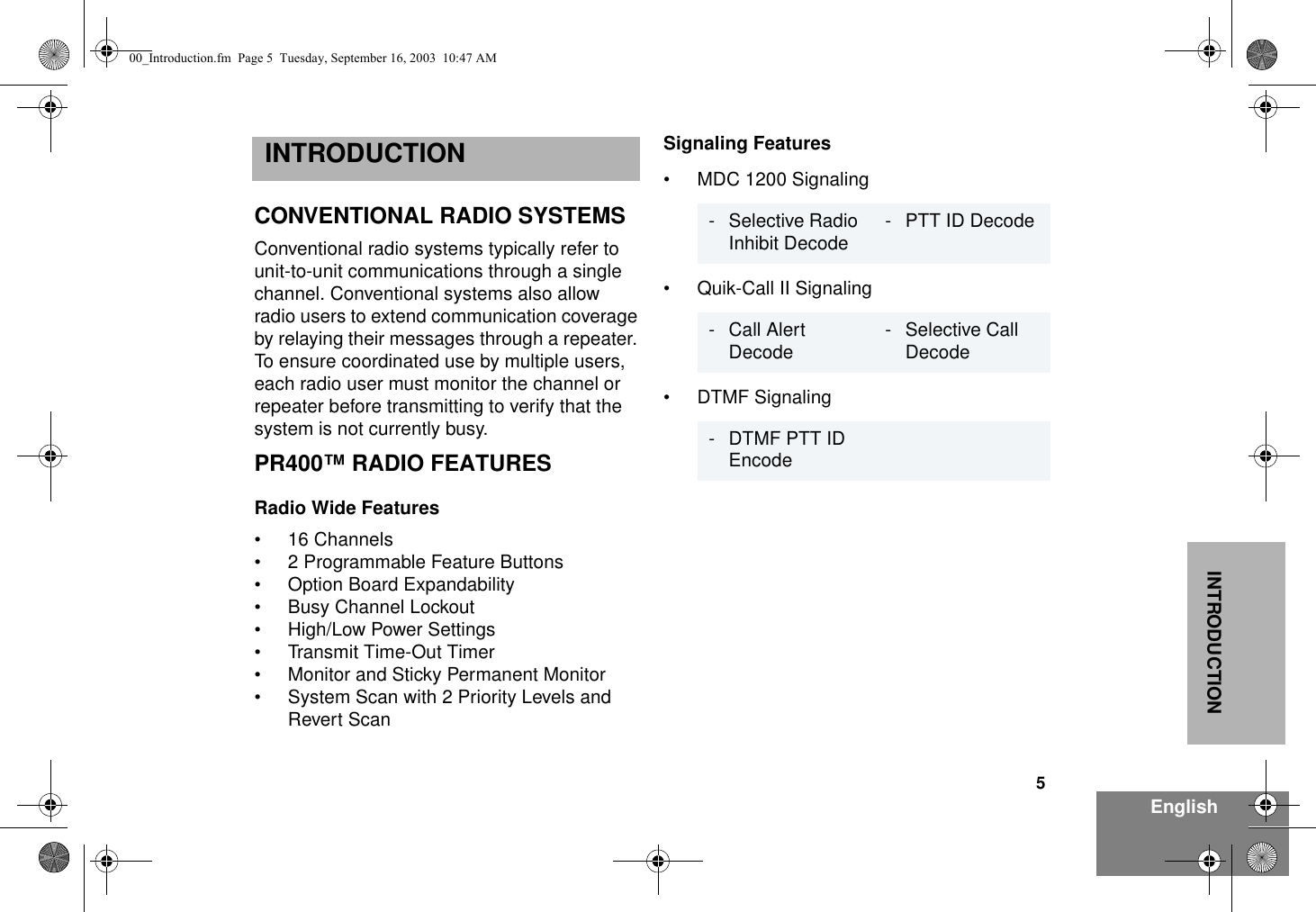
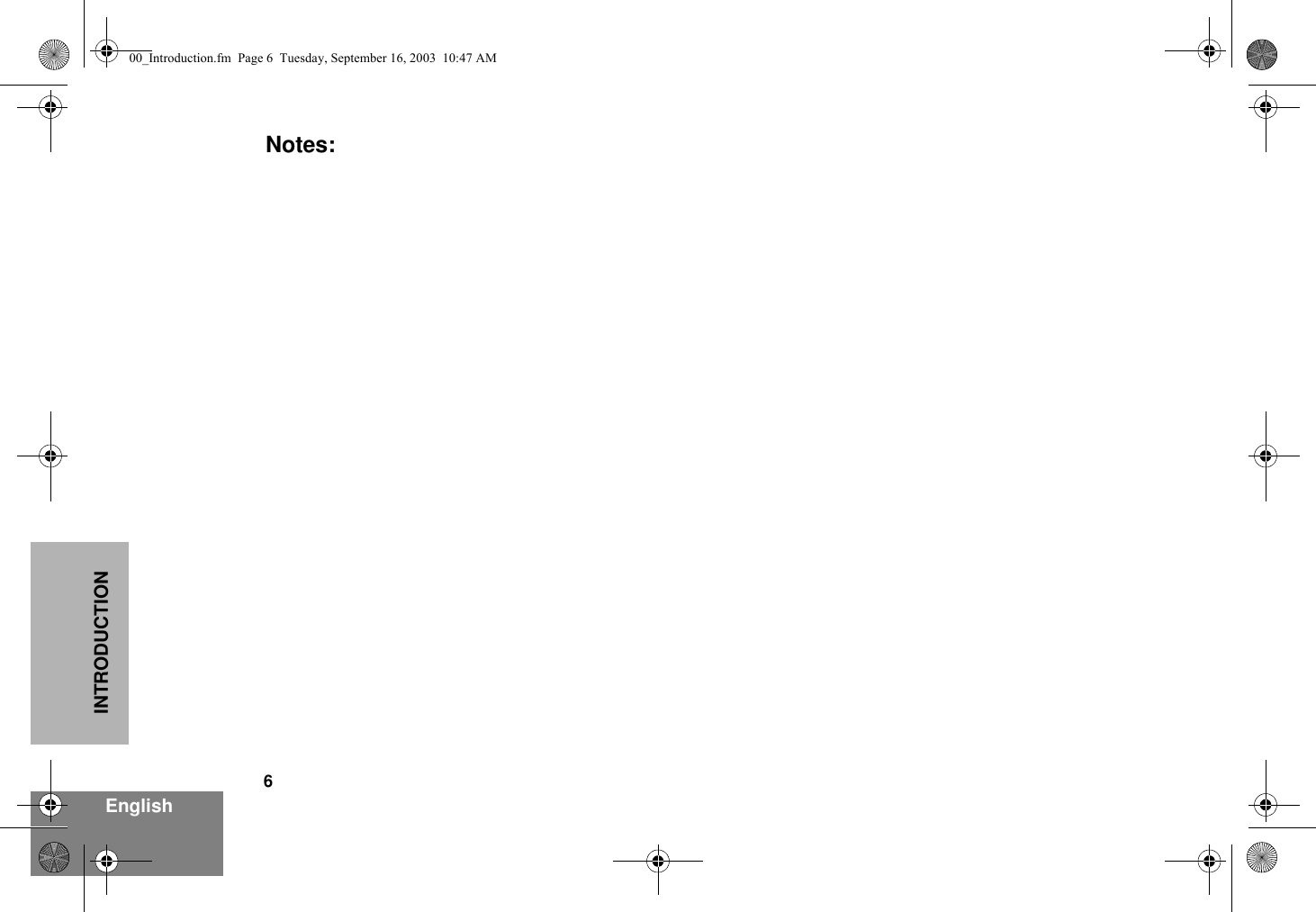
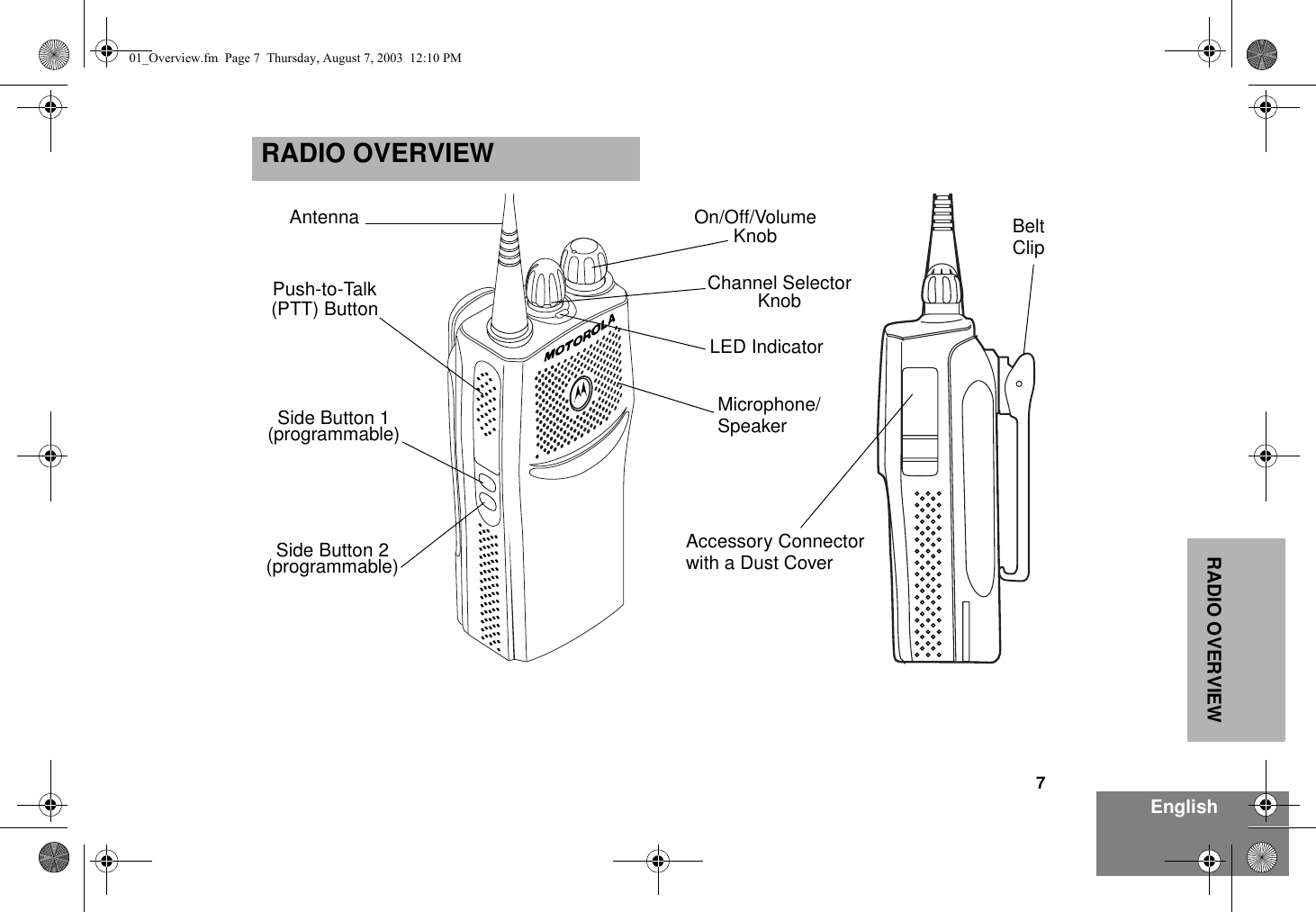
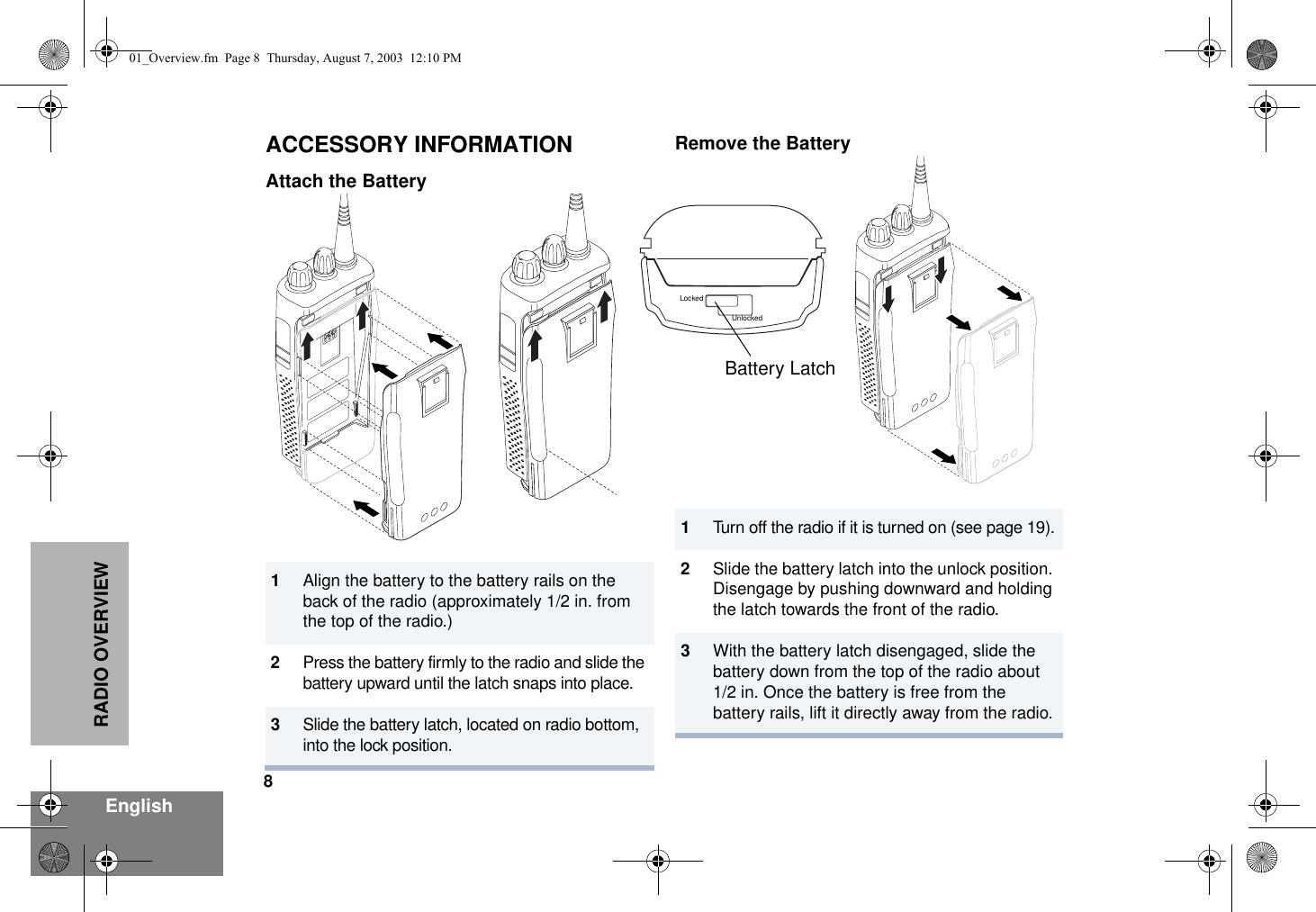
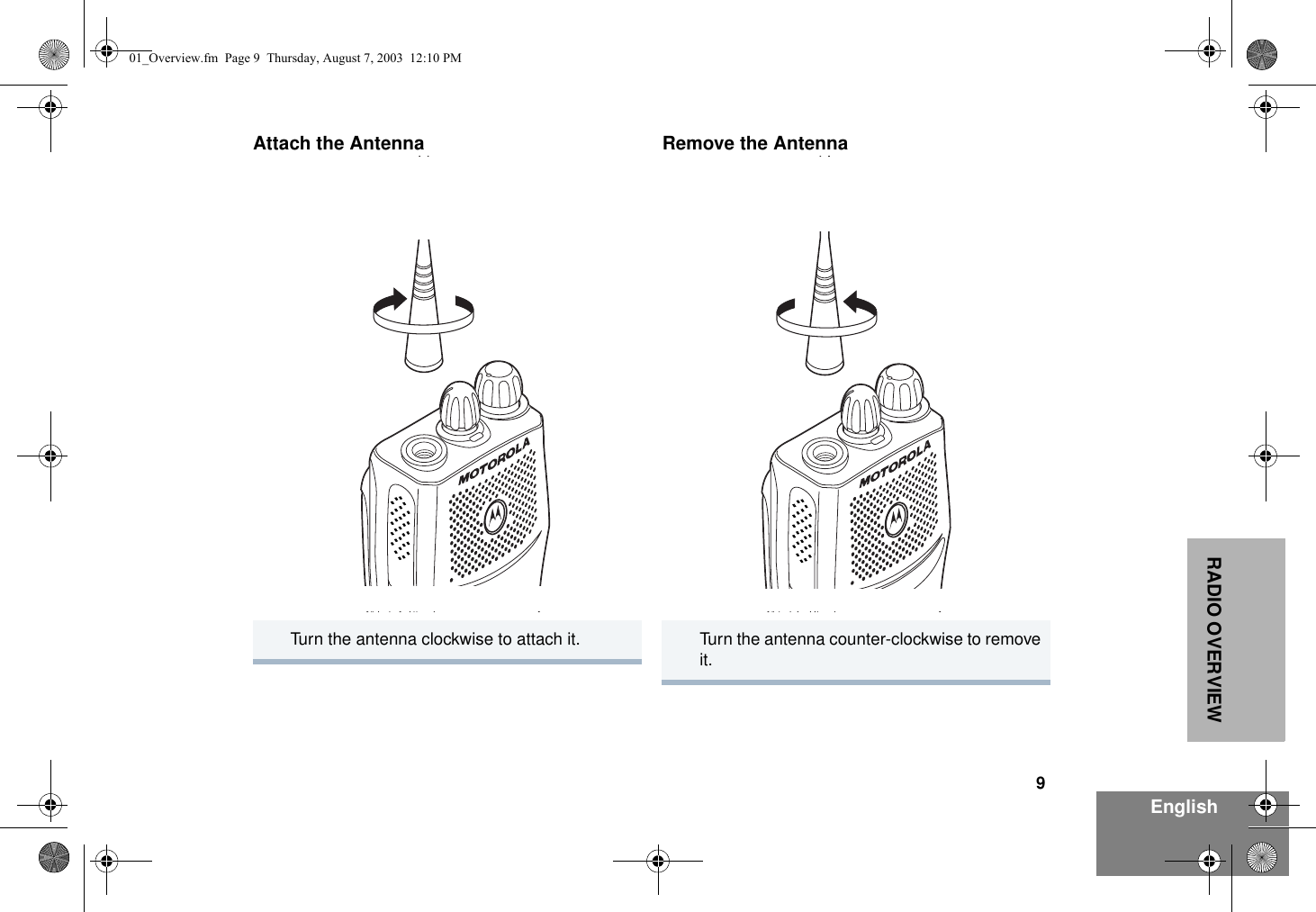
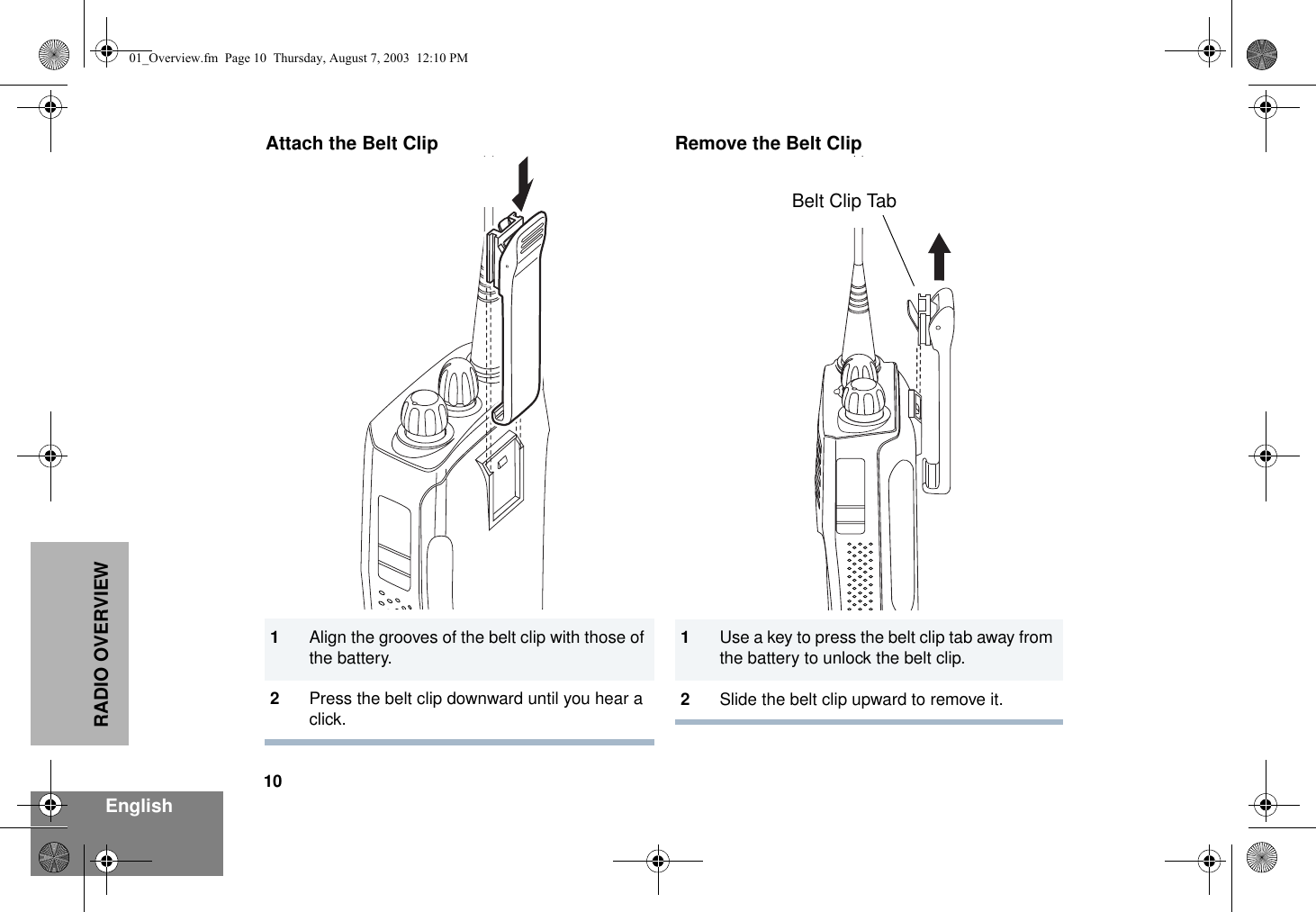
![11EnglishRADIO OVERVIEWBATTERY INFORMATIONCharging Your BatteryThis radio is powered by a nickel-cadmium (NICd), a nickel-metal hydride (NiMH), or a lithium-ion (Li-lon) rechargeable battery. Charge the battery before use to ensure optimum capacity and performance. The battery was designed specifically to be used with a Motorola charger. Charging in non-Motorola equipment may lead to battery damage and void the battery warranty.Note: When charging a battery attached to a radio, turn the radio off to ensure a full charge.The battery should be at about 77°F (25°C) (room temperature), whenever possible. Charging a cold battery (below 50° F [10°C]) may result in leakage of electrolyte and ultimately in failure of the battery. Charging a hot battery (above 95°F [35°C]) results in reduced discharge capacity, affecting the performance of the radio. Motorola rapid-rate battery chargers contain a temperature-sensing circuit to ensure that batteries are charged within the temperature limits stated above.If a battery is new, or its charge level is very low, you will need to charge it before you can use it. When the battery level is low and the radio is in transmit mode you will see the LED indicator flash red. Upon release of the PTT button, you will hear an alert tone.Note: Batteries are shipped uncharged from the factory. Always charge a new battery 14 to 16 hours before initial use, regardless of the status indicated by the charger.Note: Do not use the wall charger and desktop charger at the same time when charging.01_Overview.fm Page 11 Thursday, August 7, 2003 12:10 PM](https://usermanual.wiki/Motorola-Solutions/99FT3039.exhibit-08b-users-manual-pr400-non-display/User-Guide-443202-Page-13.png)
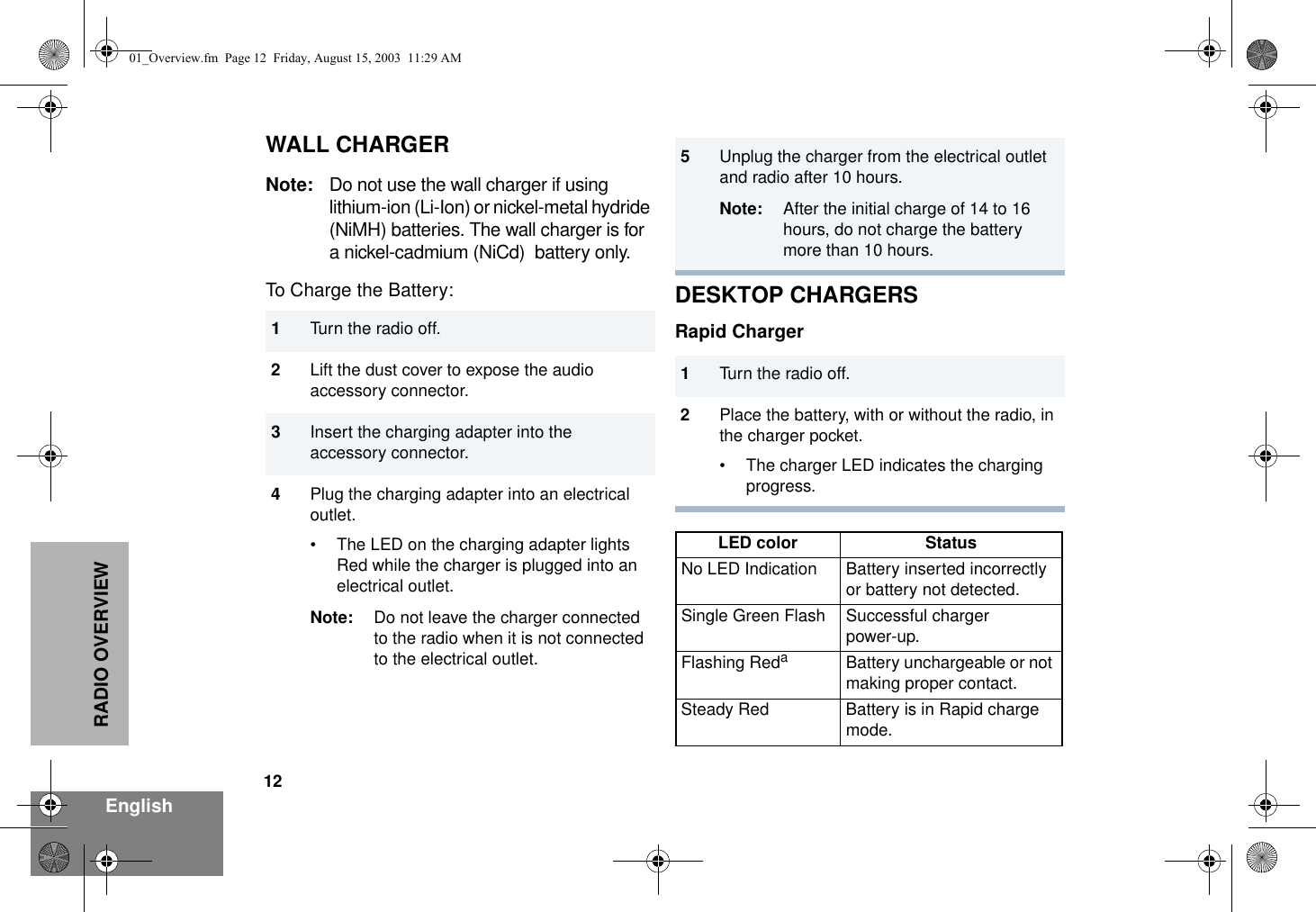
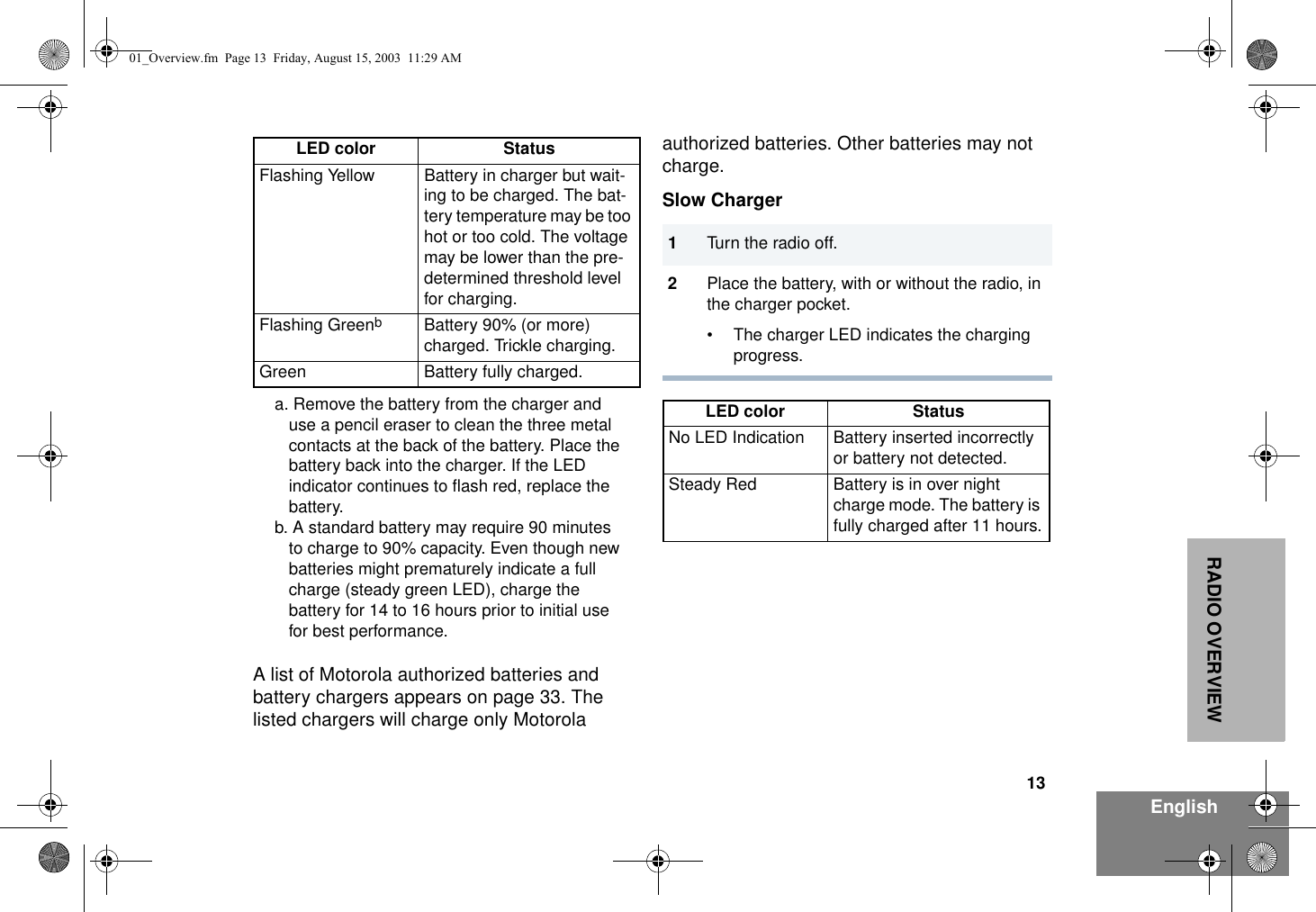
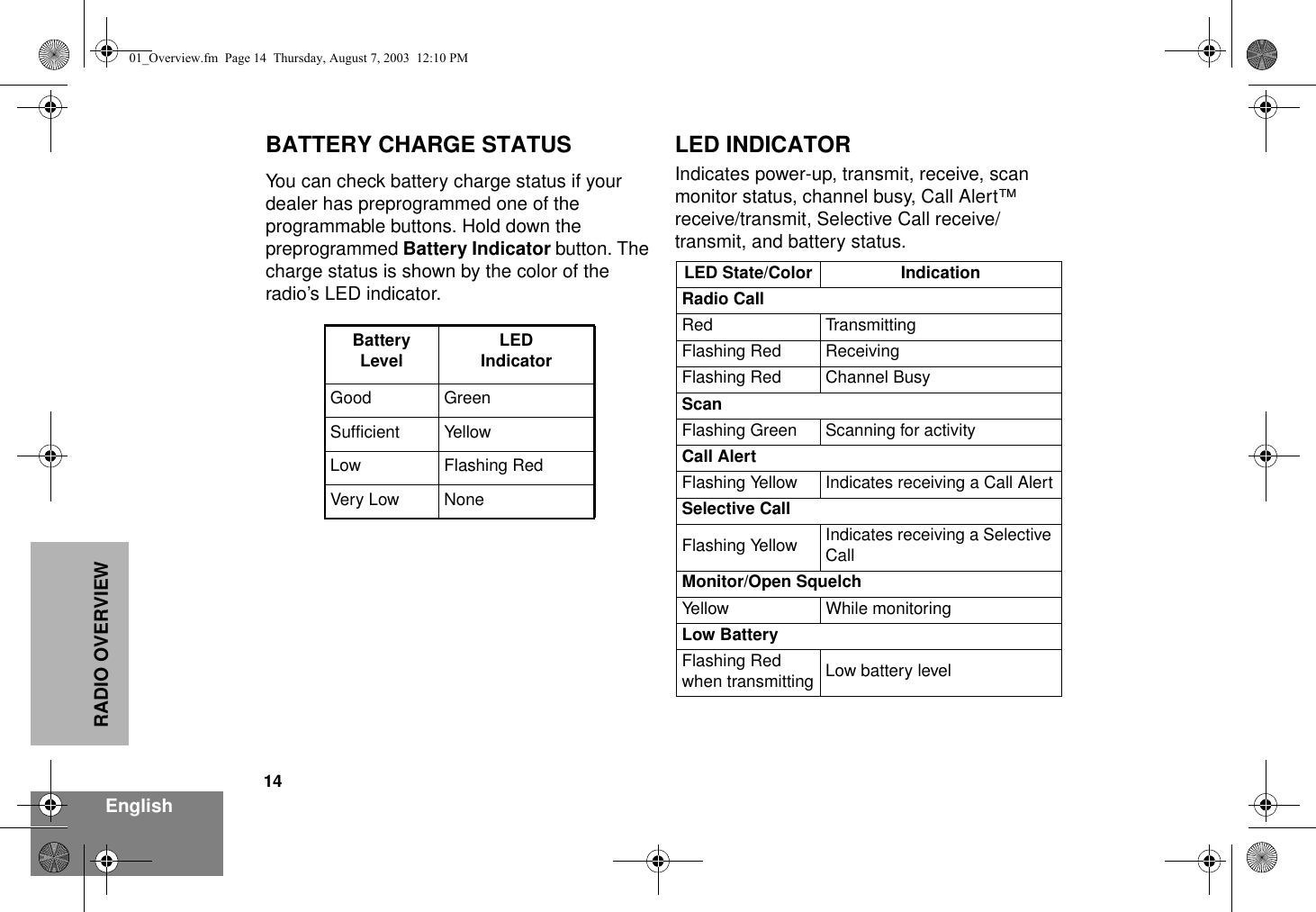
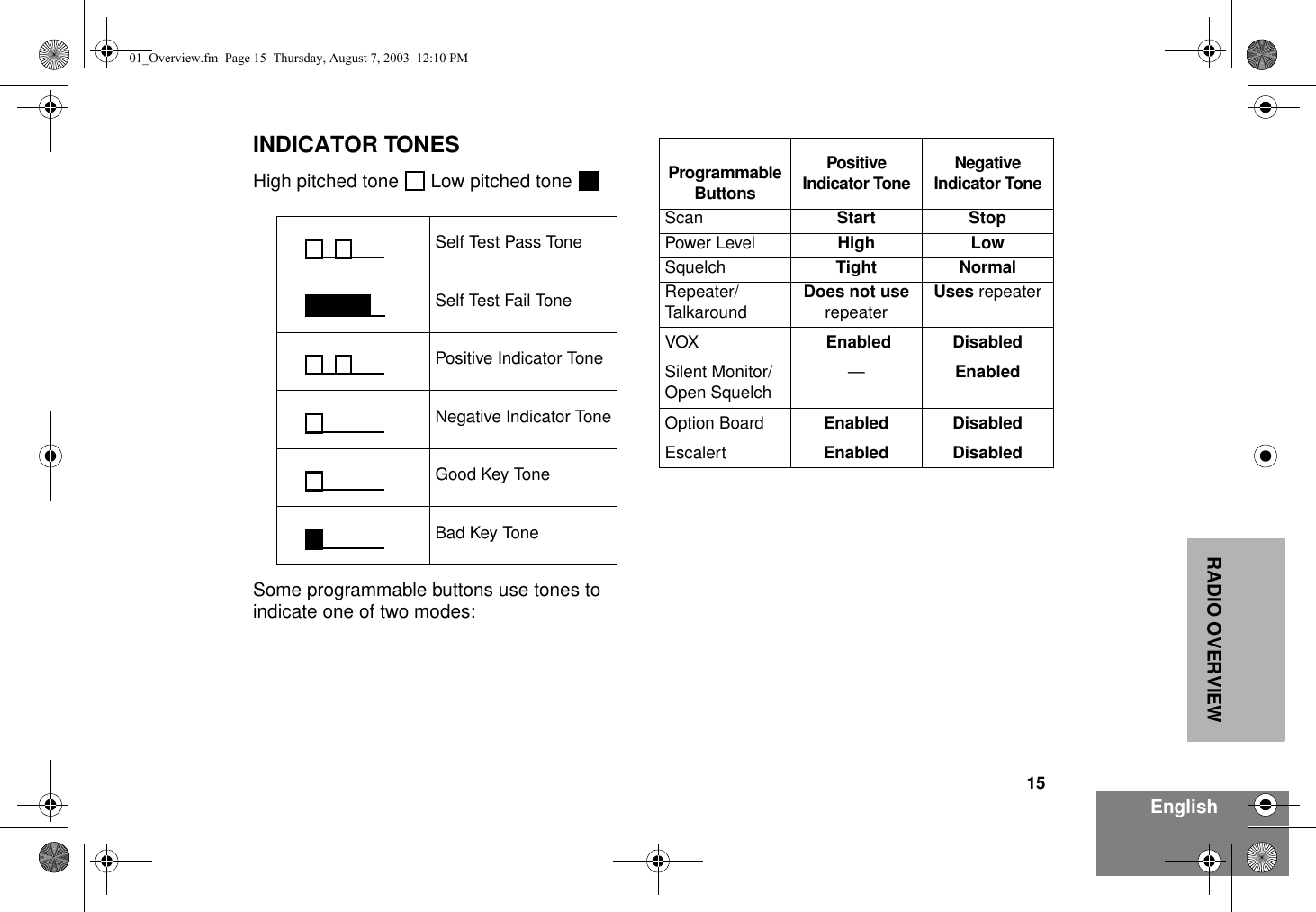
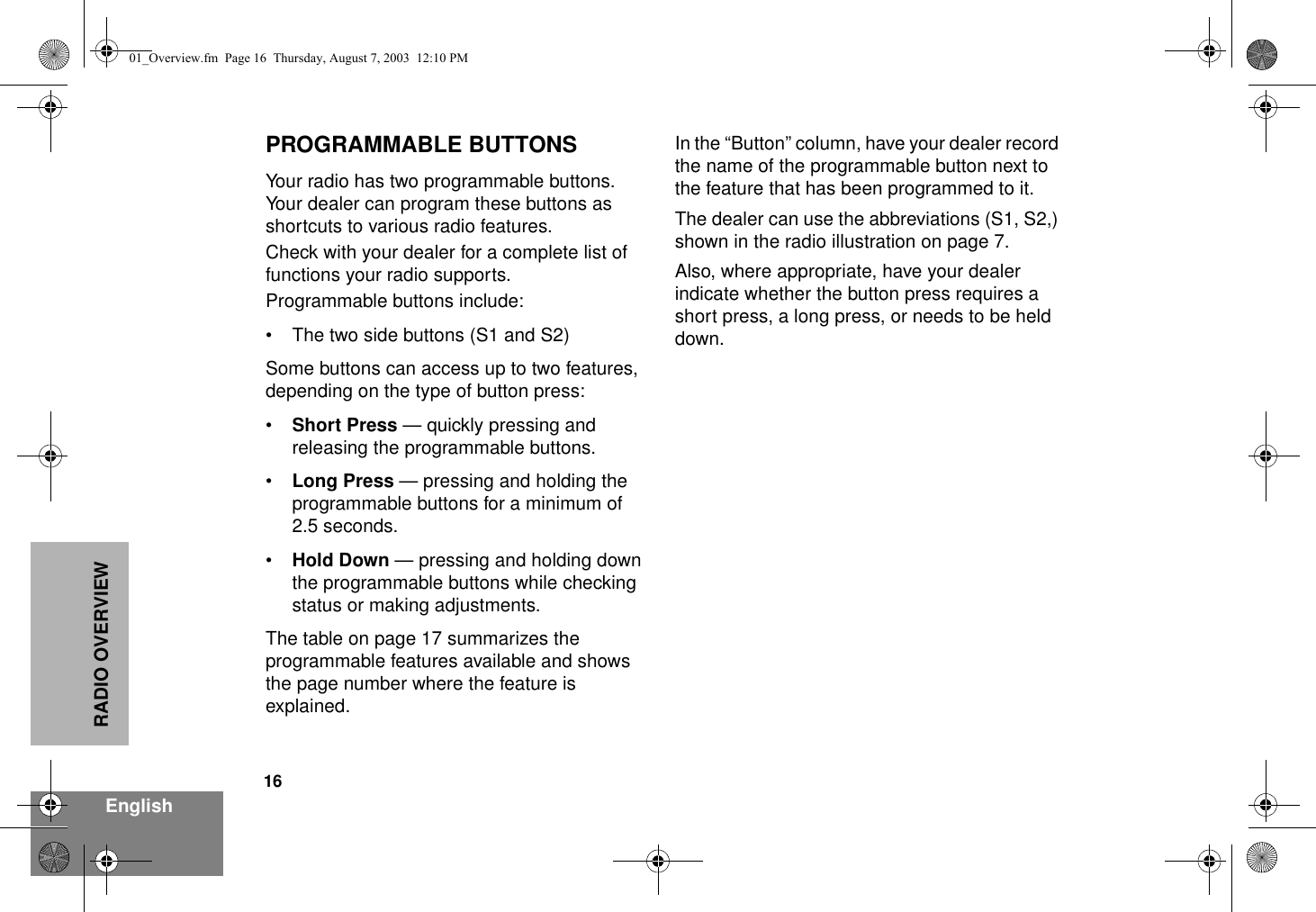
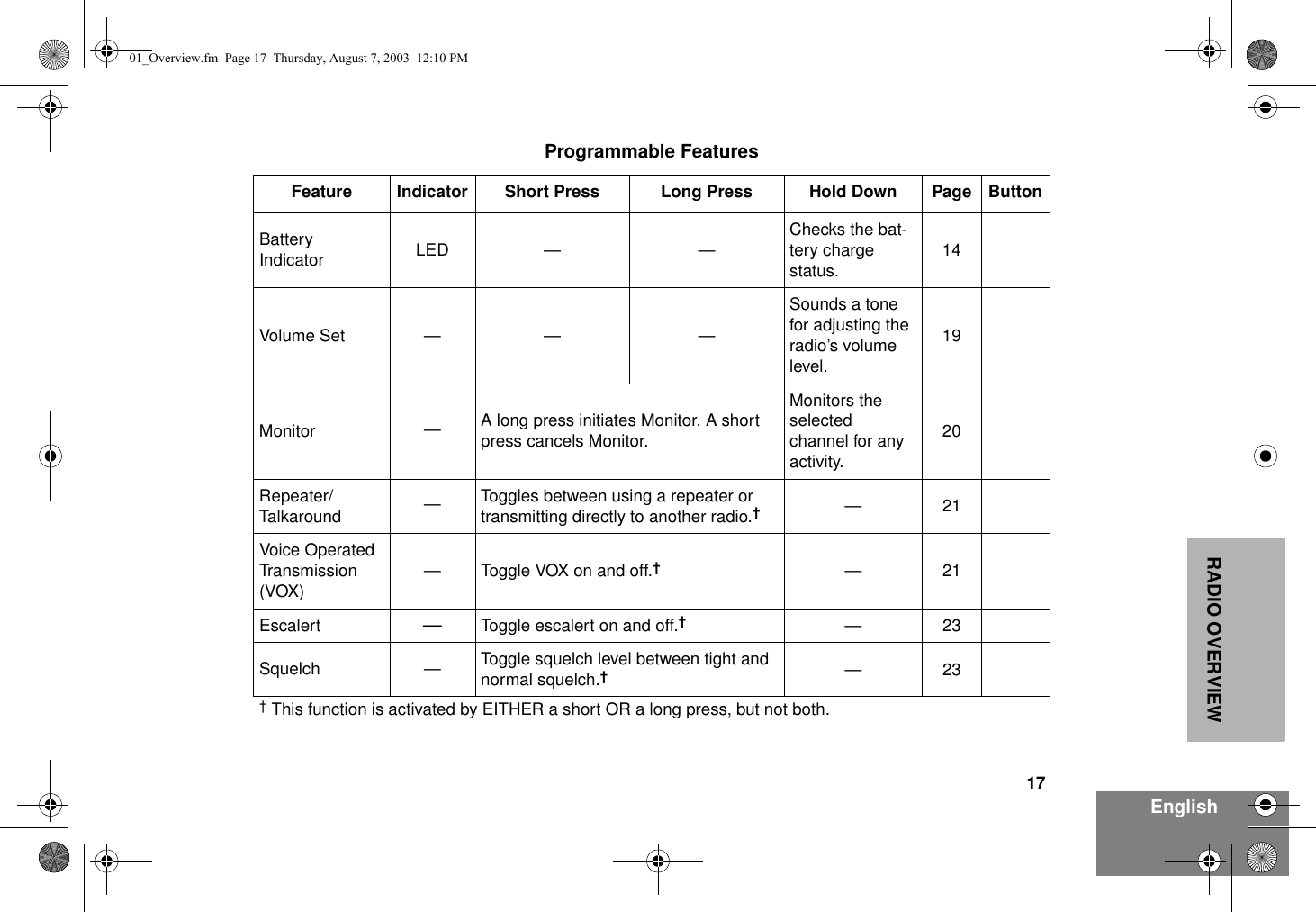
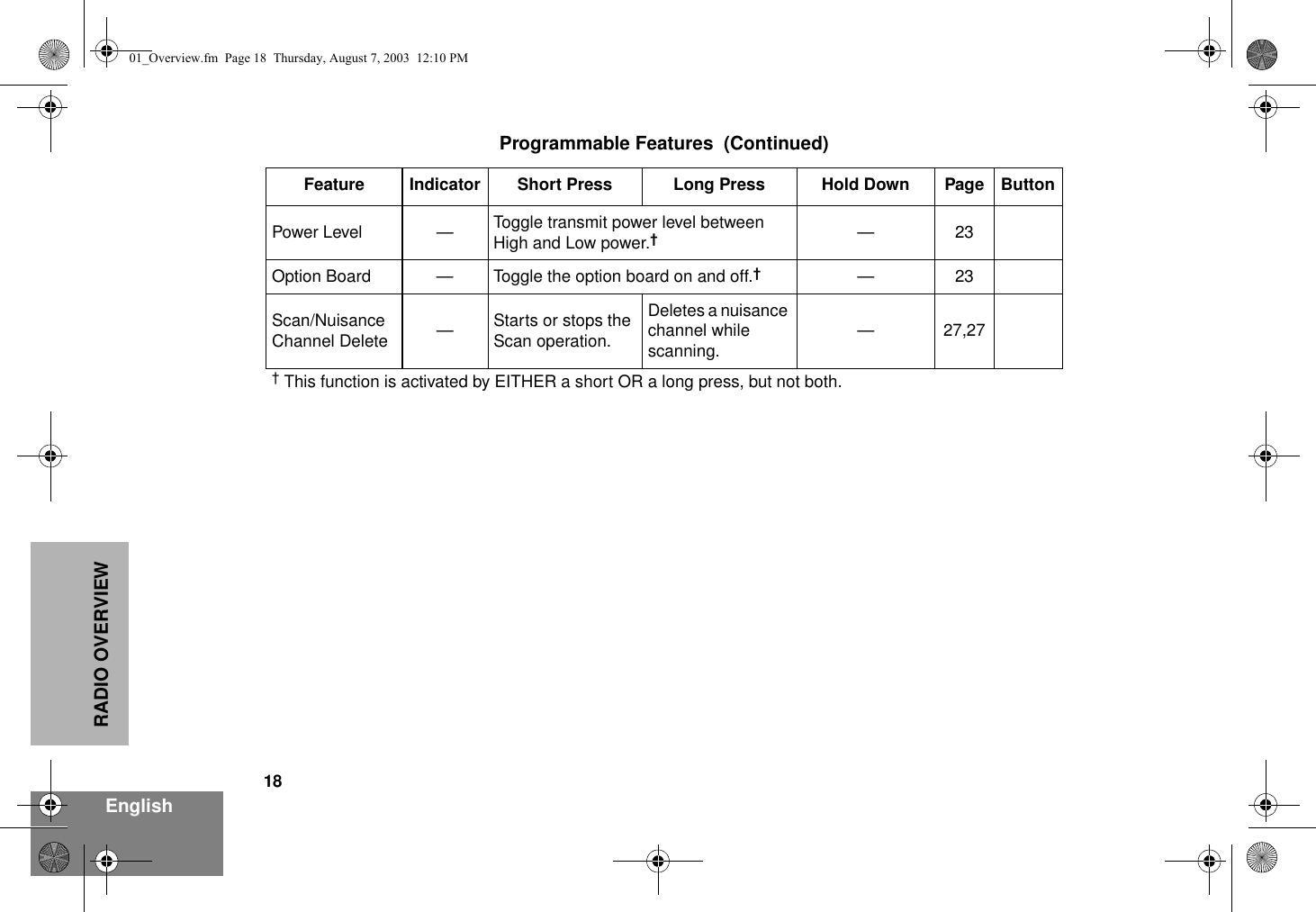
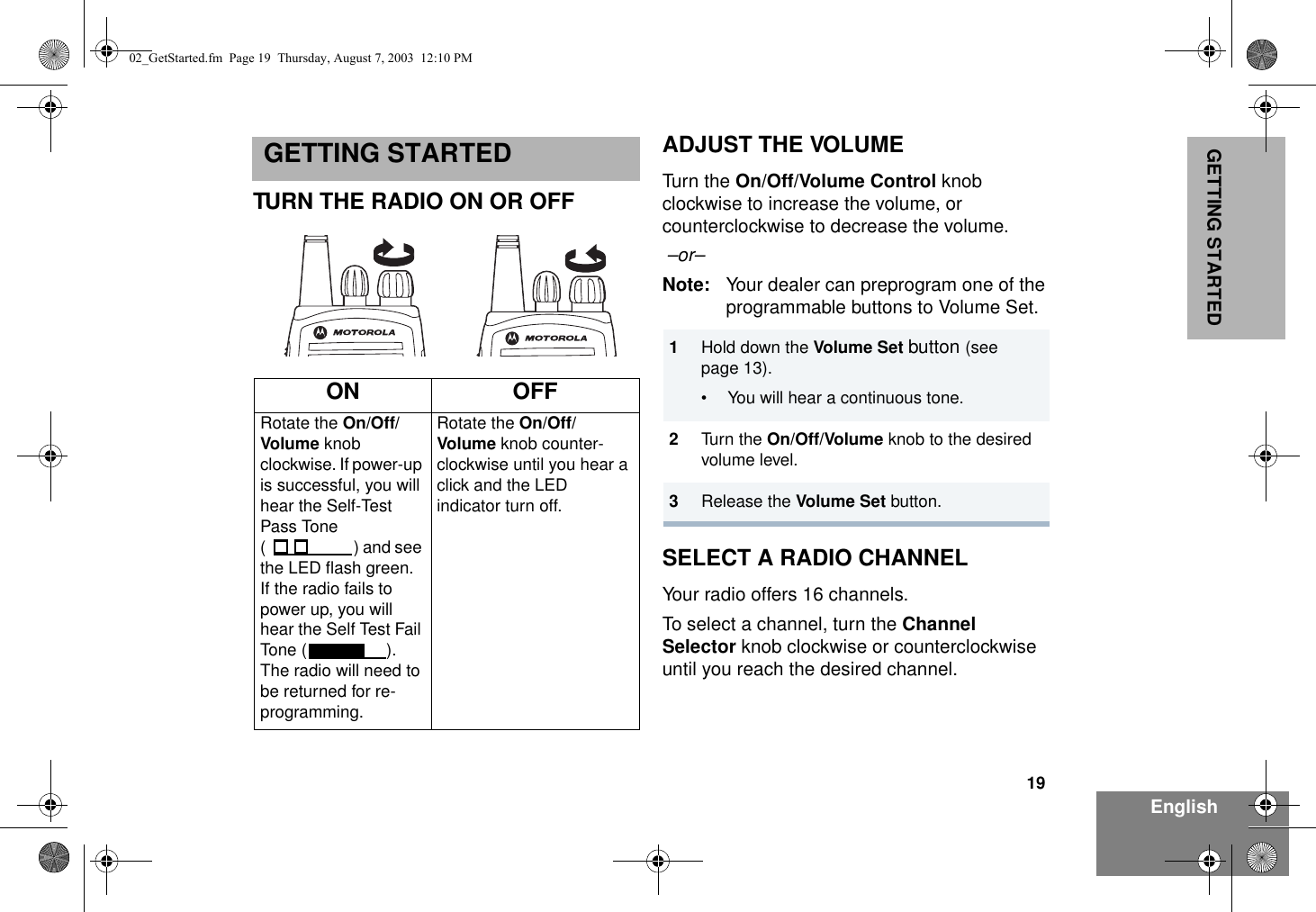
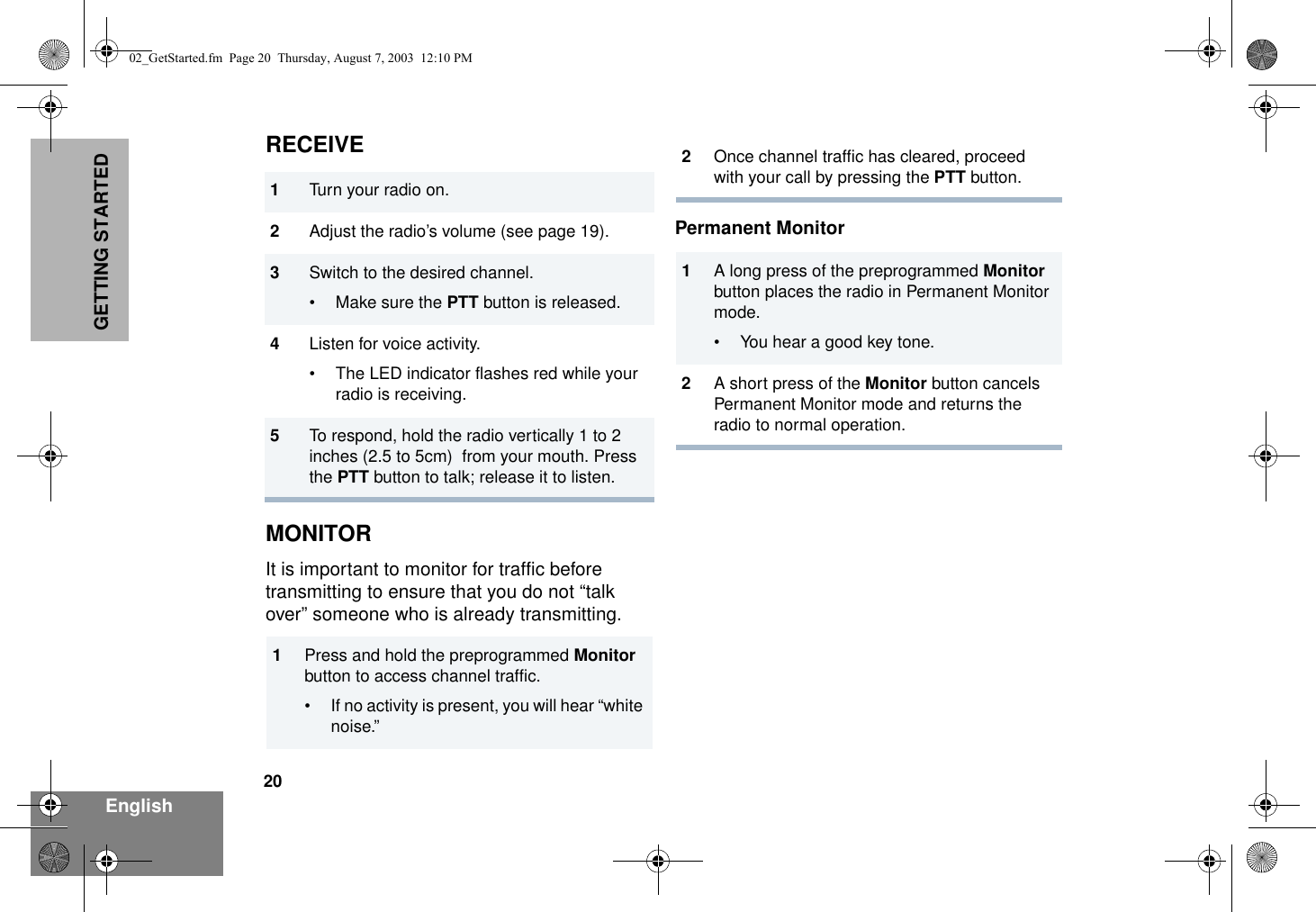
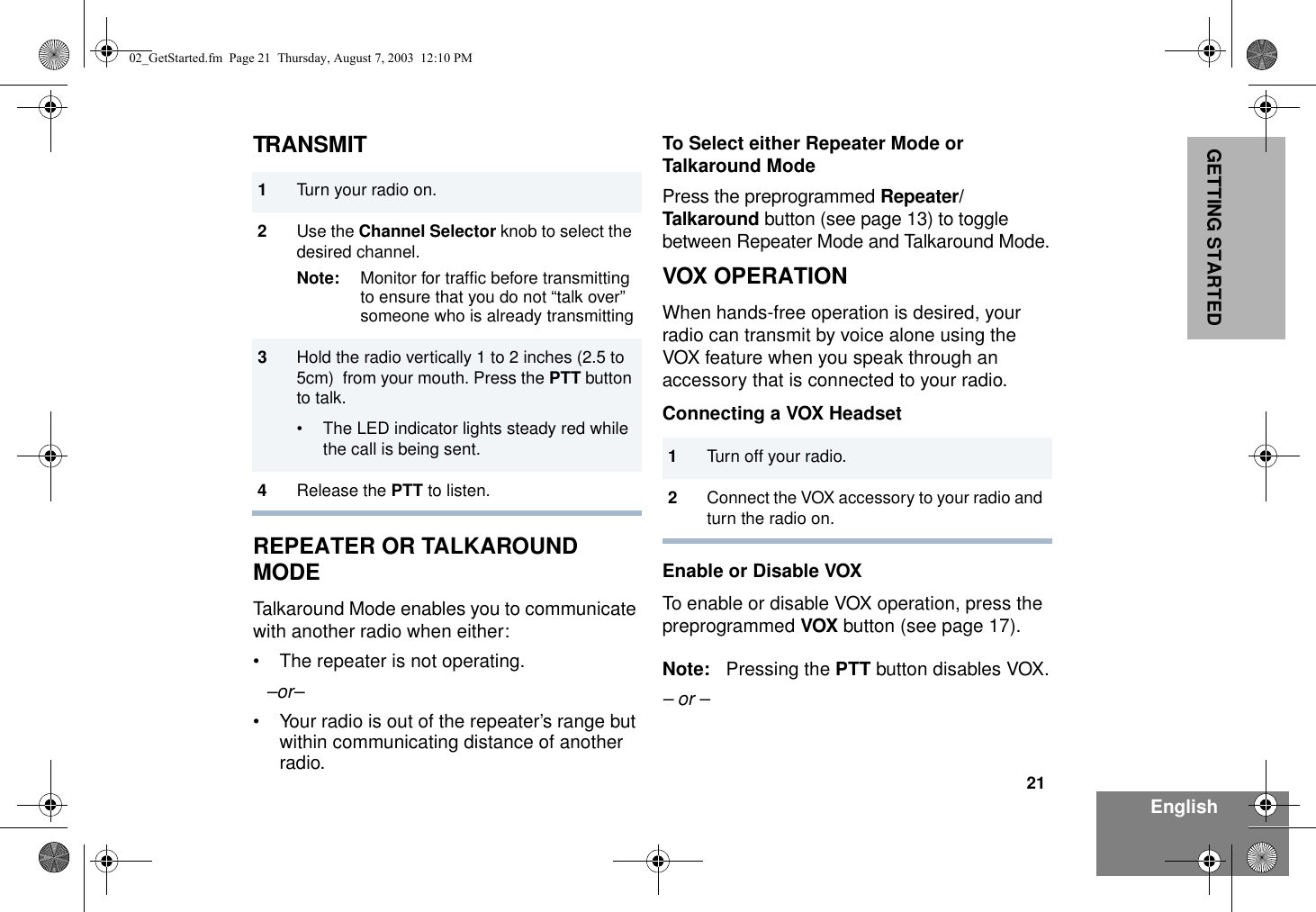
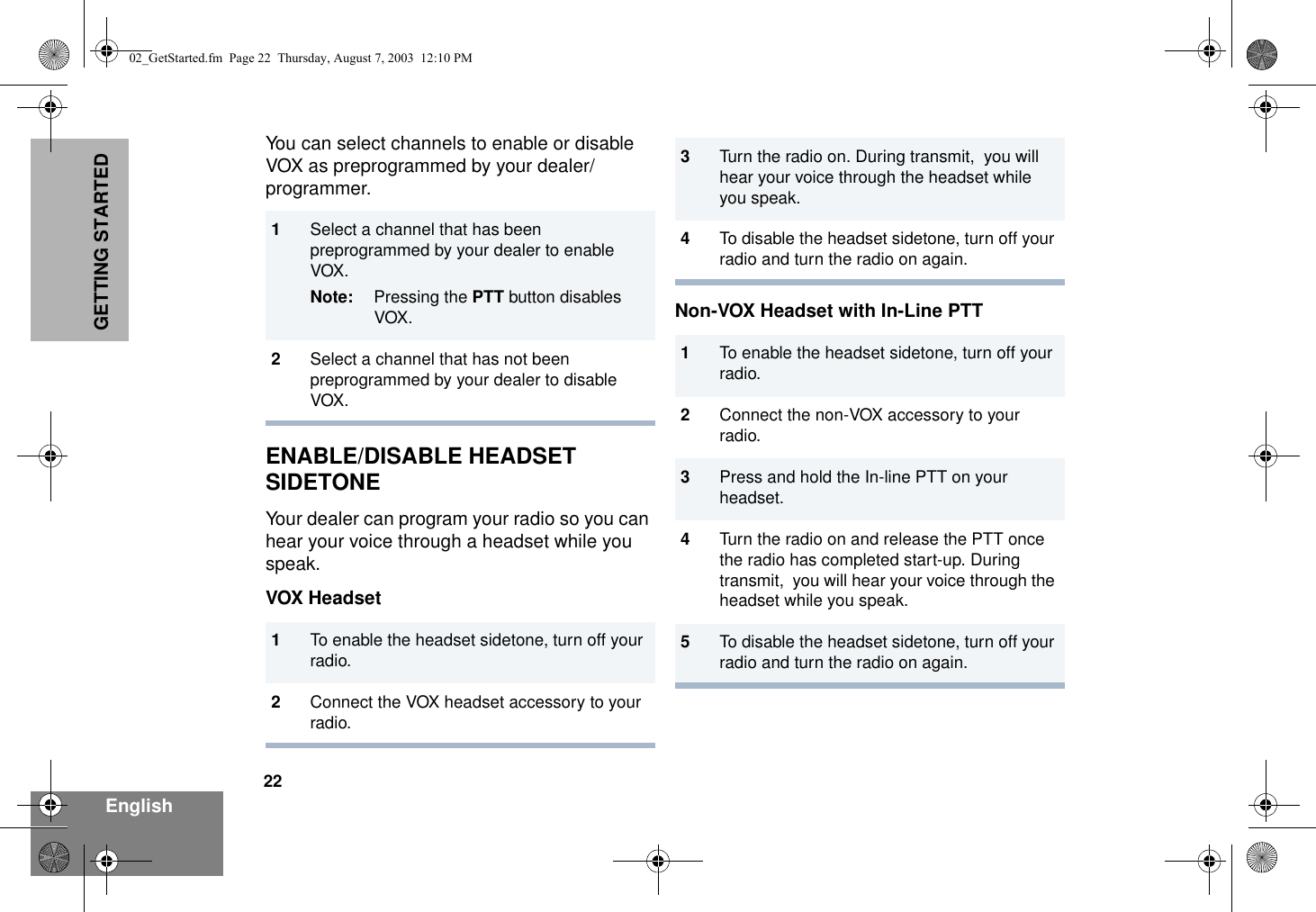
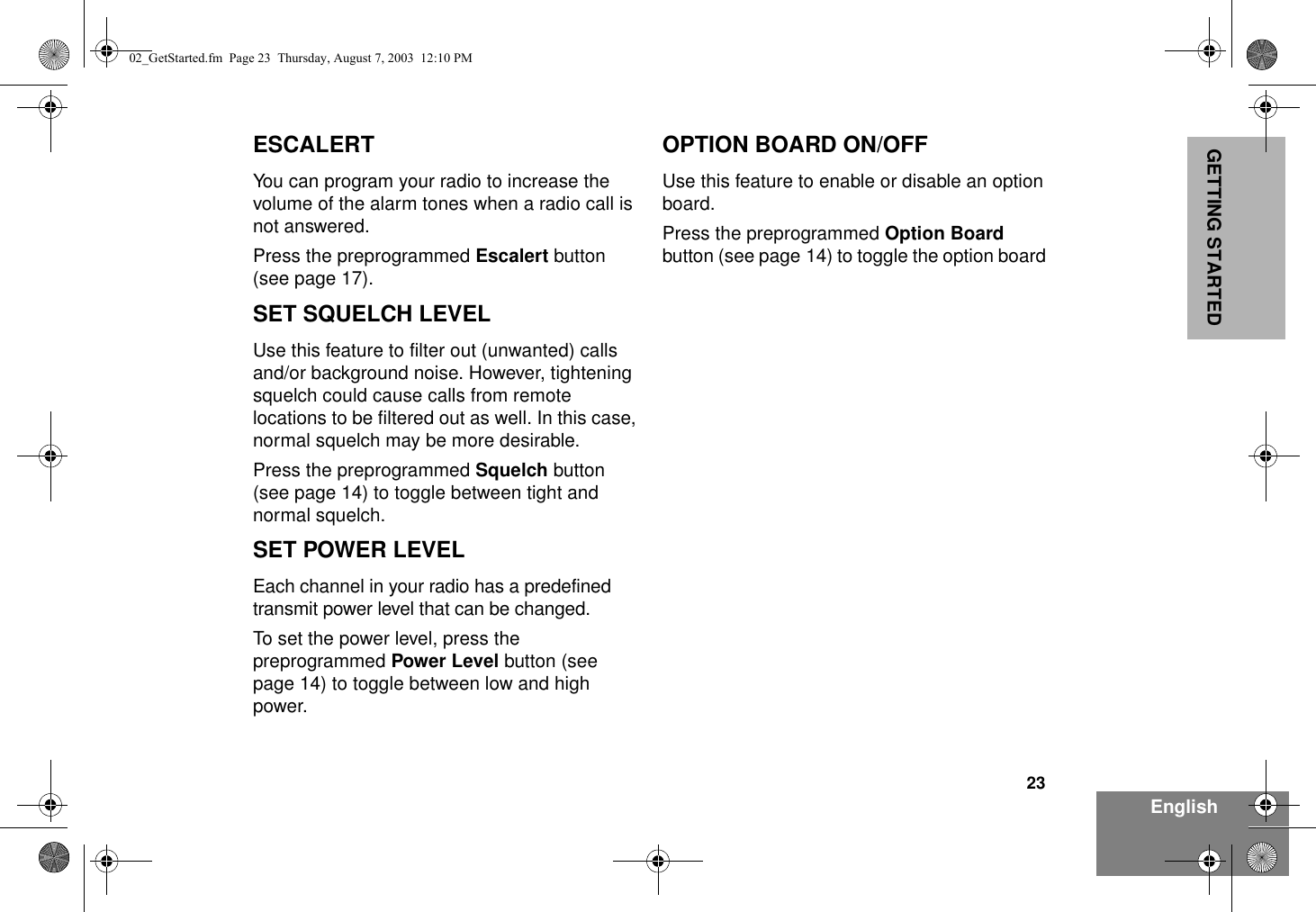
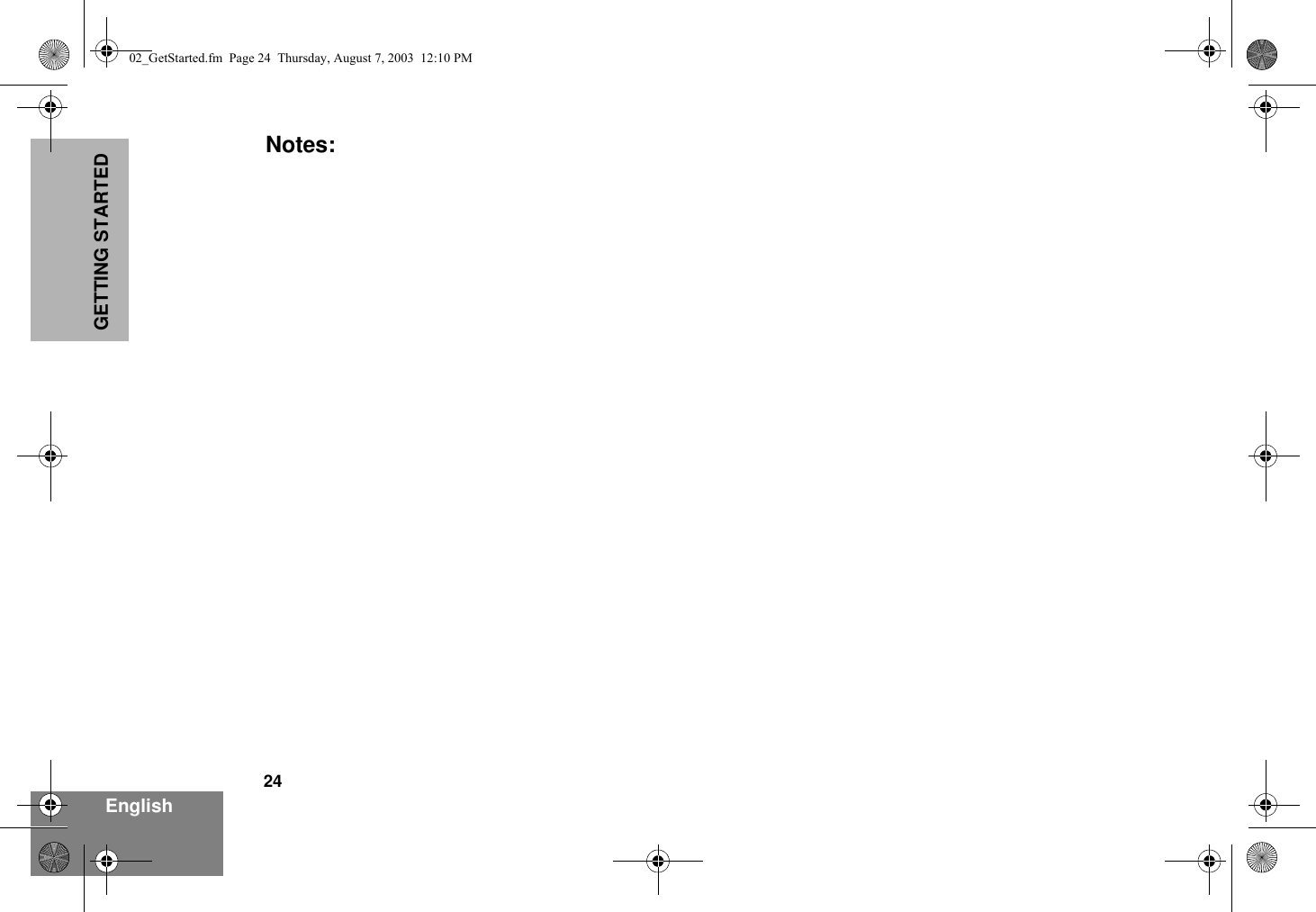
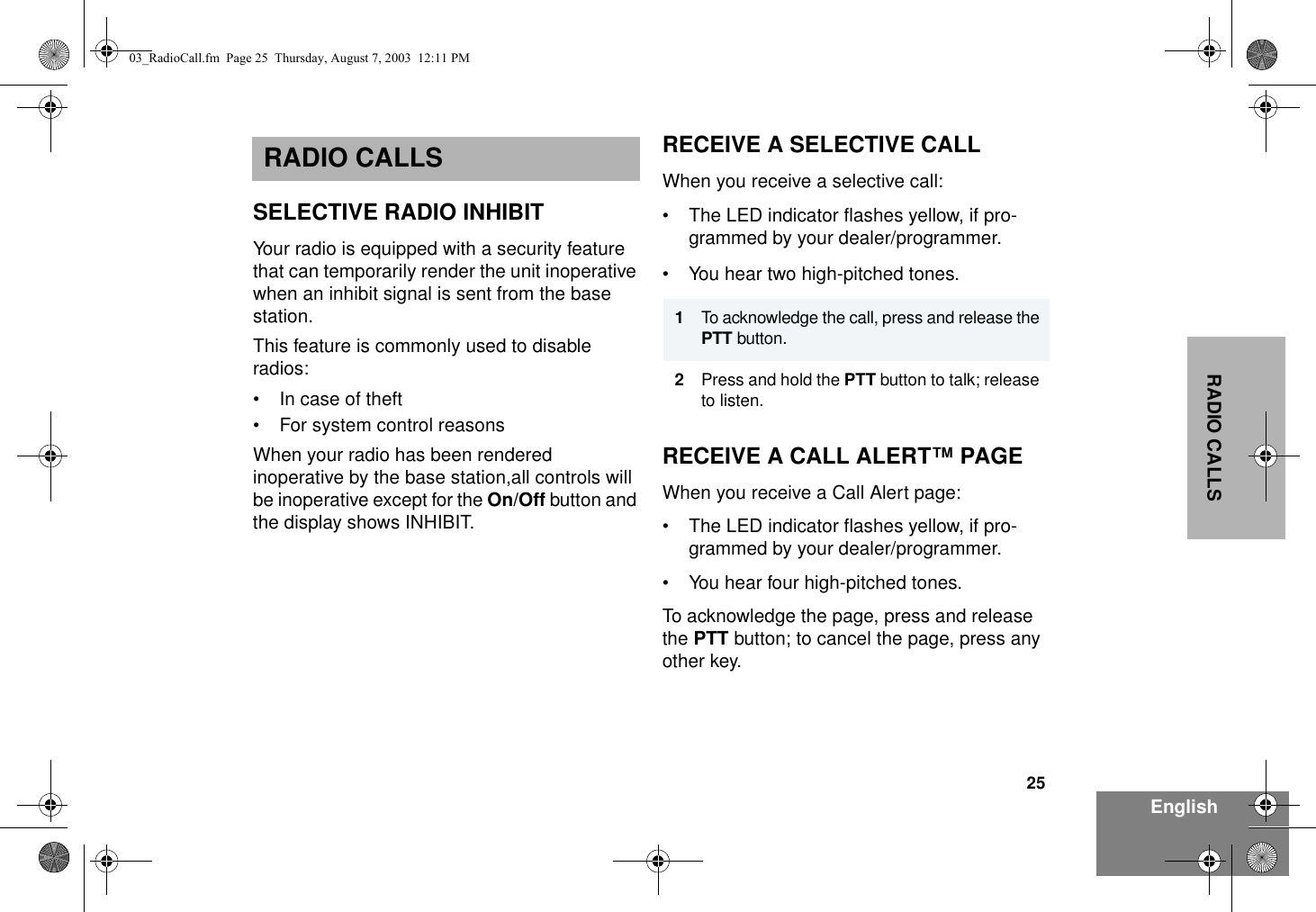
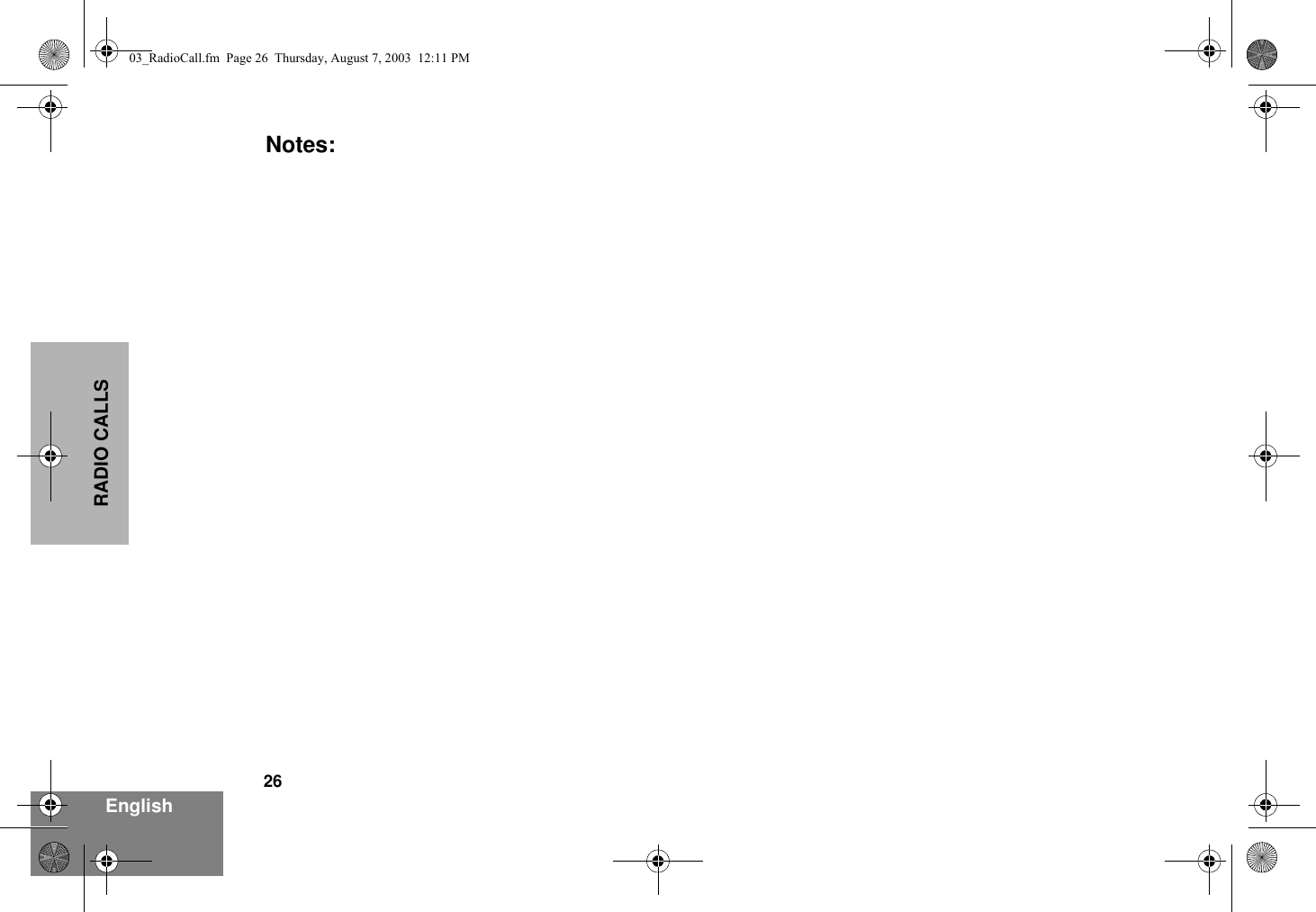
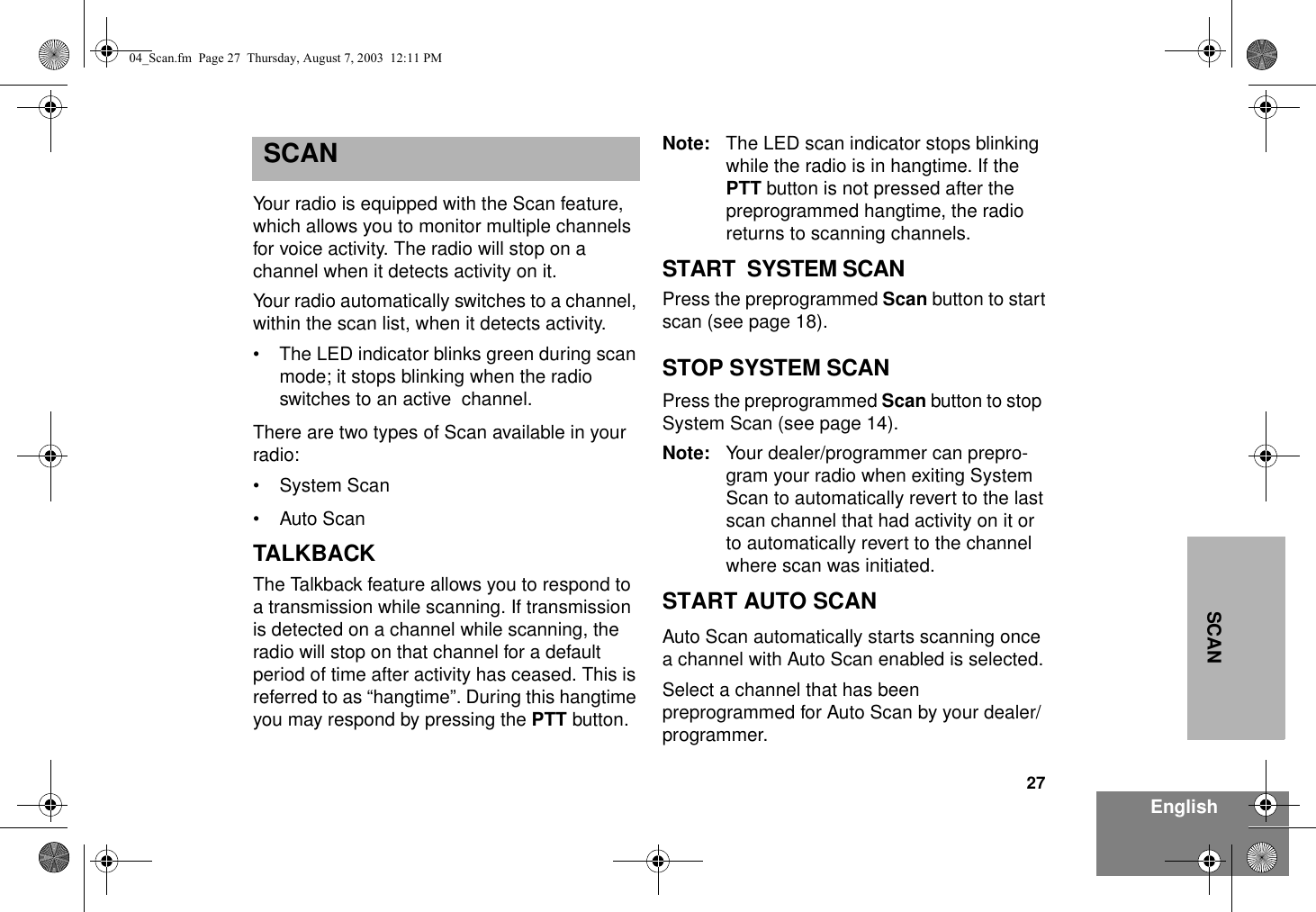
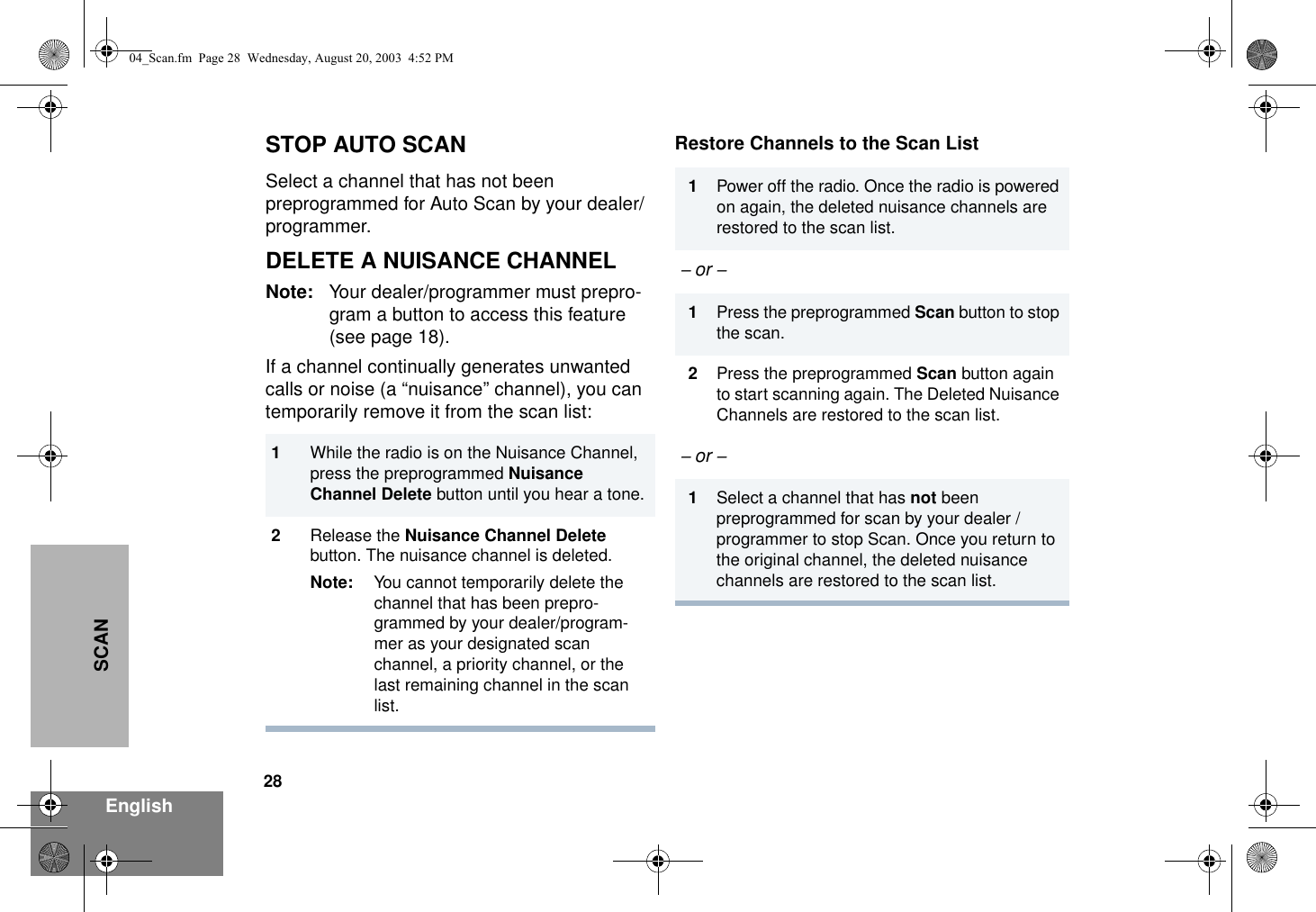
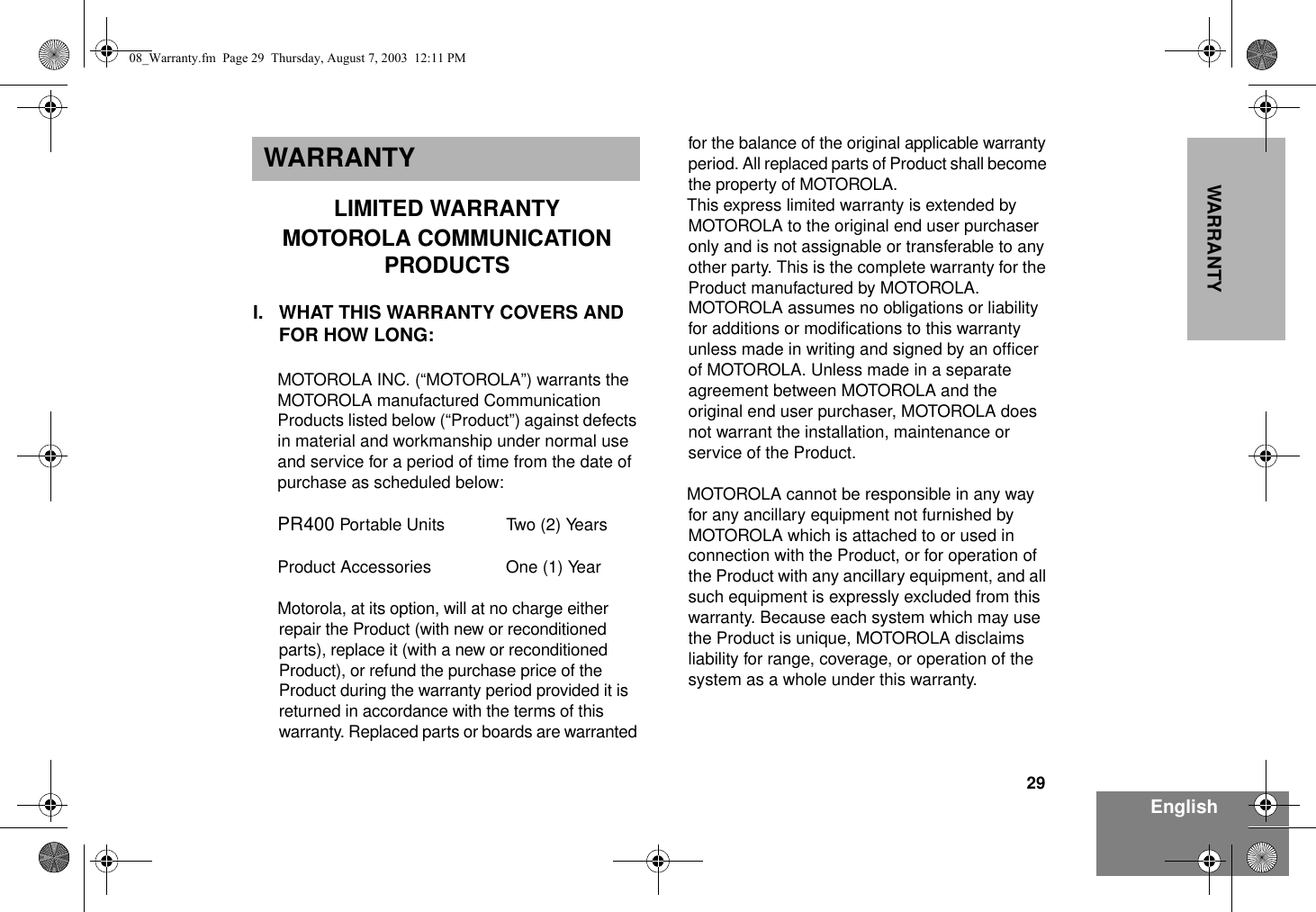
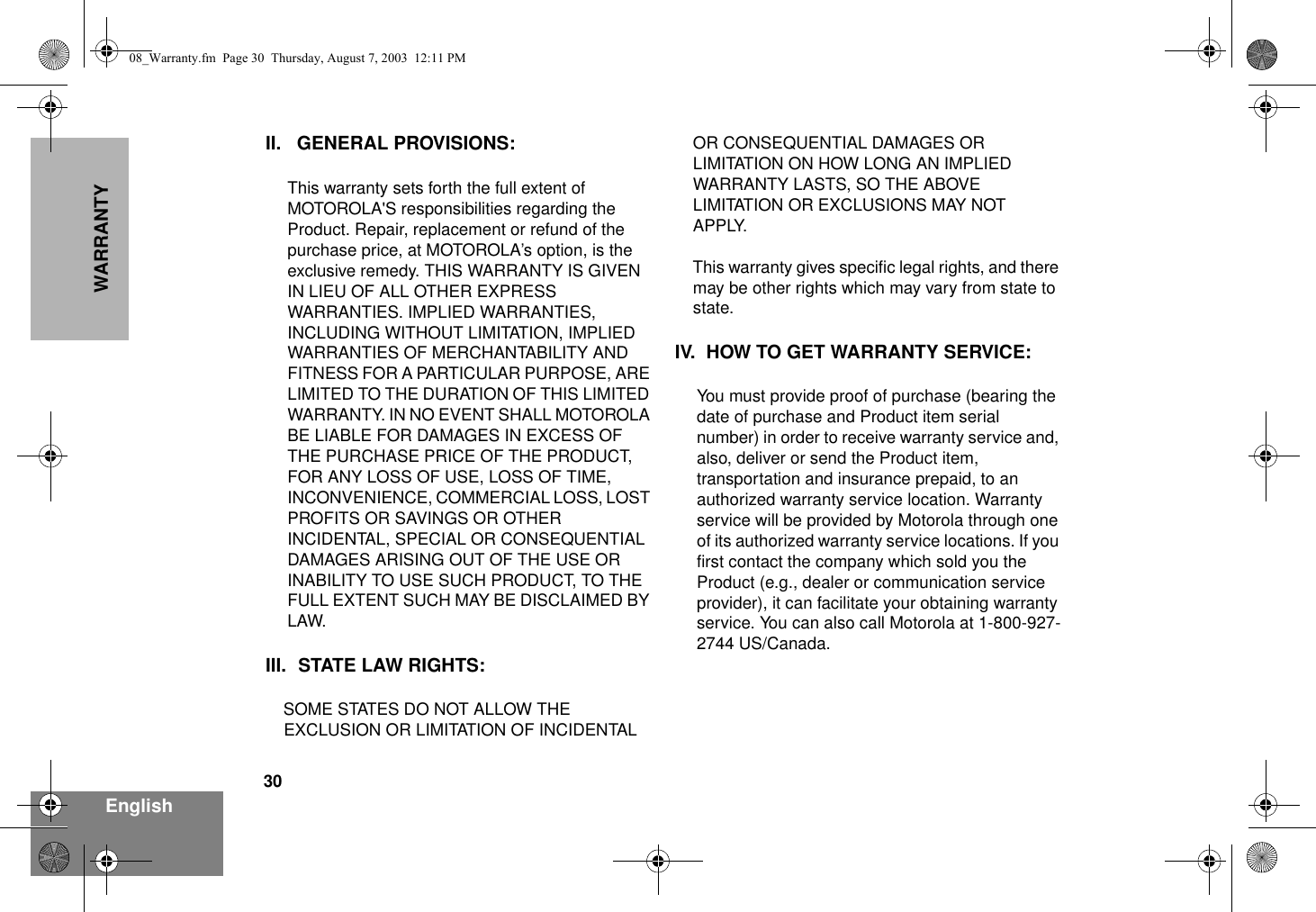
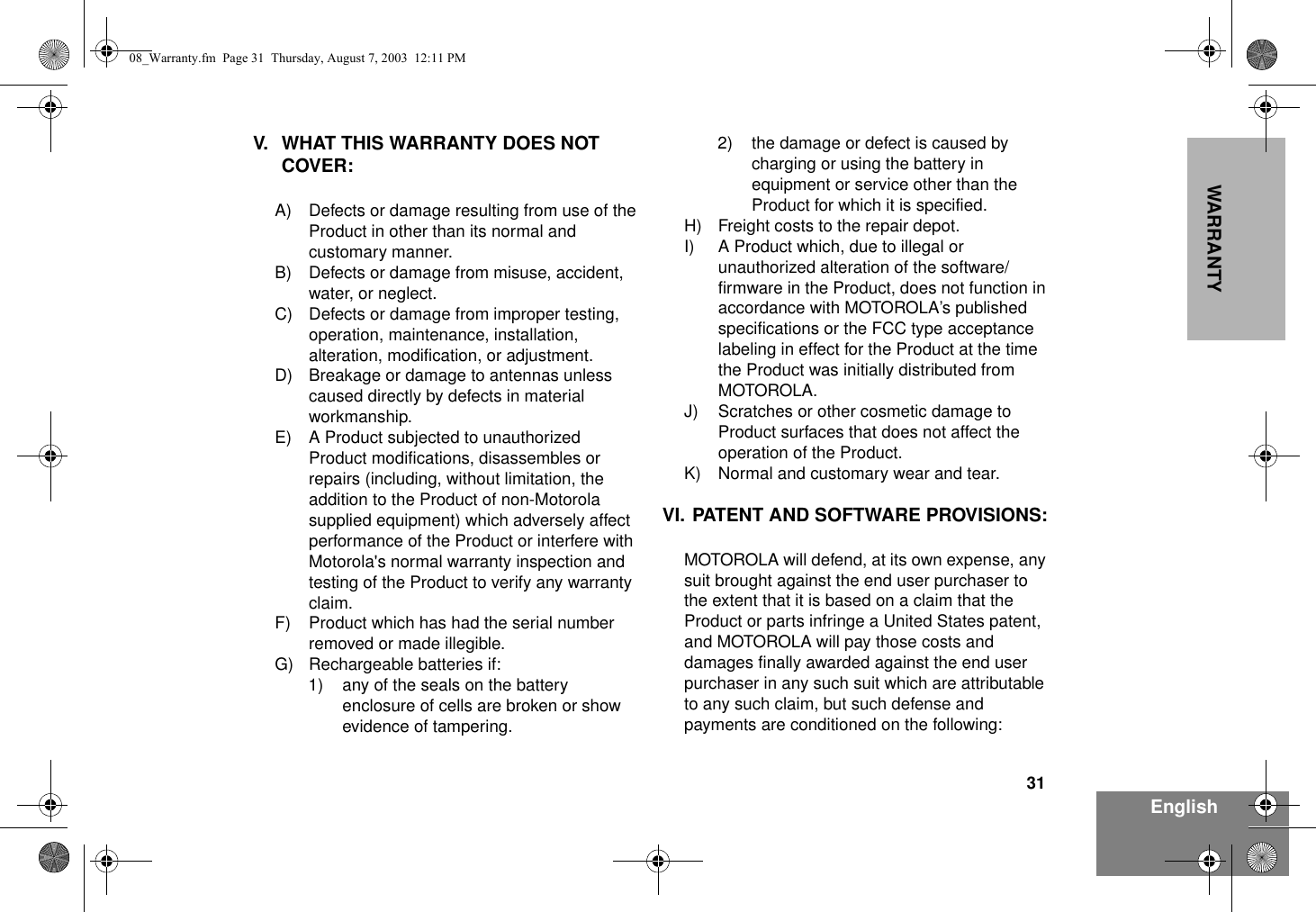
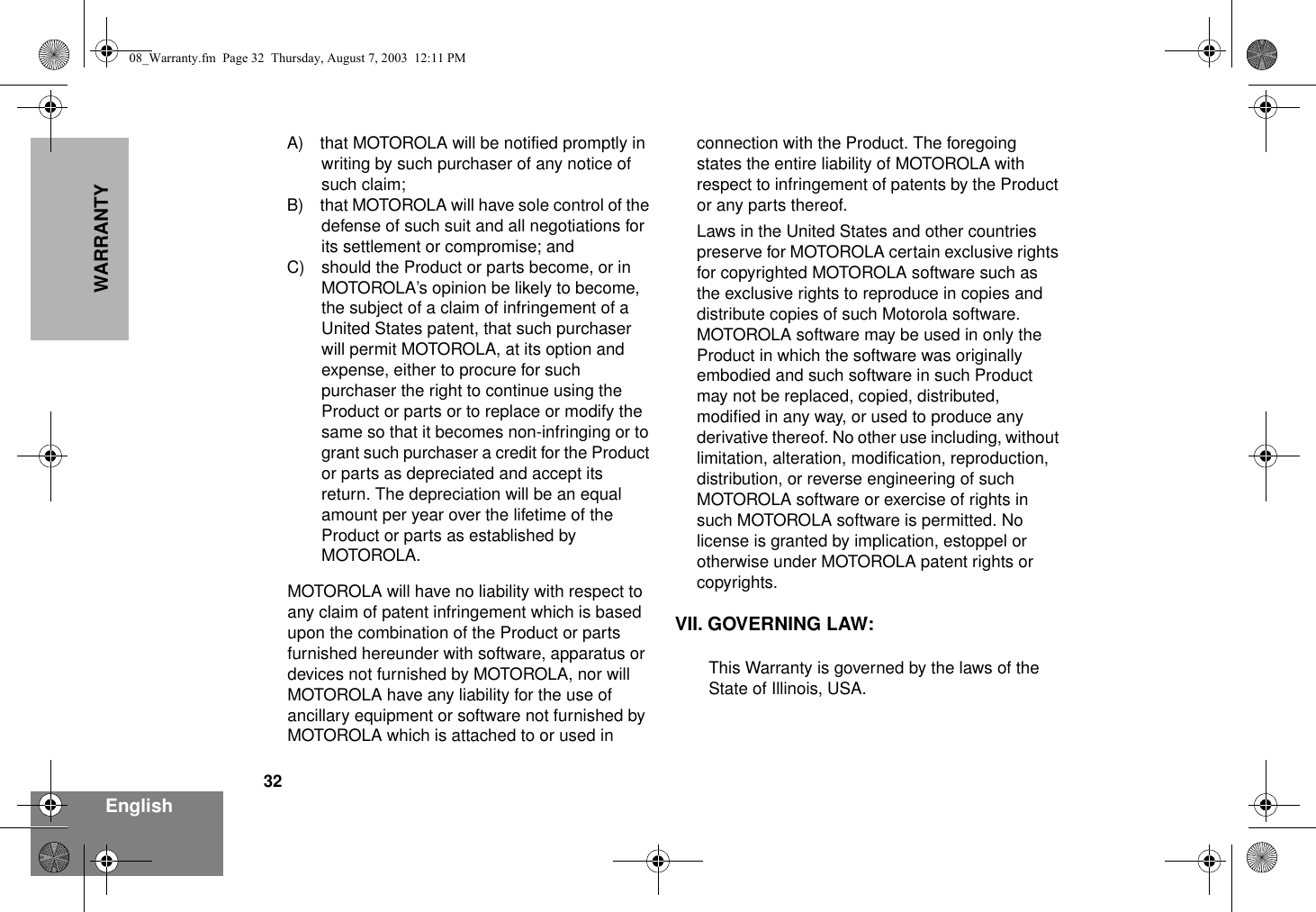
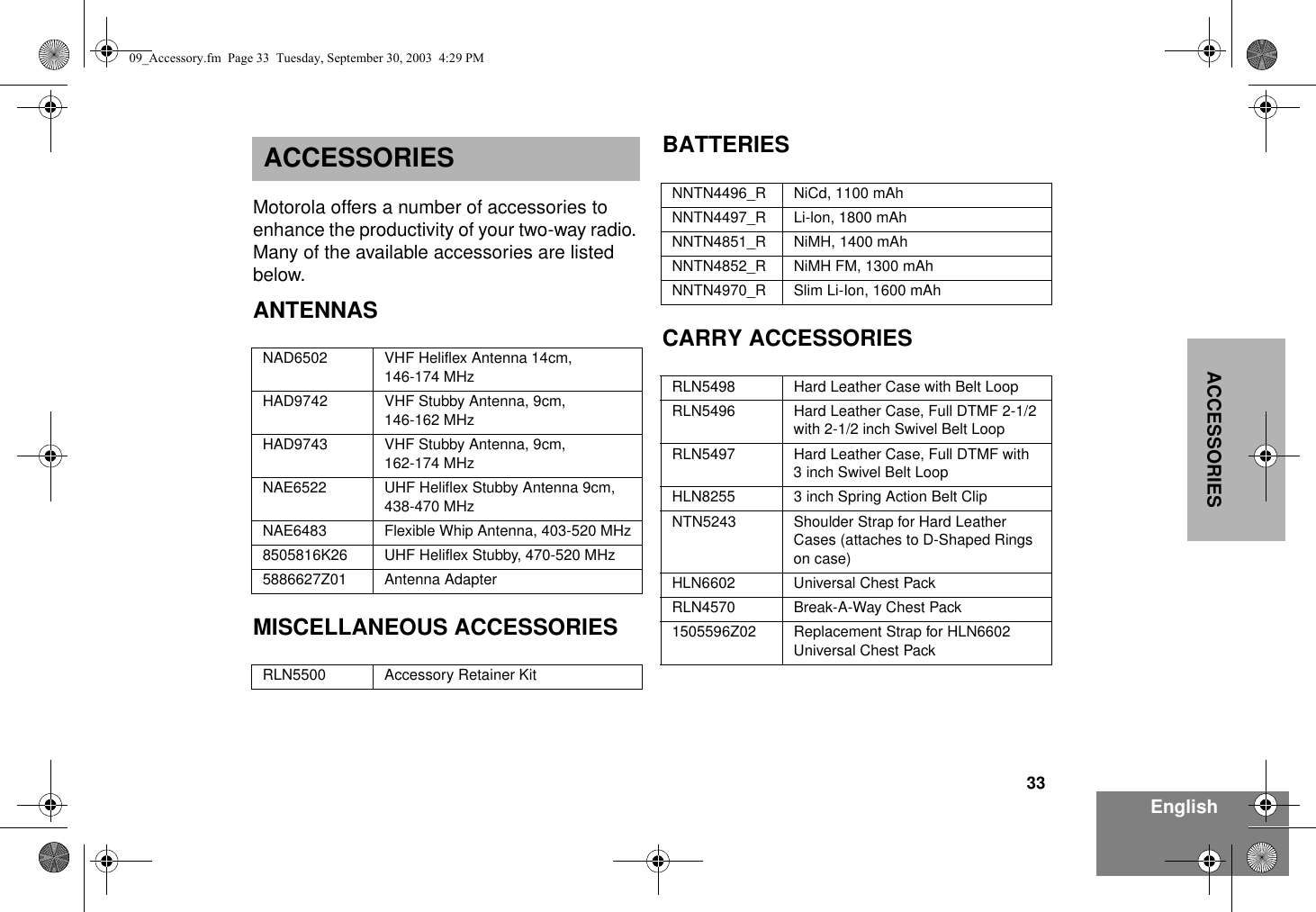
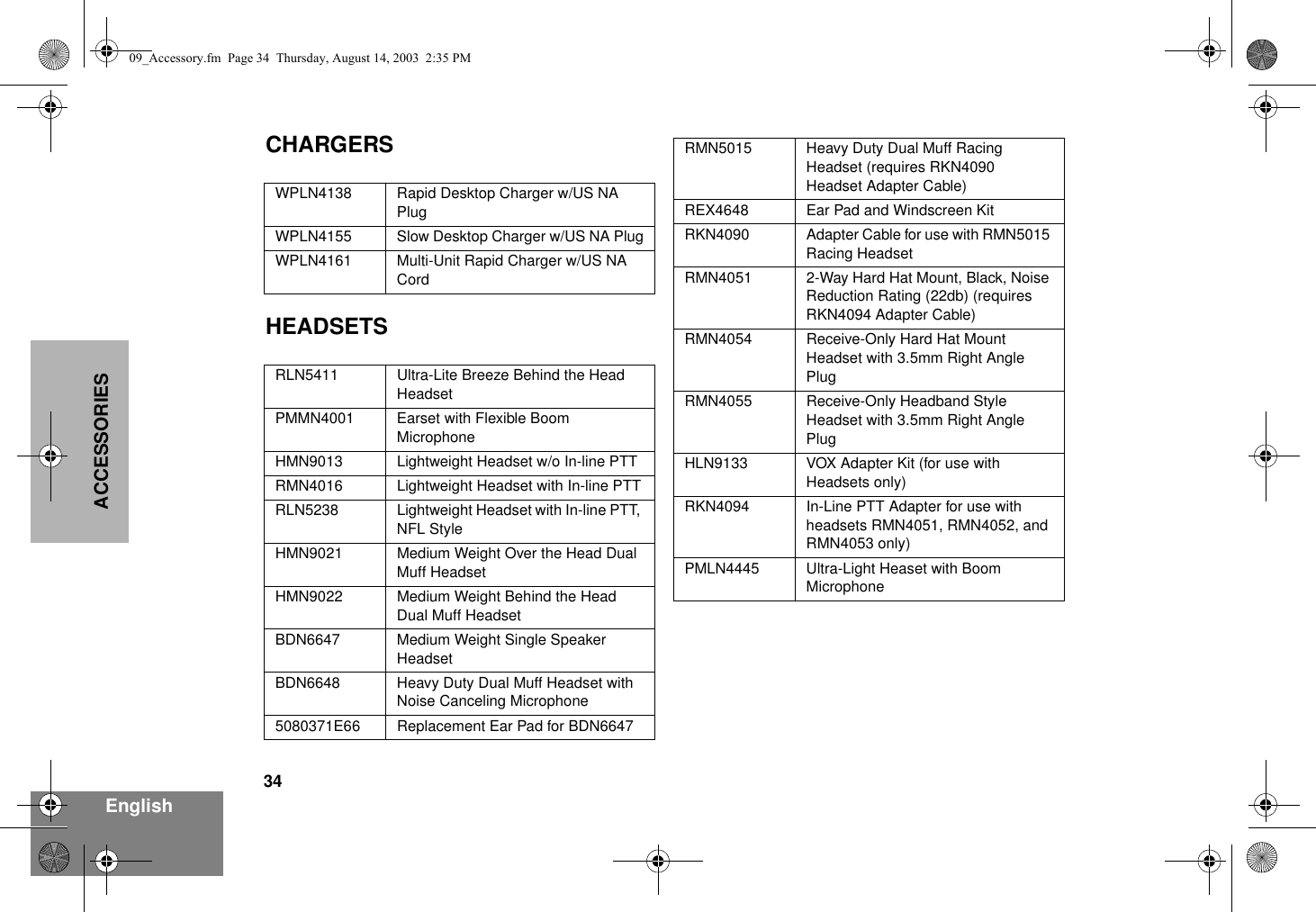
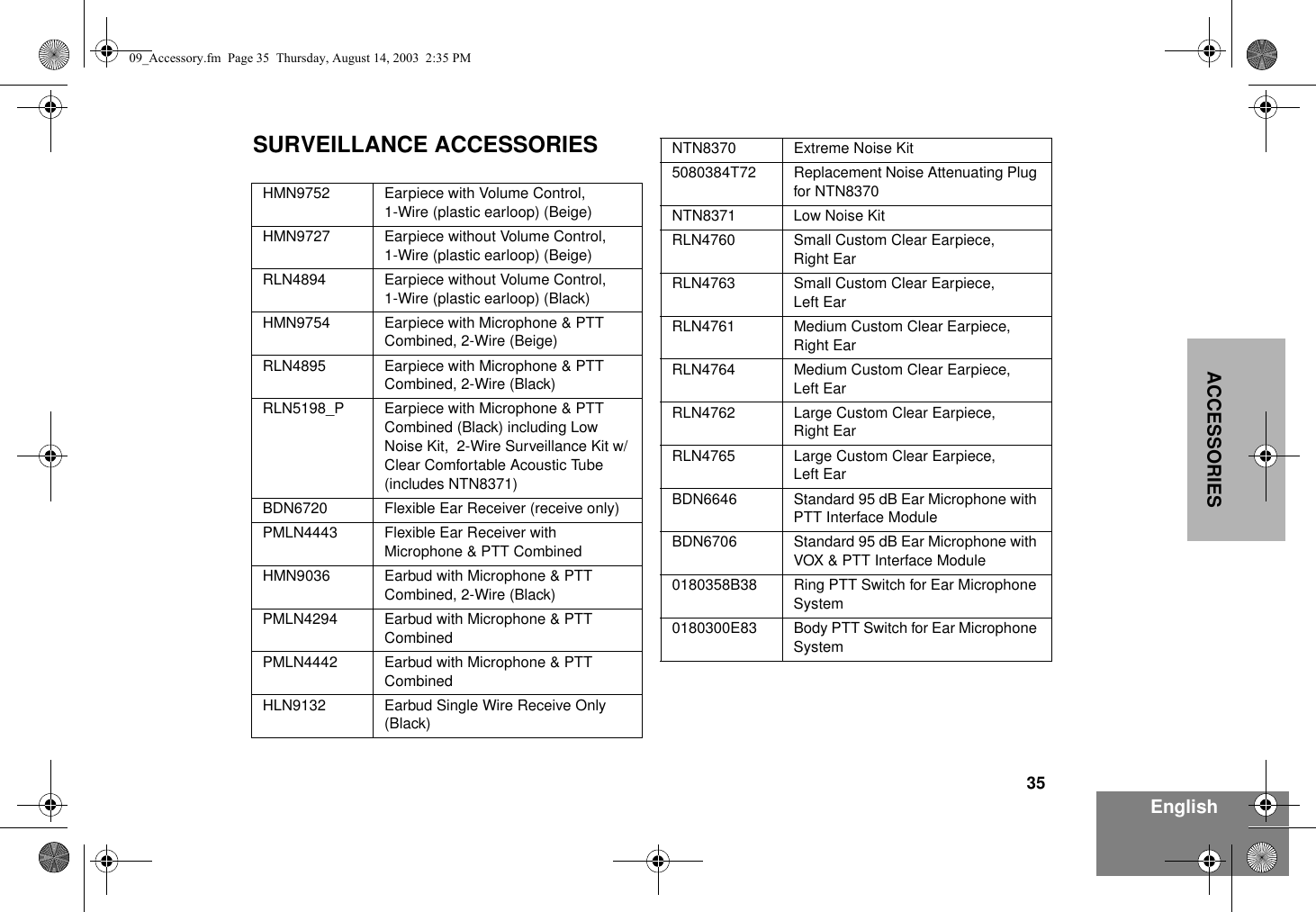
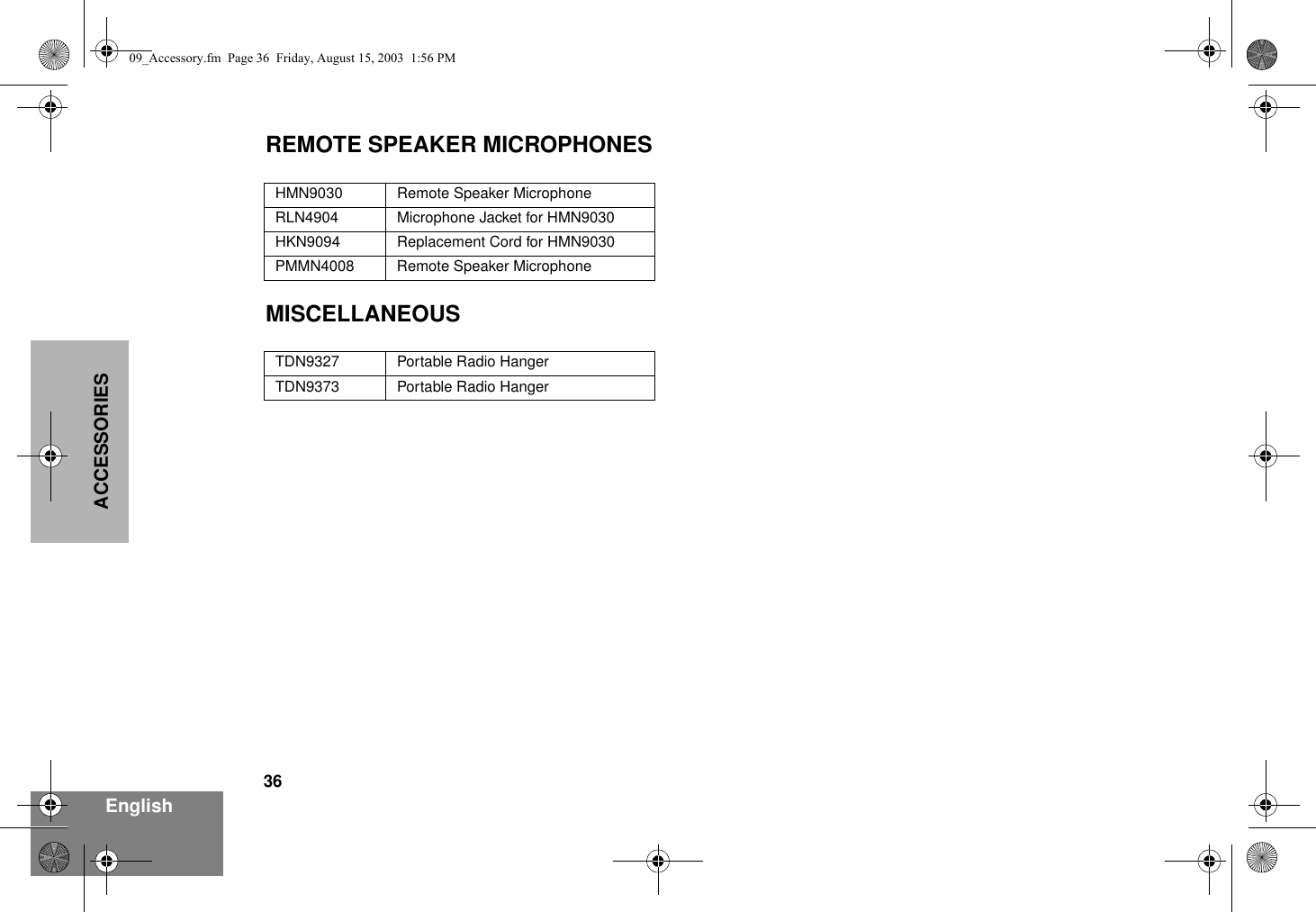
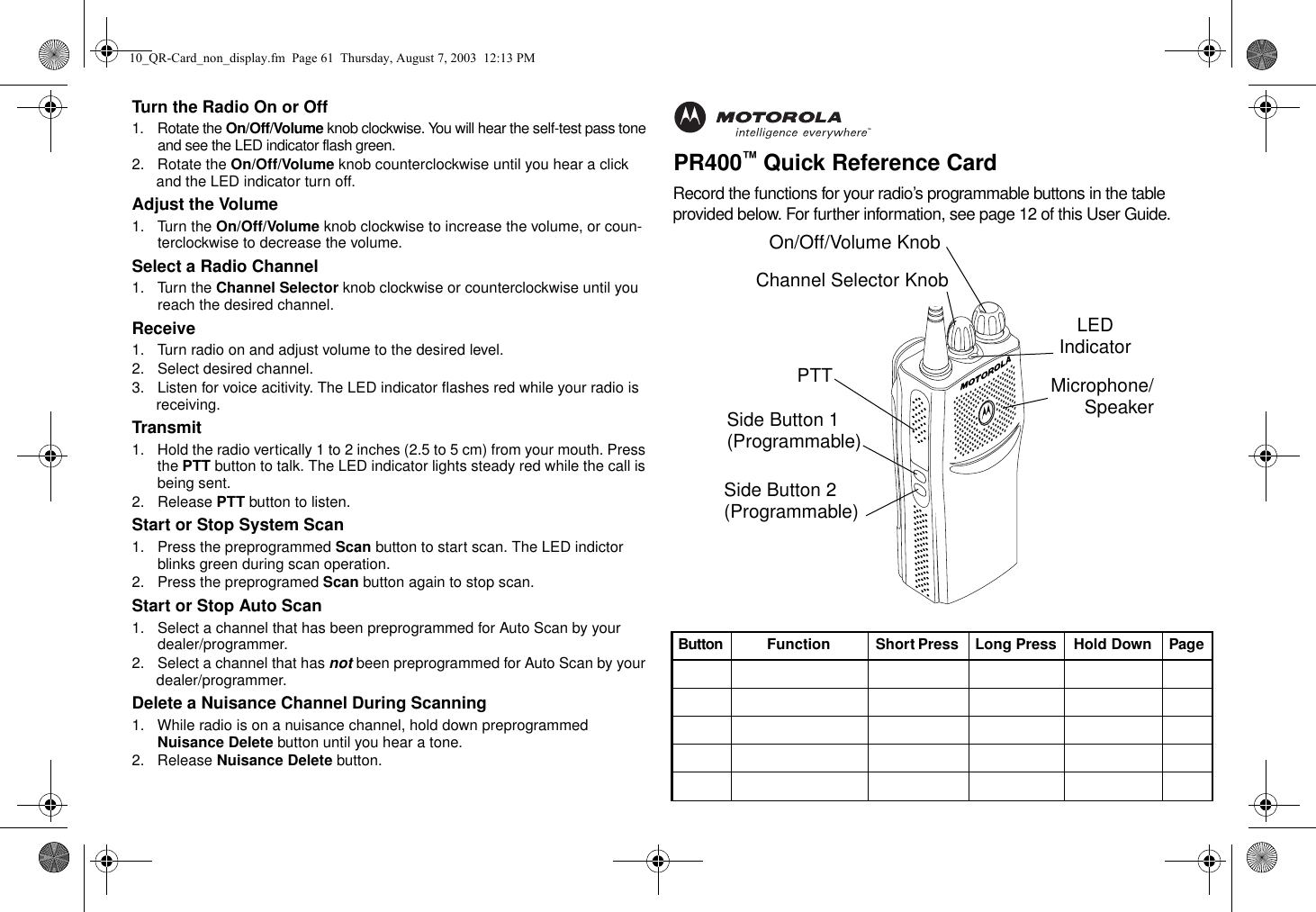
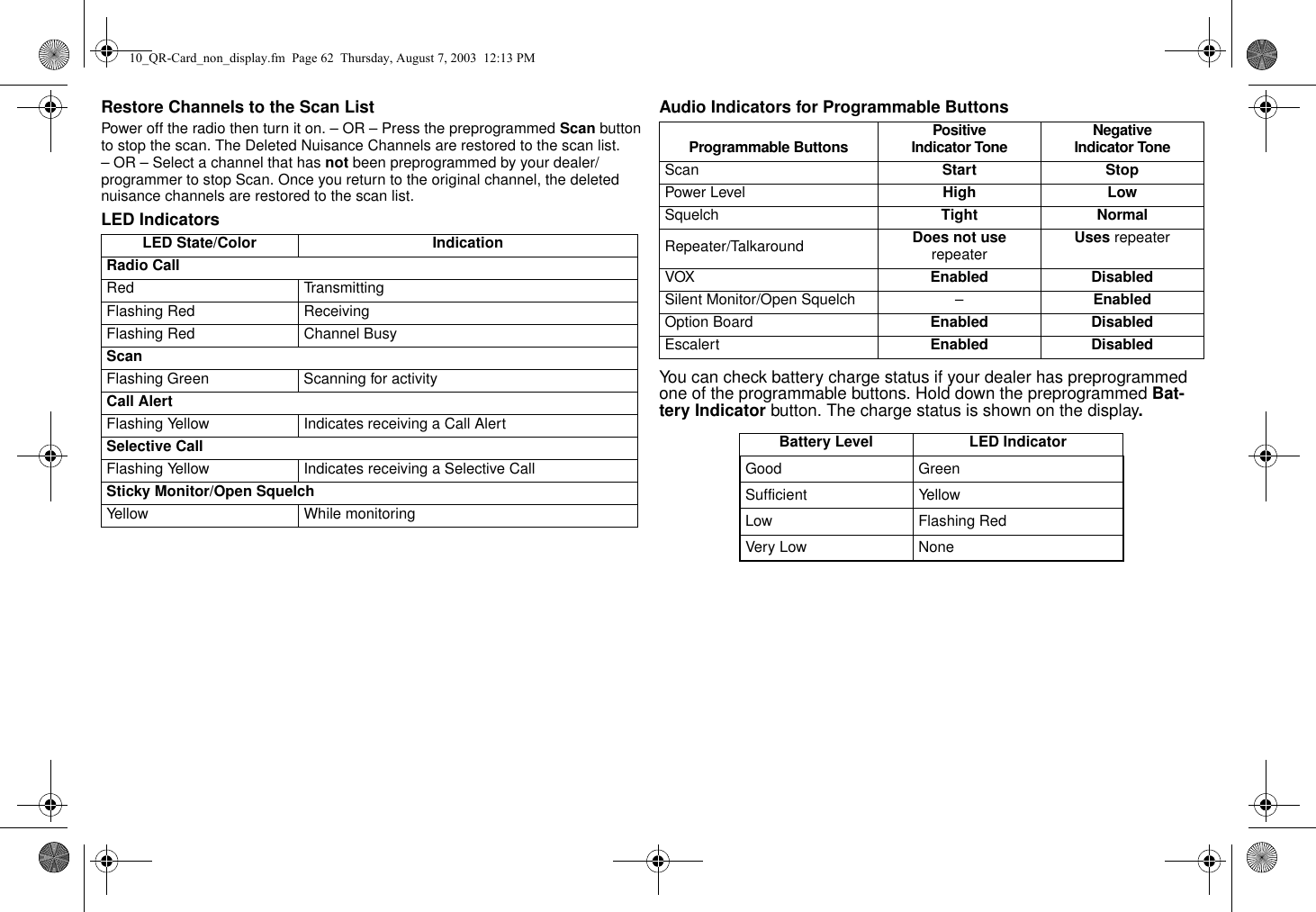
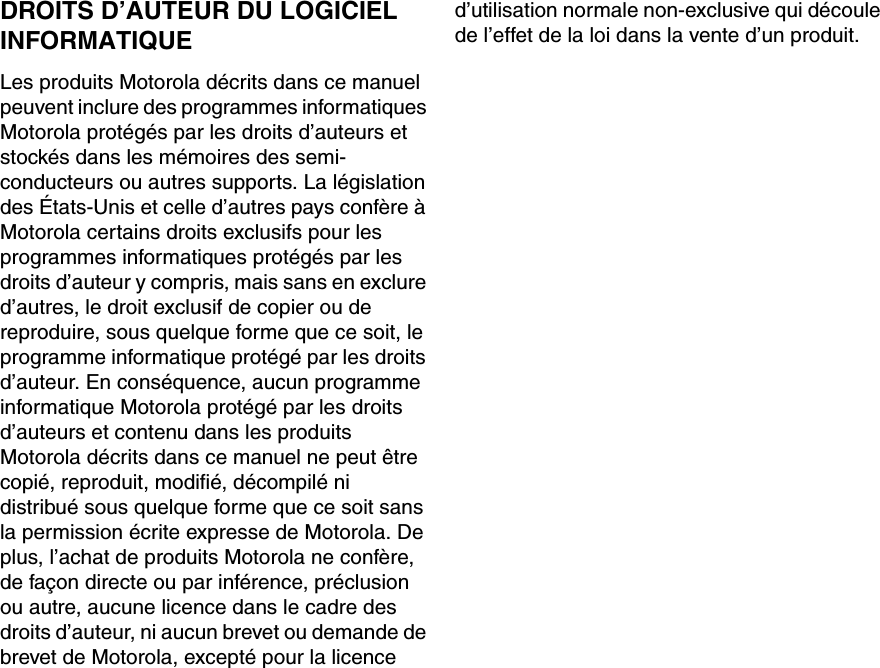
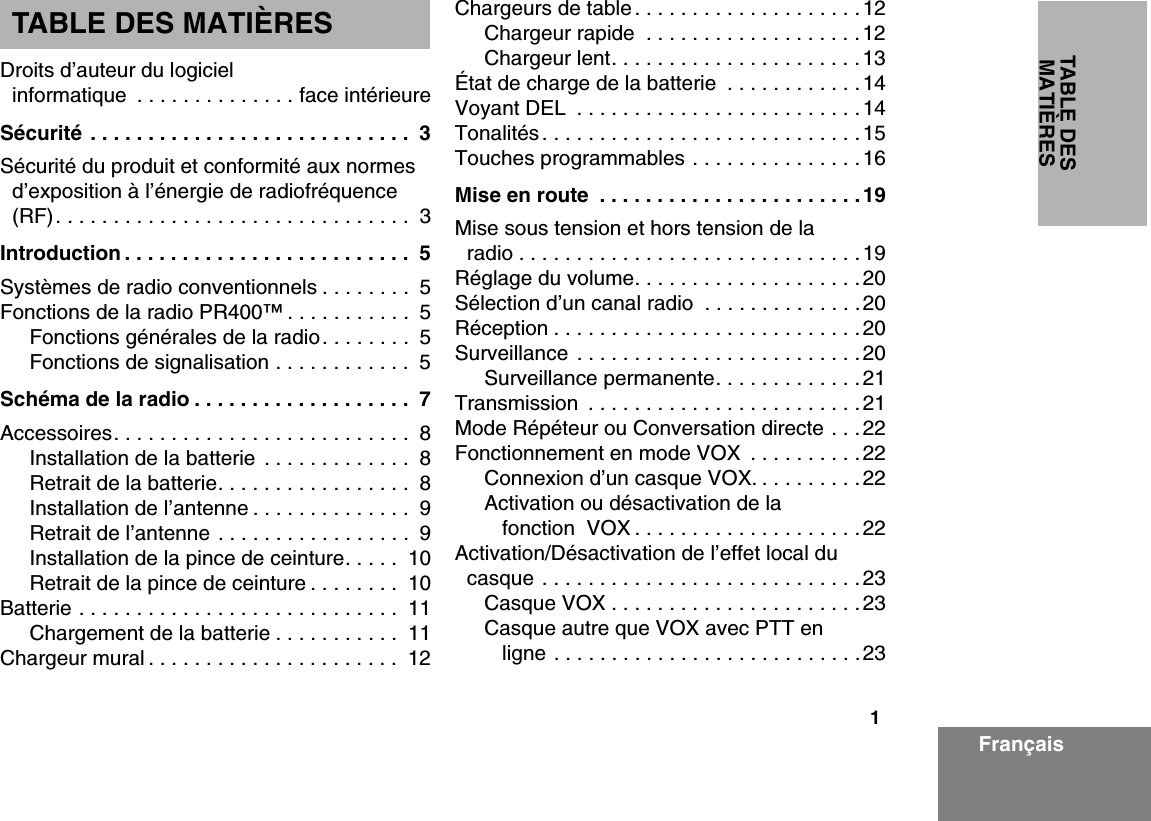
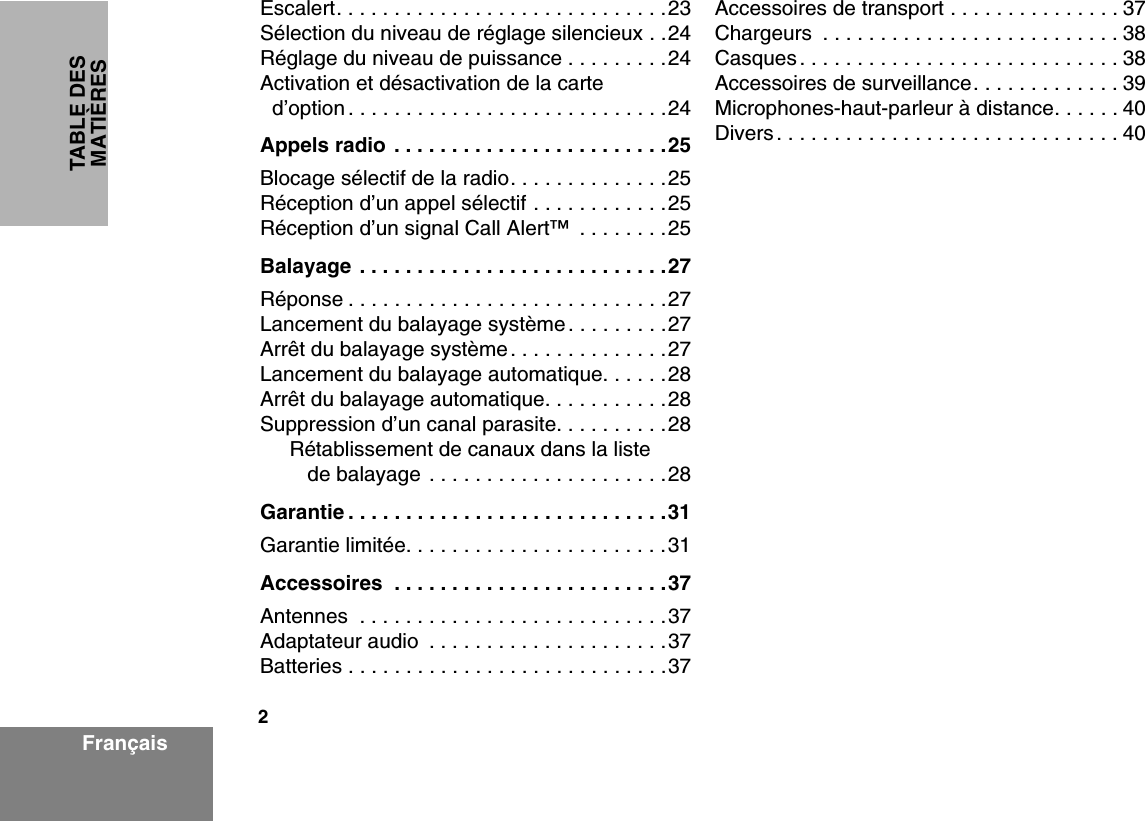
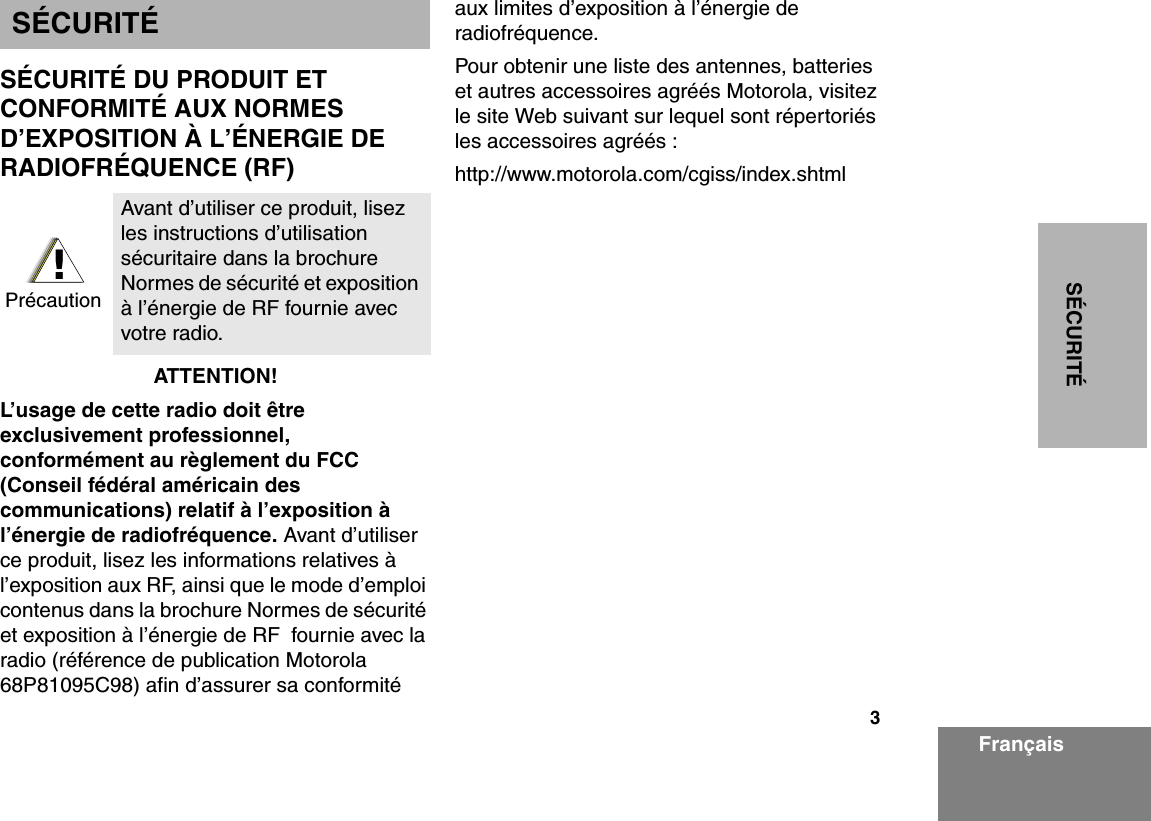

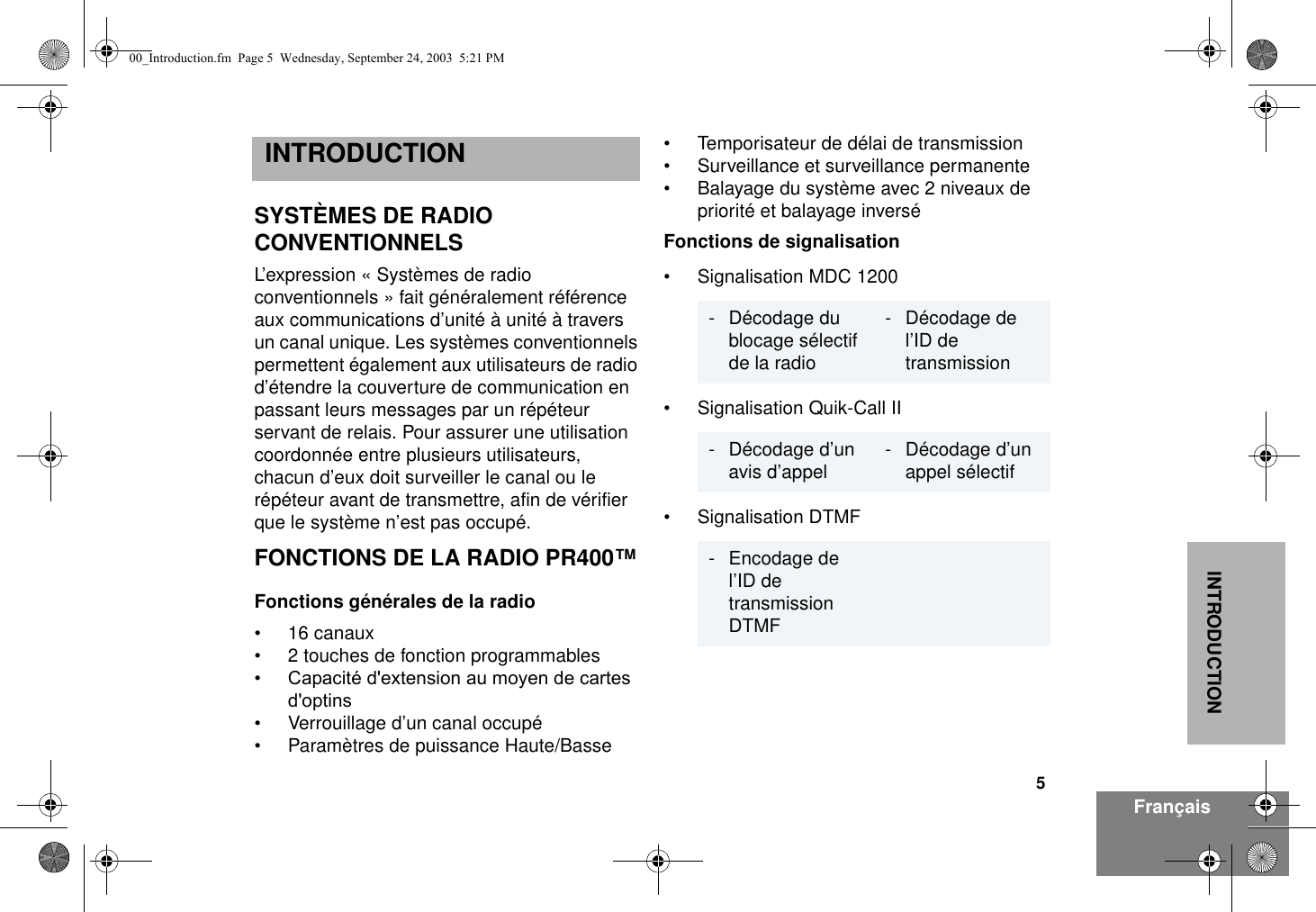

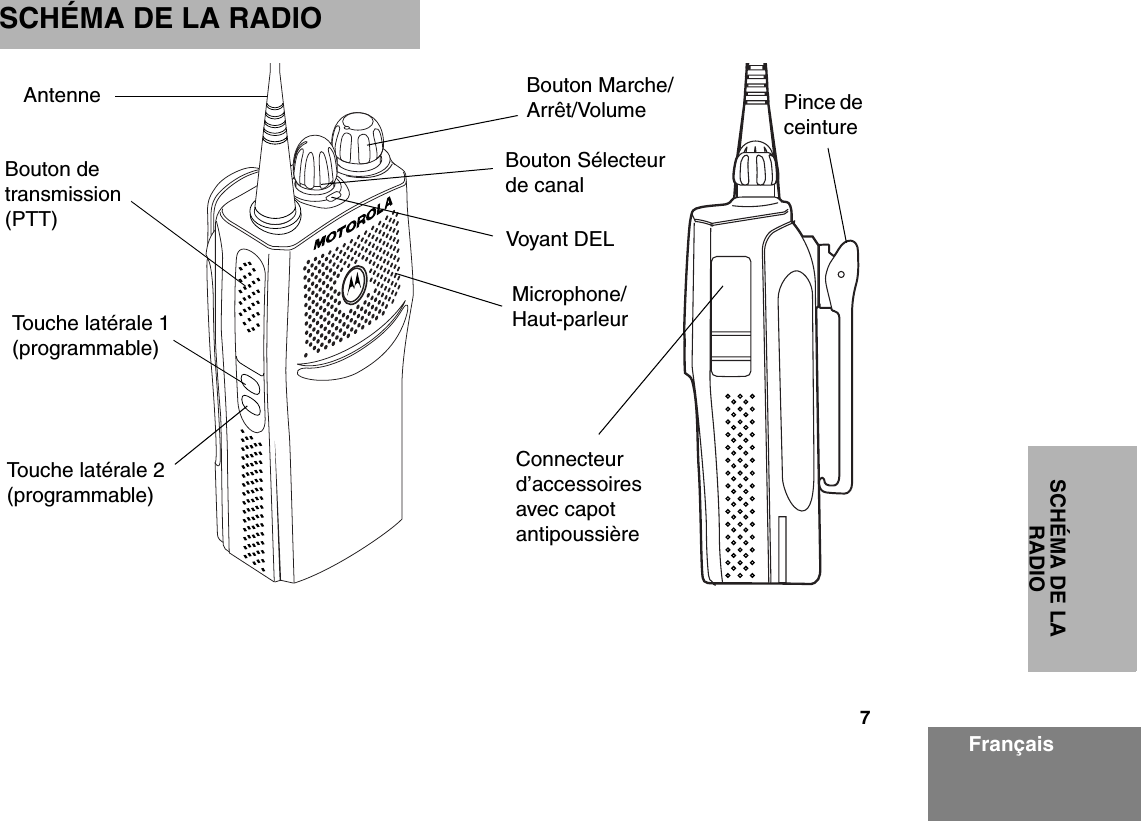
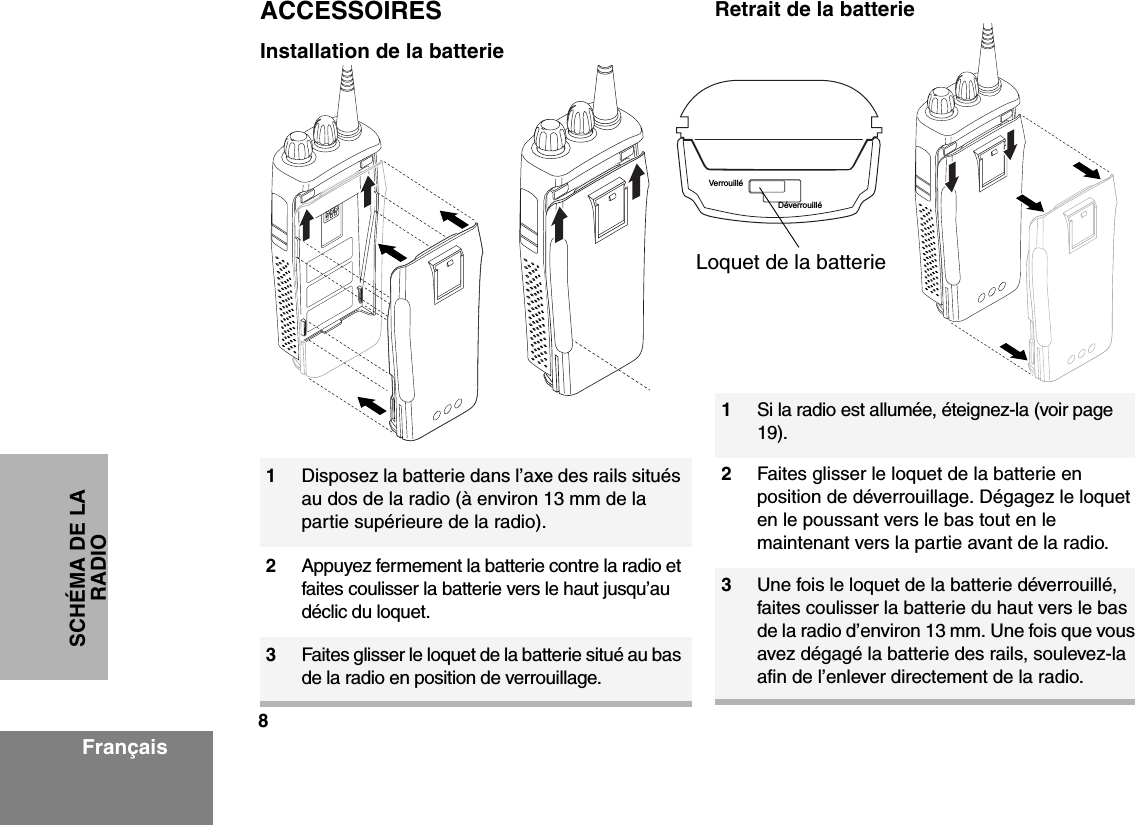
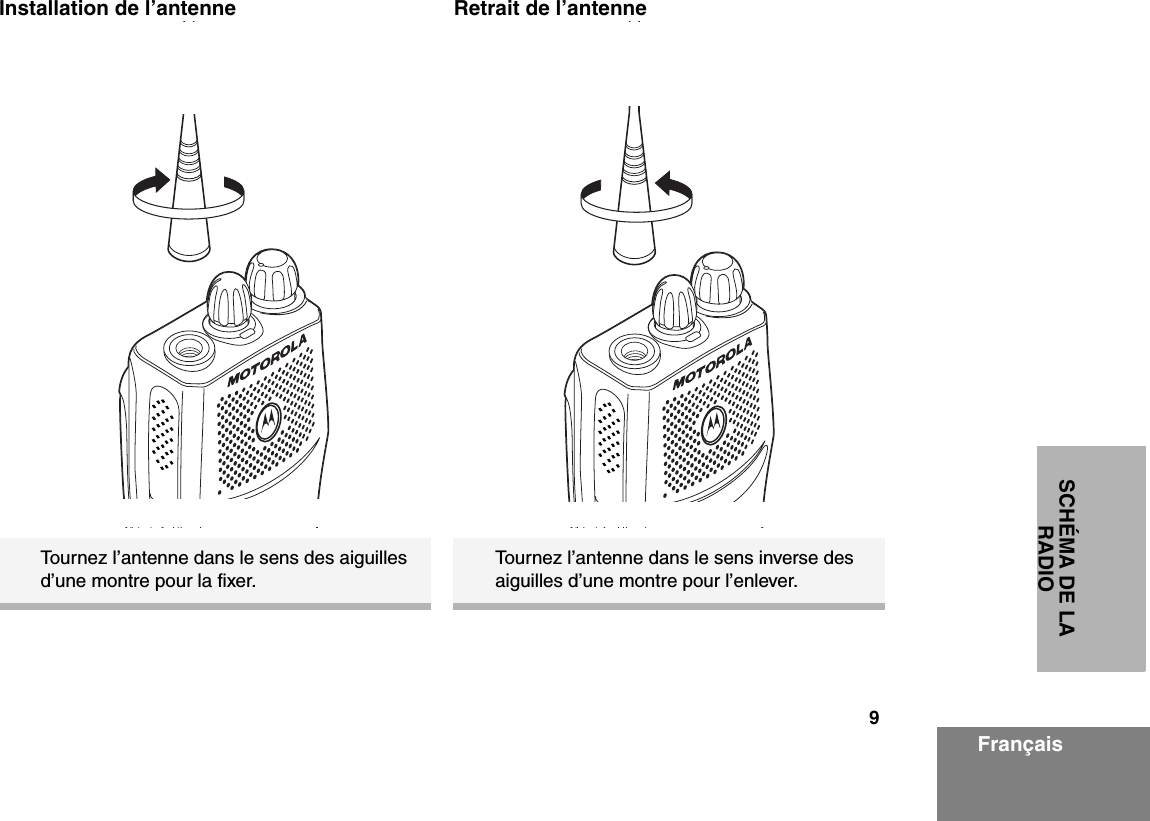
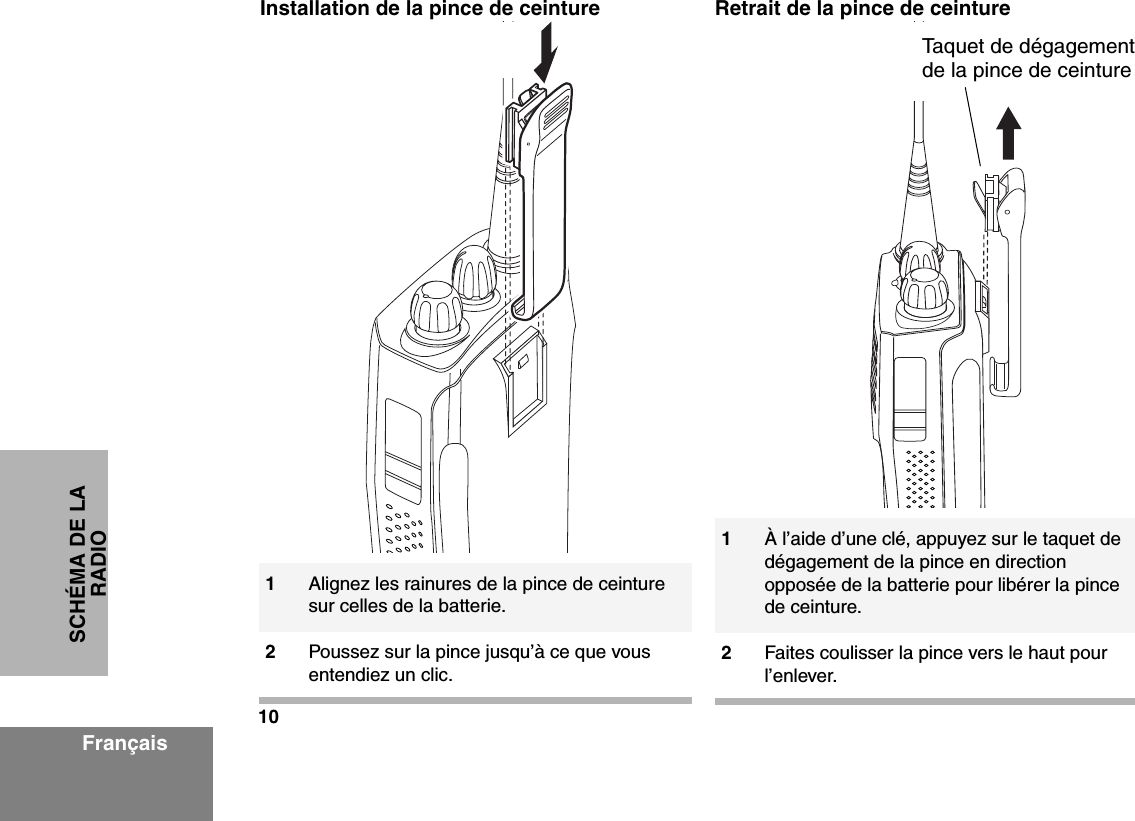
![11SCHÉMA DE LA RADIOFrançaisBATTERIEChargement de la batterieCette radio fonctionne avec une batterie rechargeable au nickel-cadmium (NICd), au nickel-hydrure métallique (NiMH), ou au lithium-ion (Li-Ion). Pour une capacité et une performance optimales de la batterie, chargez-la avant chaque utilisation. La batterie a été spécialement conçue pour être utilisée avec un chargeur Motorola. Le fait de charger la batterie dans un appareil autre que Motorola peut endommager la batterie et en annuler la garantie.Remarque : Lors de la charge d’une batterie fixée à une radio, éteignez la radio pour assurer une charge complète.Dans la mesure du possible, la batterie doit être conservée à environ 25 °C (77 °F) (température de la pièce). Charger une batterie froide (en dessous de 10 °C [50 °F]) peut provoquer une fuite d’électrolyte et finalement entraîner une panne de la batterie. Charger une batterie chaude (au-dessus de 35 °C [95 °F]) réduit la capacité de décharge de la batterie, ce qui affecte les performances de la radio. Les chargeurs de batterie rapides Motorola sont dotés d’un circuit de détection de température permettant d’assurer que les batteries sont bien chargées dans les limites de température ci-haut mentionnées.Si la batterie est neuve ou que son niveau de charge est très faible, vous devez la charger avant de pouvoir l’utiliser. Lorsque le niveau de charge de la batterie est bas et que la radio est en mode de transmission, le voyant DEL rouge clignote. Dès que vous relâchez le bouton PTT, une tonalité d’alerte se fait entendre.Remarque : Les batteries sont expédiées non-chargées depuis l’usine. Quel que soit l’état de la batterie indiqué par le chargeur, il est toujours préférable de charger une nouvelle batterie pendant 14 à 16 heures, avant sa première utilisation.Remarque : N’utilisez pas le chargeur mural en même temps que le chargeur de table.](https://usermanual.wiki/Motorola-Solutions/99FT3039.exhibit-08b-users-manual-pr400-non-display/User-Guide-443202-Page-53.png)
